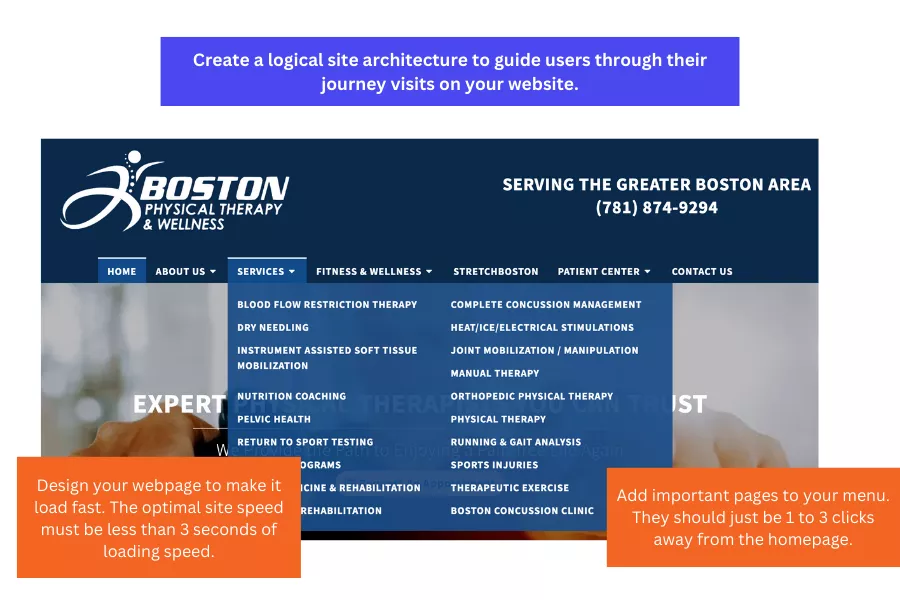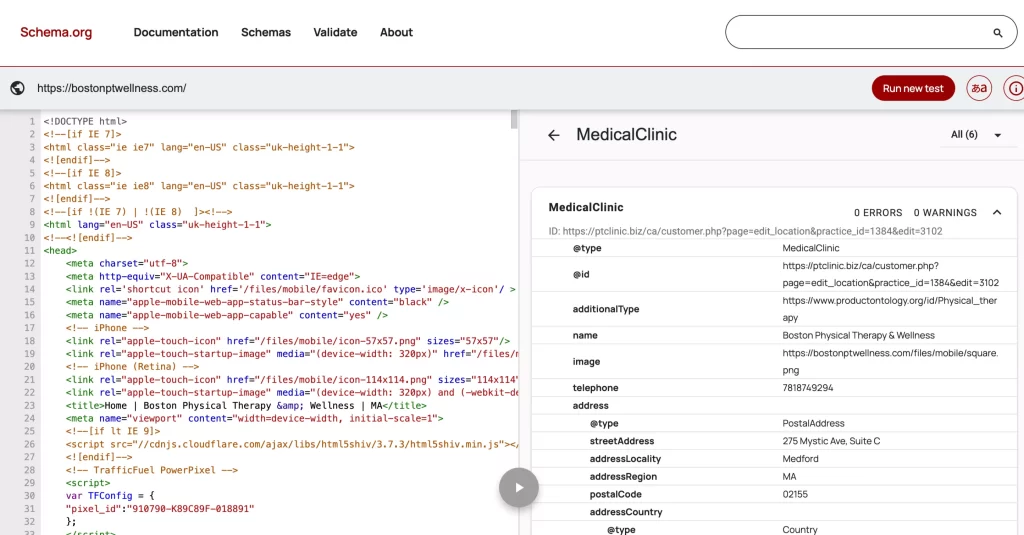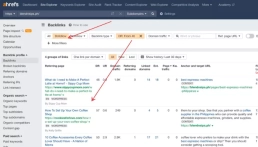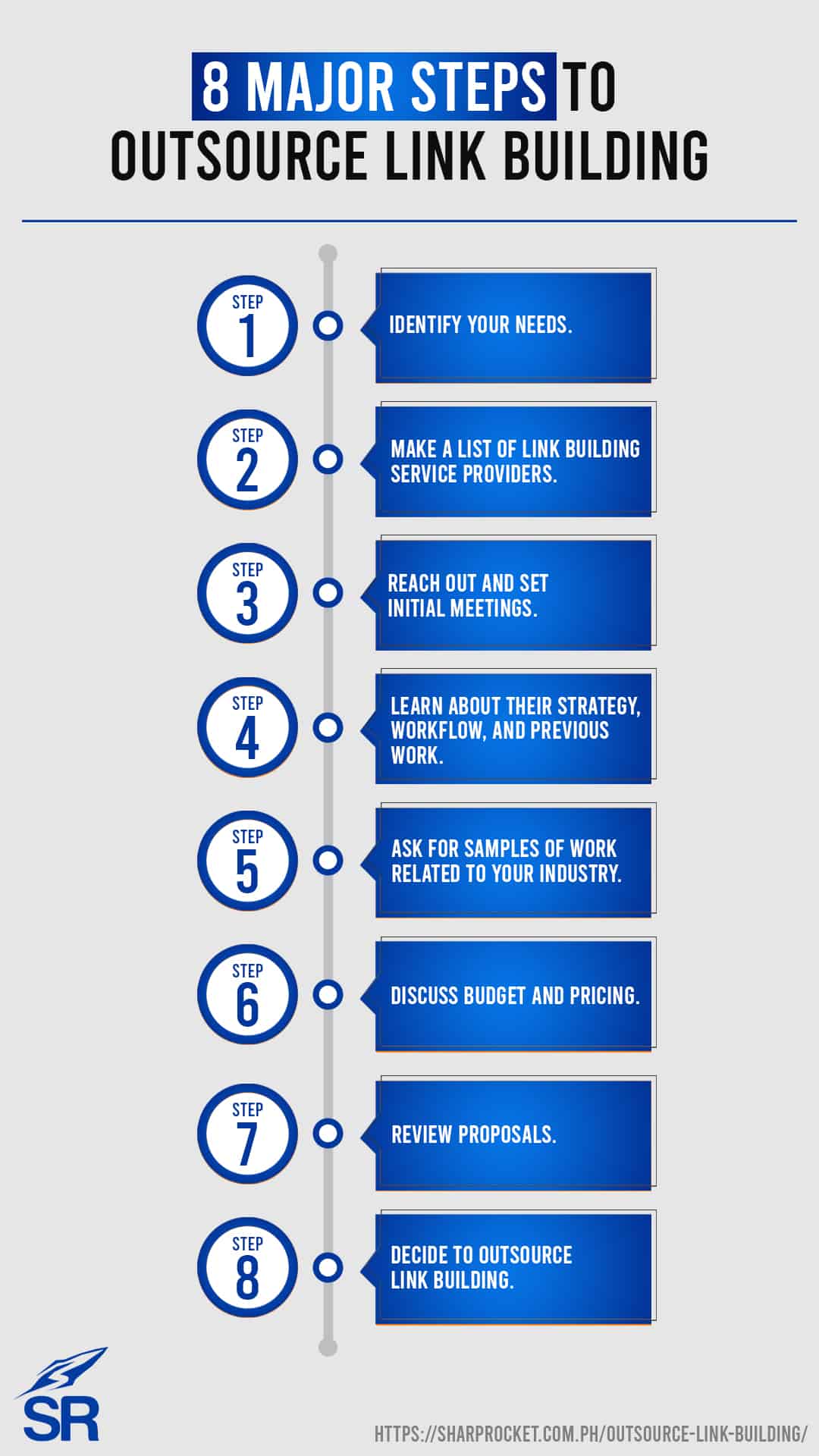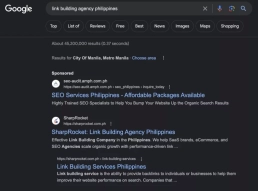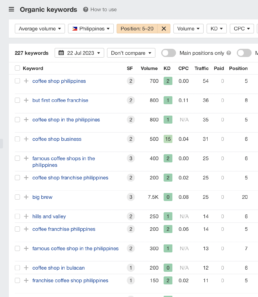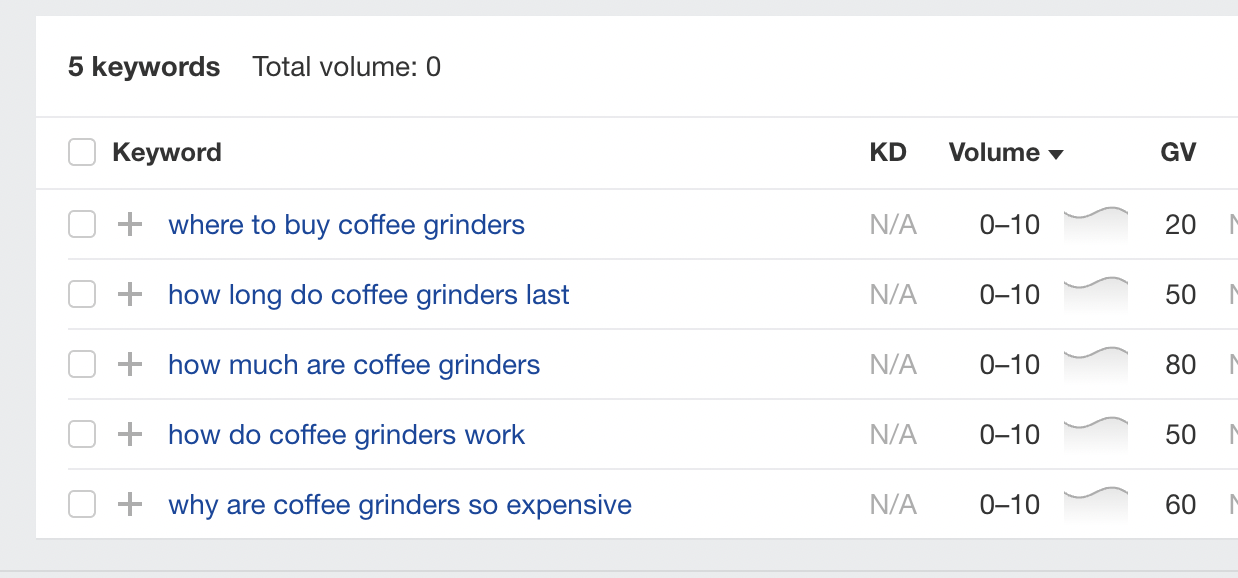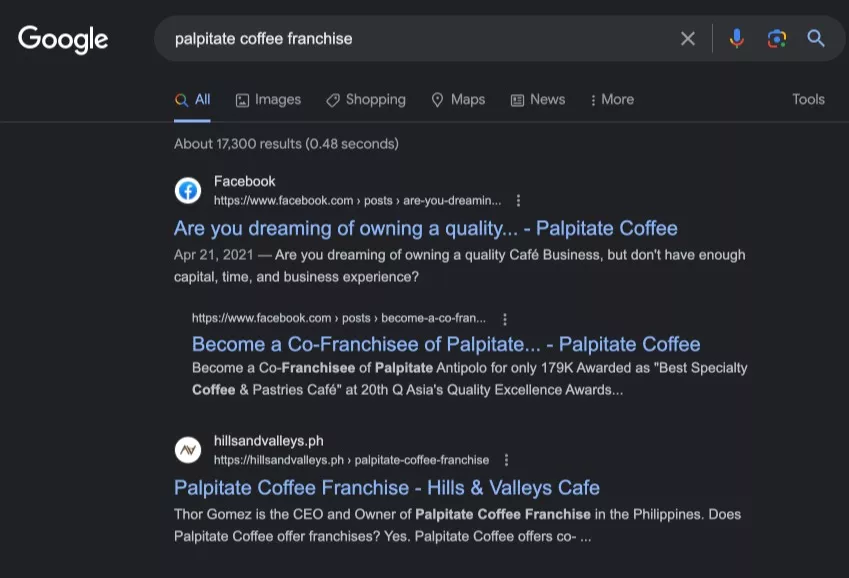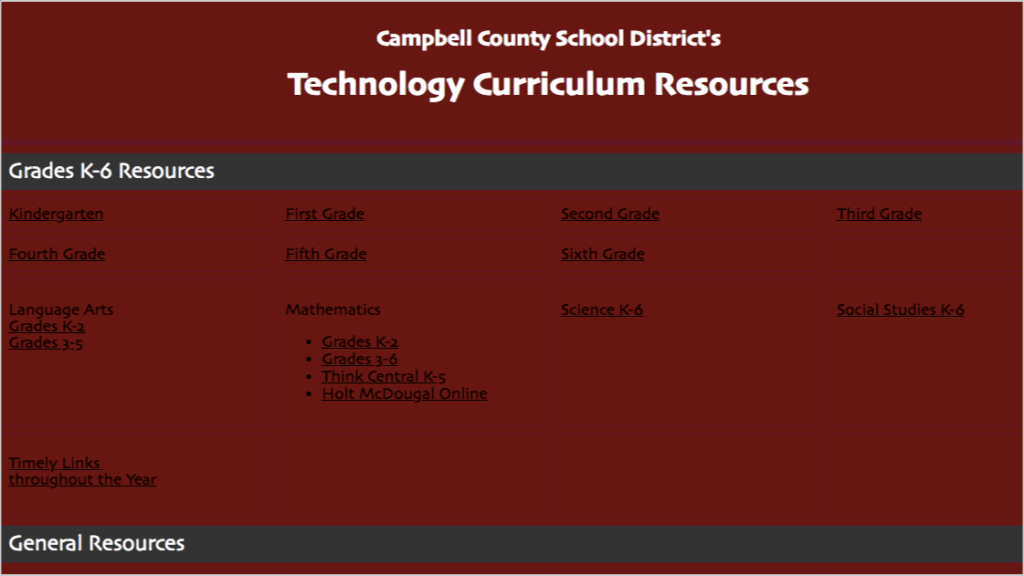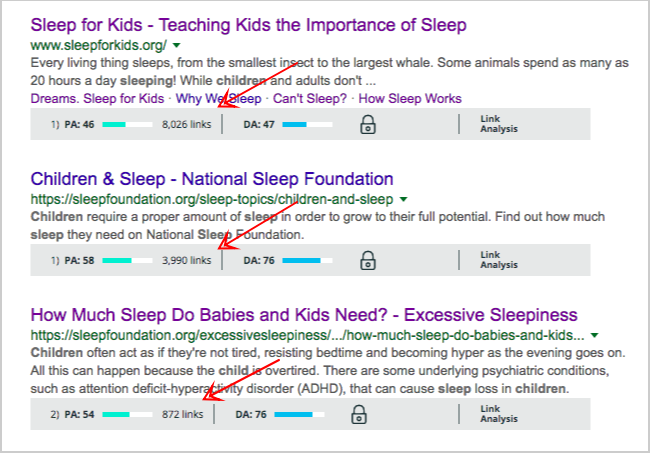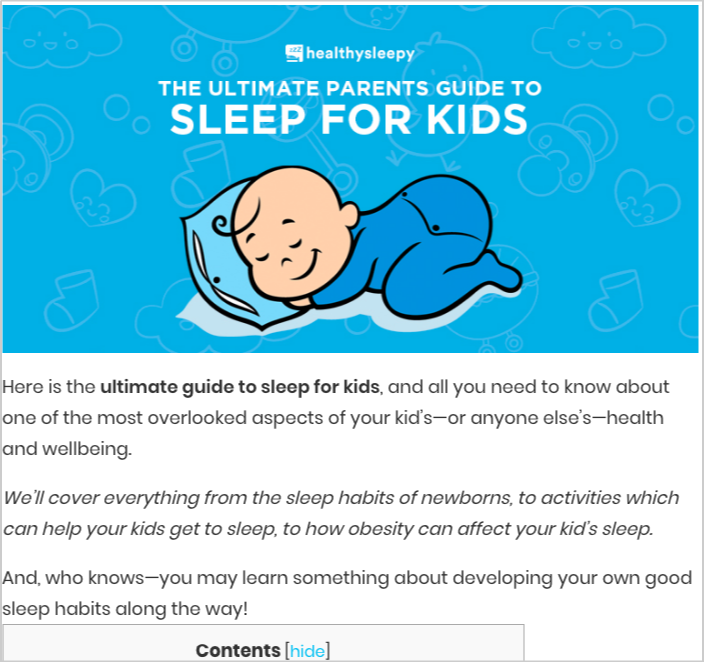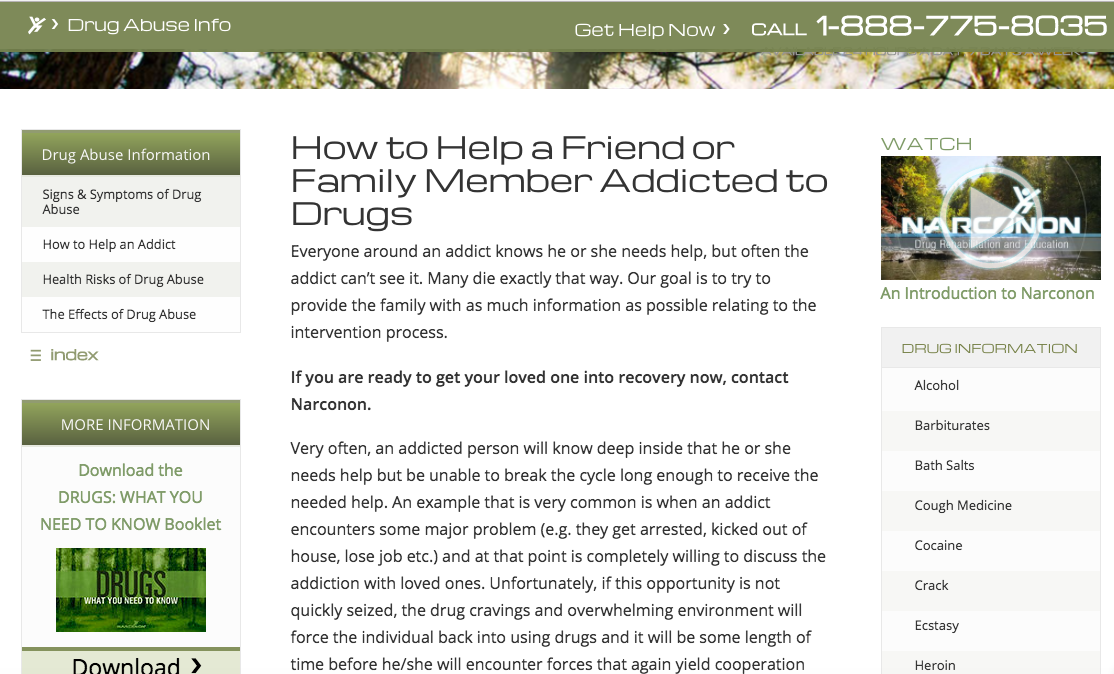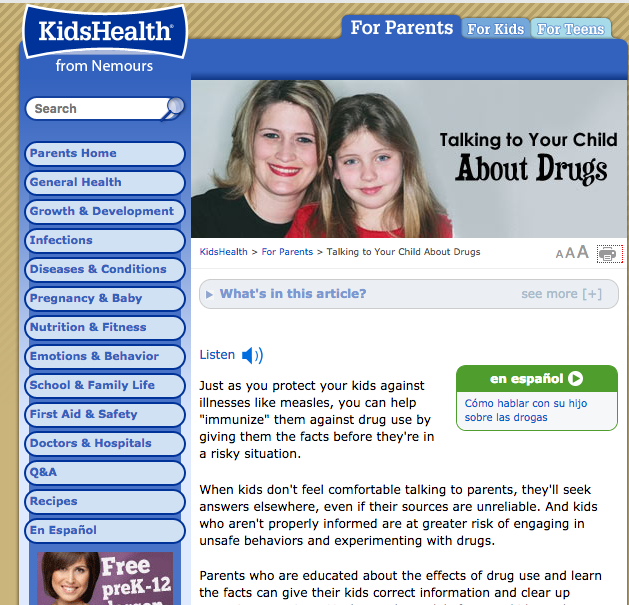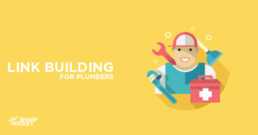Physical Therapy SEO: Unique Strategies to Rank Higher & Get More Patients
Physical therapy SEO presents the best opportunities, as most physical therapy clinics rely on referrals and don't have much online presence on search.
This means lower competition if you're doing SEO for physical therapy clinics, making it easy for your physical therapy website to rank higher on Google's SERPs.
In this guide, I'll walk through actionable and unique strategies for using physical therapy SEO to attract more patients.
What is Physical Therapy SEO?
Physical Therapy SEO is the process of optimizing a physical therapy clinic’s online presence to rank higher in Google search results—attract local patients and build trust through expertise-driven and patient-centric content, local authority, and hyper-local engagement strategies on Google Business Profiles.
Getting Into the Google Local Pack (Top 3 Map Results)
Google Local Map pack sits above the organic search listings for any physical therapy or treatment keywords.
So, the first SEO activity you need to do is optimize your Google Business Profile and reach the top 3 map results as quickly as possible.
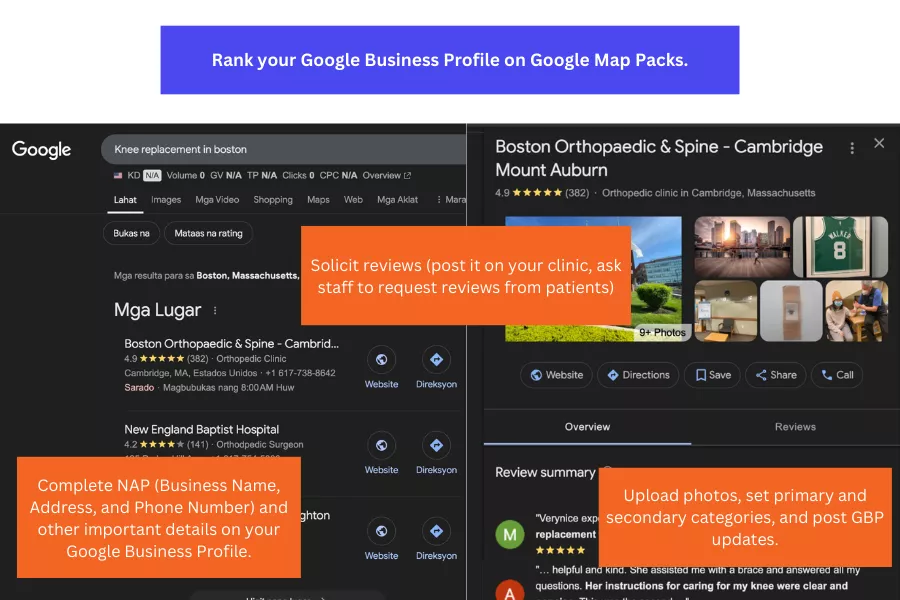
Start by claiming and verifying your Google Business Profile.
Then, once you have it, optimize your GBP by completing all the required information. Essential tips on Google Business Profile optimization include:
- Set "physical therapist" as the primary business category.
- Add complete NAP (Business Name, Address, and Phone Number), consistent with business details included on your website.
- Add appointment links so patients can easily book their slots in your clinic.
- Upload high-quality photos of your clinic, therapists, and treatment rooms.
- Post weekly health tips, promotions, announcements, or clinic news updates. The more frequently you update posts, the more rich signals it sends to Google for your Google Business Profile.
- Encourage reviews by asking satisfied patients to leave a Google review after every session (you can incentivize them to increase the odds of getting legitimate reviews). Solicit reviews as many as you can.
- Respond to all reviews to show engagement and brand credibility.
- Get citations and directory links. Make sure NAP is accurate and consistent with the information on your Google Business Profile. Avoid duplicate or incorrect listings.
Apply all these physical therapy SEO tips, and you'll undoubtedly rank for your Google Business Profile.
Location Page Optimization
Most physical therapy clinics that want to optimize their websites for search have more than 3 locations, some even having 120+ clinics.
That said, location page optimization is important in optimizing the physical therapy website, as most patients land on these individual location pages to decide whether to book an appointment or go straight to the nearest clinic.
Create dedicated location pages that don't simply list clinics' addresses but are well-optimized to target city-specific and micro-location searches.
Optimizing a service page for other industries is really no different, but there are a couple of new items you should highly prioritize adding to the location page.
Apply Basic On-Page SEO
Optimize the URL for the keyword you're targeting so that Google can better understand the page's relevance for that local or geographical area.
✅ Best Practice: yourclinic.com/physical-therapy-los-angeles/
✅ For Micro-Locations: yourclinic.com/physical-therapy-downtown-los-angeles/
❌ Avoid: yourclinic.com/locations/ or yourclinic.com/la-clinic/
Optimize the URL for the keyword you're targeting so that Google can better understand the page's relevance for that local or geographical area.
The next optimization is your location page title for better relevance signals and meta description for clicks.
Example Title: "Top Physical Therapy Clinic in Los Angeles | Sports Rehab & Pain Relief"
Example Meta Description: "Looking for expert physical therapy in Los Angeles? We offer pain relief, sports rehab, and post-surgery recovery therapy. Call today to book an appointment."
To your location page, include the service or specific treatment ("physical therapy") and city name as your target keyword, like "physical therapy in Los Angeles."
Next is to write unique, location-specific content on the location page. It should contain key details like:
- Services you offered at that location
- Parking and public transportation details (to help patients locate your clinic quickly)
- Nearby landmarks (e.g., "We're located next to Los Angeles Memorial Coliseum").
- Staff bios should show enough credibility and trust (e.g., "Our lead therapist, Dr. John Doe, has over 15 years of experience treating ACL injuries and lower back pain.").
Add more content to your location page by using localized headers (H1, H2, H3 tags).
Good examples of subheadings are:
- "Why Choose Our Physical Therapy Clinic in Los Angeles?"
- "Our Los Angeles Clinic Services: Sports Rehab, Pain Relief & More"
- "How to Find Our Physical Therapy Clinic Near Downtown LA"
Embed Google Maps for Local SEO
One overlooked optimization element in physical therapy SEO is embedding Google Maps on location pages. It strengthens your local SEO by confirming location data to Google. It also increases user engagement so that patients can get directions instantly.
Include Patient Testimonials
If you've been operating your clinics for a while and are asking for patient testimonials, including them on your location page makes more sense to build more trust with prospective clients. It's a social proof that helps increase your location pages' conversion rates.
Strategic Internal Linking for Nearby Locations
Strategic internal linking is a powerful free SEO technique that can increase user engagement by helping users easily navigate your website.
For location pages in particular, it helps your patients see very close locations, such as neighboring towns or districts, so they can select the nearest, most relevant clinic to visit.
Here are a couple of tips for smart internal linking for nearby locations:
- Link to closest locations based on geography. For example, if you have locations in Los Angeles, Pasadena, and Glendale, you should interlink Pasadena and Glendale, as they are close. Avoid linking Los Angeles and San Diego locations, as they are too far apart for relevant searches.
- Use contextual anchor texts to guide users. Instead of generic links, use localized phrases like "Our Pasadena clinic is just 10 minutes from Glendale! Click here for more details."
- If you serve multiple locations within one metro area, consider a regional hub page or location cluster page to group those clinics. For instance, you can create a hub page for "Physical Therapy in Greater Los Angeles" with links to Pasadena, Glendale, and Burbank locations.
By linking internally across webpages, you distribute link equity to other nearby location pages, strengthening location relevance between nearby clinics.
Implement Local Business Schema Markup
Schema markup (also called structured data) is a special type of code that helps Google better understand your website's content. Implementing a Local Business Schema ("Medical Clinic")can improve the search capabilities of your location pages, ultimately increasing their individual website rankings.
When properly implemented, schema markup can trigger rich search results (also called rich snippets), which makes your location page stand out in Google lists and attract more clicks.
Target Treatment-Specific Keywords (Beyond "Physical Therapy")
Many physical therapy clinics only optimize for broad terms like "physical therapy in Boston"—while these capture the head keyword you're trying to rank for, they don't always match how patients search.
Think of how your patients search. With easy access to knowledge today, they would search for solutions to their specific problems. A few examples are:
- ACL tear recovery exercises
- Post-surgery therapy near me
- Knee replacement exercise program
- Chronic back pain treatment
- Rotator cuff injury treatment
- Sciatica nerve pain relief
- Hip pain therapy without surgery
- Carpal tunnel syndrome treatment
- Whiplash treatment near me
- Work injury therapy program
There is far less competition but more relevant and high conversion intent with these terms for actual clients.
Create dedicated landing pages for each treatment's specific keywords and place them under your menu of "services," as appropriate.
Another content writing strategy is to publish a landing page for a broader service and add sections for each treatment service (with internal links pointing to these treatment pages).
Increase Content Library with 'Symptom-Based Searches'
Not every potential client will go directly to visit your clinic. Most of them are simply searching for information to help them answer their questions. One in particular is about symptoms. Common search likes:
- "Why does my knee hurt when I walk?"
- "Should I see a PT for shoulder pain?"
- "Best way to recover from a sprained ankle?"
These valid questions may or may not require a single blog post to answer, or they are best included in an FAQ section under a relevant treatment service page.
Find all these symptom-based searches using Ahrefs or SEMRush and answer all of them to increase your content library, rank for more long-tail keywords, and get additional patients from people converting to these blog content pieces.
Link Building For Physical Therapy Clinics
Backlinks are a strong ranking factor in Google (and other search engines, too). Not only do they help your physical therapy website improve its search visibility, but they also vote for you as the best solution for the treatment services you're providing.
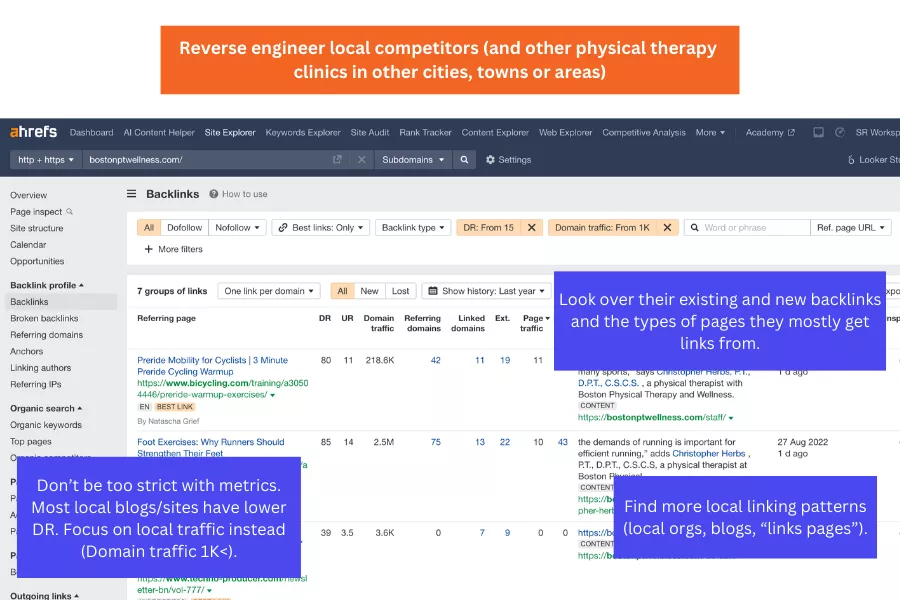
Getting high-quality, highly relevant, trusted, and authoritative editorial backlinks (through strategic link building) is crucial to helping your treatment service pages climb in Google SERPs.
Here are a couple of unique link-building tactics for physical therapy clinics:
- Get listed on local physical therapy directories (but choose legitimate, high-quality niche ones).
- Partner with local healthy bloggers and sports influencers to review your services (you'll find some of these local content creators on social media).
- Reach out to chiropractors, orthopedists, and local gyms for guest blog or link insertion opportunities.
- Sponsor local events and associations within your area. Through these charity works, most local businesses get featured on local news websites and links pages of local organizations—acquiring them juicy local links.
Check out this guide on local link building to learn more actionable link-building tactics for local businesses.
Create a 'Pain & Recovery' Video Series with Patient-Specific Keywords
Getting branded searches and organic social traffic helps improve the search performance of your physical therapy websites.
Aside from optimizing your clinics for search, you can also create engaging videos that target the pain points of your target patients and upload them to YouTube.
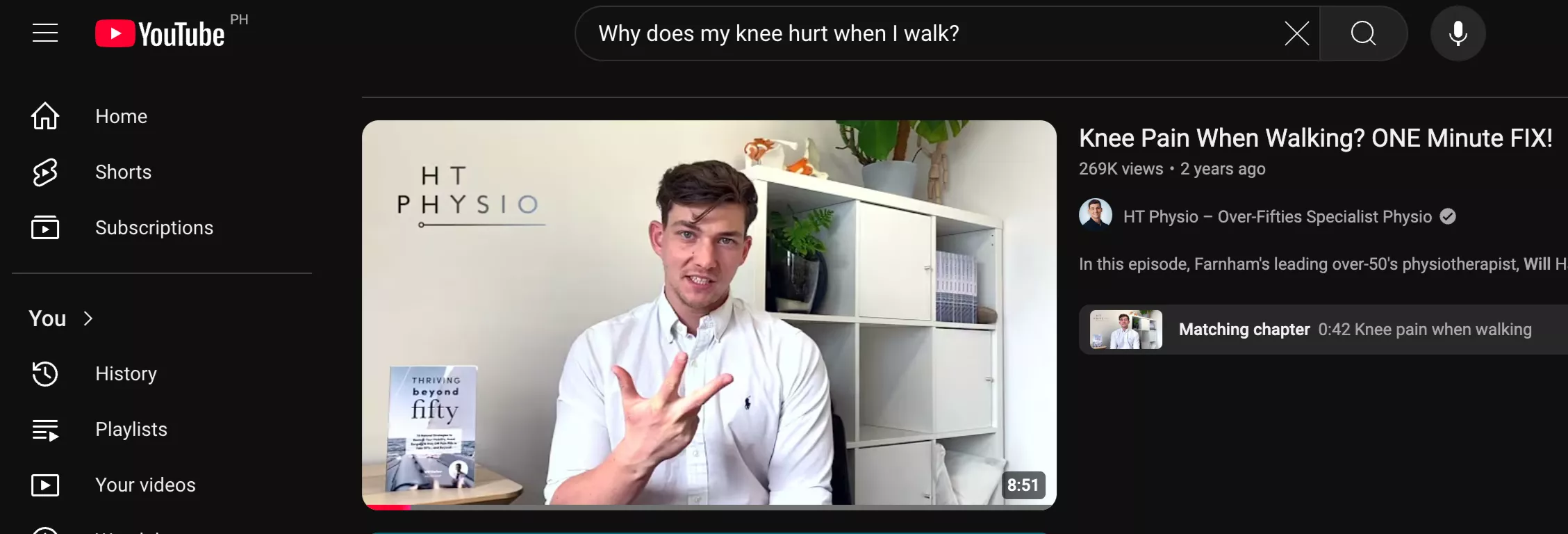
With YouTube as a search engine, you can rank your therapy videos for keyword variants related to your industry.
Going further, you can also do these tips:
- Repurpose video transcripts and turn them into blog posts (making them keyword-rich content).
- Include related YouTube videos to existing articles.
- Post these videos on your Google Business Profile to add update frequency and get more visibility.
Optimize Images for 'Image SEO'
One way to capture more search traffic is to optimize your images for keywords and get them to rank for image search results—many PT clinics overlook this strategy.
Here's how to leverage image SEO:
- Rename images with SEO-friendly filenames (e.g., not "IMG_123.jpg" but "physical-therapy-exercises-for-back-pain.jpg").
- Create before-and-after patient recovery image galleries to show social proof and results of your treatment services—building more trust and engagement with your users.
- Get more backlinks by ranking your physical therapy images (see our image link building guide).
SharpRocket—Agency of Choice for Physical Therapy Clinics
If you need local SEO, full-scale SEO campaigns, or link building services, contact us, and we'll provide a physical therapy SEO roadmap for you.
How to Get High Authority Backlinks in 2025
Google obviously favors brands in search results. Given that consumers trust them more often than not, it is undeniable that you rank highly better by building your site’s authority.
Authority building requires creating highly credible content and having other credible entities attest to you (links).
In this guide, I’ll show you how to get authority backlinks to enhance your site’s authority, influence rankings, and climb your brand’s spot on Google’s SERPs.
1. APPEAL TO CONTENT CREATORS WITH INFORMATION GAIN
The best way to scale the passive acquisition of authority links is by publishing linkable assets that niche publications editors and content creators would notice.
It is not the same as having the “write your content and links will come” mentality. But in creating highly credible content, that gives no reason for other creators not to link to you.
Certain elements make content appealing to other niche authority publishers.
INFORMATION GAIN
“Information gain scores state how much more information one source may bring to a person who has seen other sources on the same topic.” - Bill Slawski.
HOW DO YOU ACCUMULATE INFORMATION GAIN SCORE?
Become linkable by publishing unique (and better) content assets they won’t find elsewhere. Think of ways you can differentiate what you post from others.
TARGET OTHER LEVEL/S OF AUDIENCE THAT PUBLISHERS DON’T USUALLY APPEAL TO.
If most thought leaders focus on the basics, try to cover a more intermediate and advanced level of content.
In this SEO blog, we cover many of the intermediate and advanced-level strategies in link acquisition, given that we are targeting more in-house SEOs and agency owners who have been building backlinks for a long time and want something new.
Even if we cover the essential guides like anchor text optimization, top link building strategies, and link diversity, we add as many actionable tips to put principles into practice as possible.
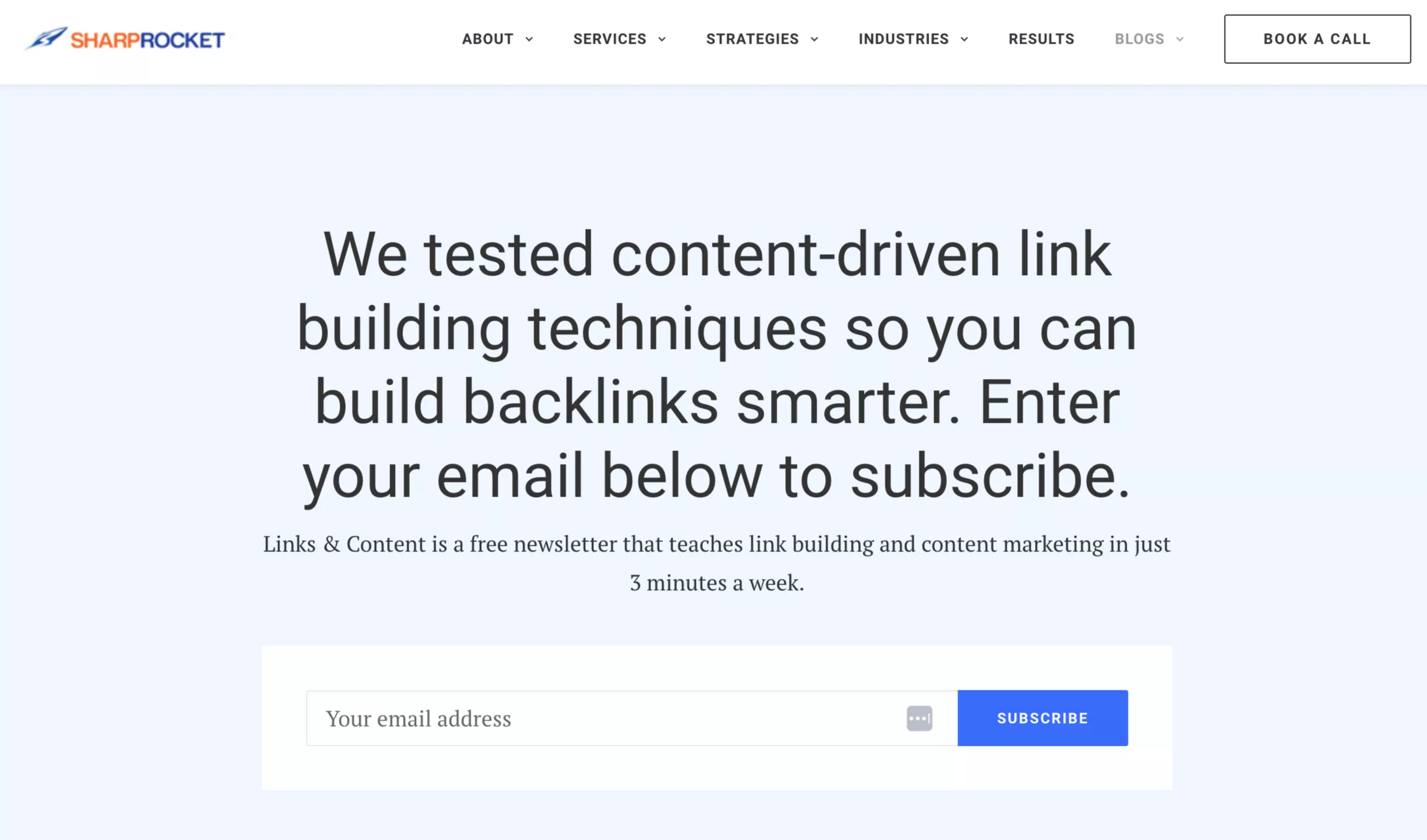
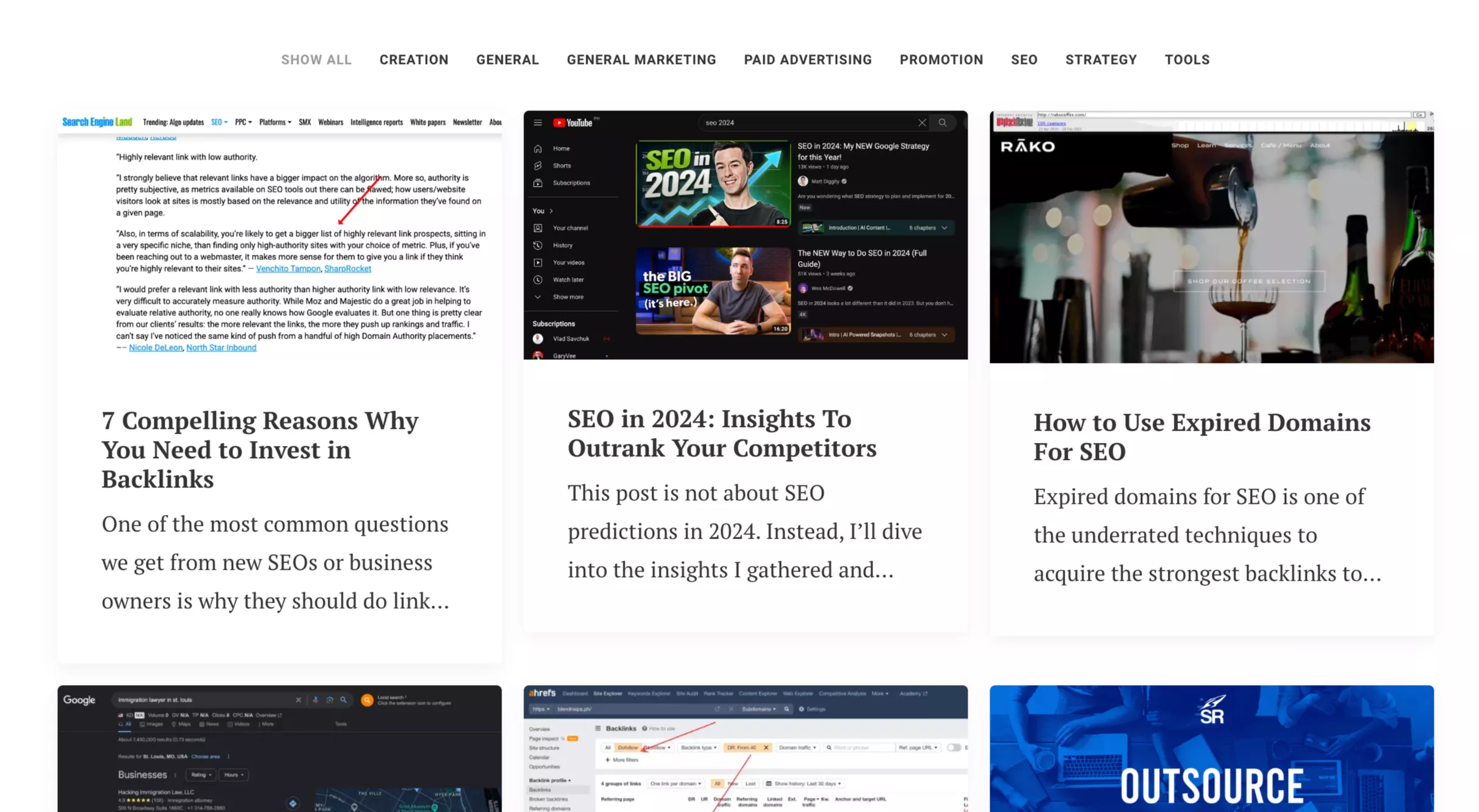
It is also much easier to rank for keywords by tackling more difficult ideas; other industry publishers don’t have much in-depth expertise and experience.
PROVIDE FRESH PERSPECTIVES TO SATURATED TOPICS.
The challenging part for starting publishers is publishing content for topics with hundreds of pieces of content trying to compete for the same keywords.
Pursuing mid to highly competitive keywords is still viable, given their high search volume, but adding new perspectives/angles sets your content apart from other competing pages.
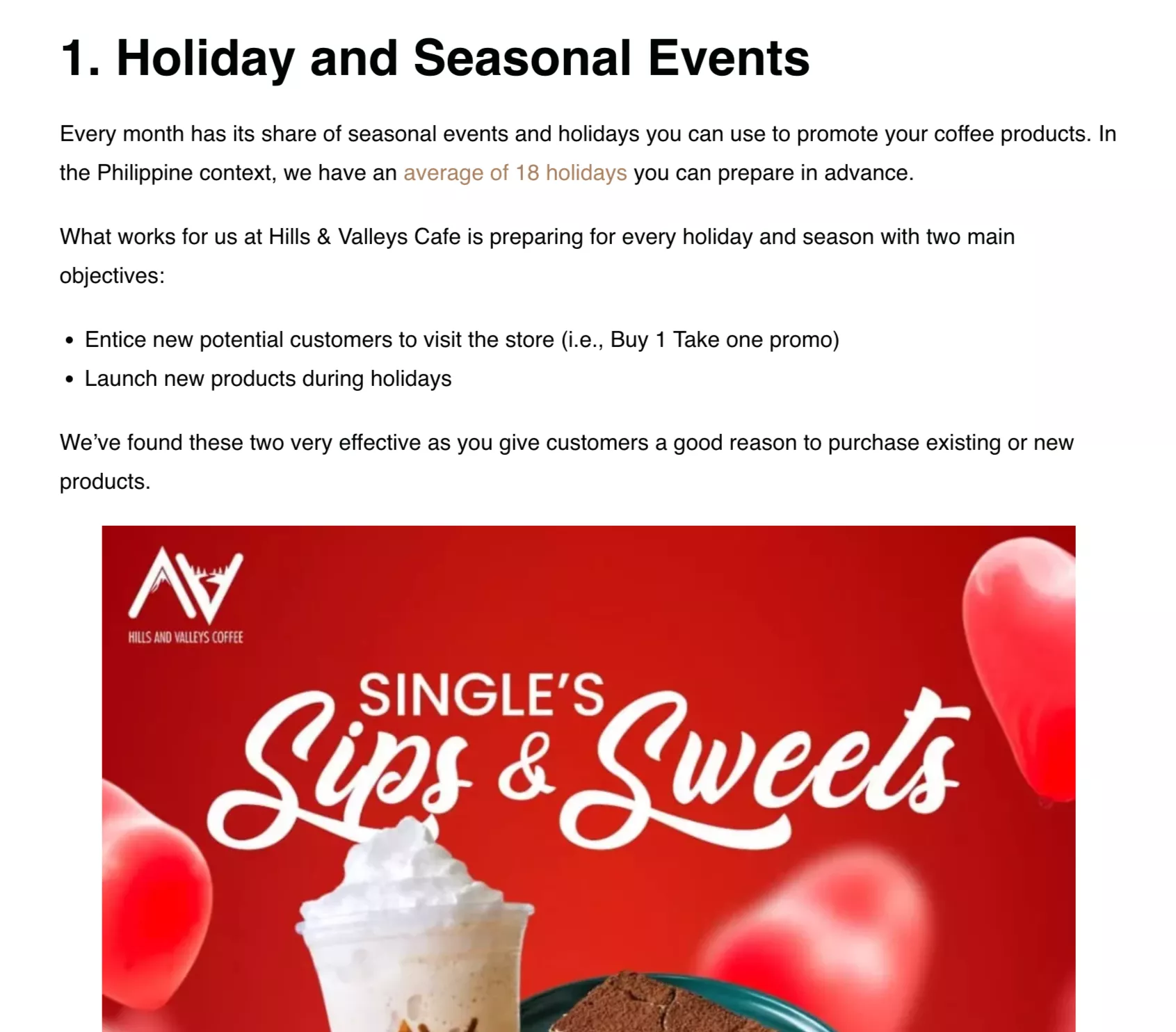
It also captures other content creators to distribute it across their social networks, which amplifies the natural link acquisition of your content assets.
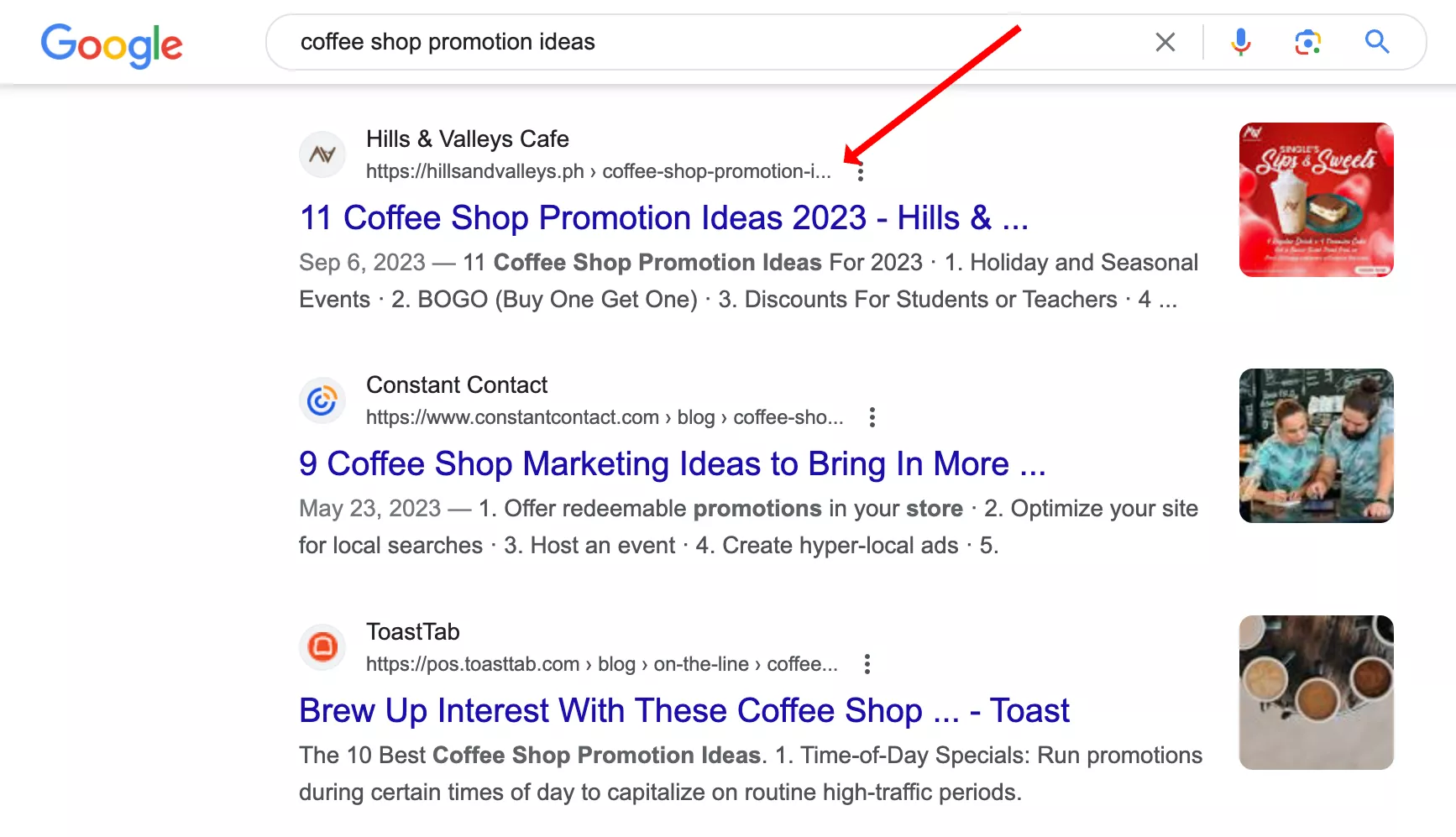
START WITH BETTER INTROS THAT RESONATE WITH YOUR AUDIENCE WELL.
For example, I’ve started this guide by emphasizing that Google favors brands and the importance and value of “authority building”.
It instantly differentiates from other SEO writers who start their blog posts with, “link building is the key to better rankings,” and so on.
IMMERSE YOURSELF IN THE INDUSTRY TO BETTER UNDERSTAND UNIQUE CONCEPTS.
One of the keys to standing out in the sea of content is understanding what your target readers are currently consuming and where their attention is.
Having a pool of authority publications you religiously follow is best by subscribing to their latest posts. This way, you establish familiarity with their latest content and what content themes they’re focusing on.
This would give you new insights and unique concepts to start diving into with your blog.

For example, I’m publishing landing pages and informational content on “psychological safety” and DIBER (Diversity Inclusion Belongingness Equity Respect) in my corporate training blog.
While other personality development and corporate trainers heavily publish on DEI (Diversity, Equity, and Inclusion) and leadership, I started diving into more new concepts readers in the Philippines don’t usually hear.
2. SNOWBALL EFFECT WITH CONTENT SEEDING
I heard about this concept from Jason Acidre years ago.
Content seeding is creating content assets for other sites that exclusively cover the subtopics from your pillar content (and links to it).
This differs from parasite SEO, which focuses mainly on acquiring a contextual link from a page that ranks for a highly competitive keyword.
Content seeding emphasizes the thematic relevance between your content that covers exclusively a subtopic and your pillar page on your site that targets a keyword with a broader audience.
Through linking between pages (pillar and content seeds), you increase relevance signals to both pages (from an off-page perspective).
It creates leverage for both pillar content and content seed. The high authority backlink pushes ranking power to your pillar content while you improve the ranking capability of your seed content.
And while these content seeds rank for their respective keywords (leveraging the site’s domain authority), they compoundedly drive more link equity to your pillar page.
GETTING HIGH AUTHORITY BACKLINKS FROM CONTENT SEEDS
Create a list of authority sites you want to use for content seeds.
These could be Google-trusted (seed sites) like the New York Times, Healthline, Forbes, or IBM, or industry-specific credible entities like Daily News Coffee or FreshCup.
You can use Ahrefs’ Content Explorer to populate your list of high authority sites. Enter head terms.
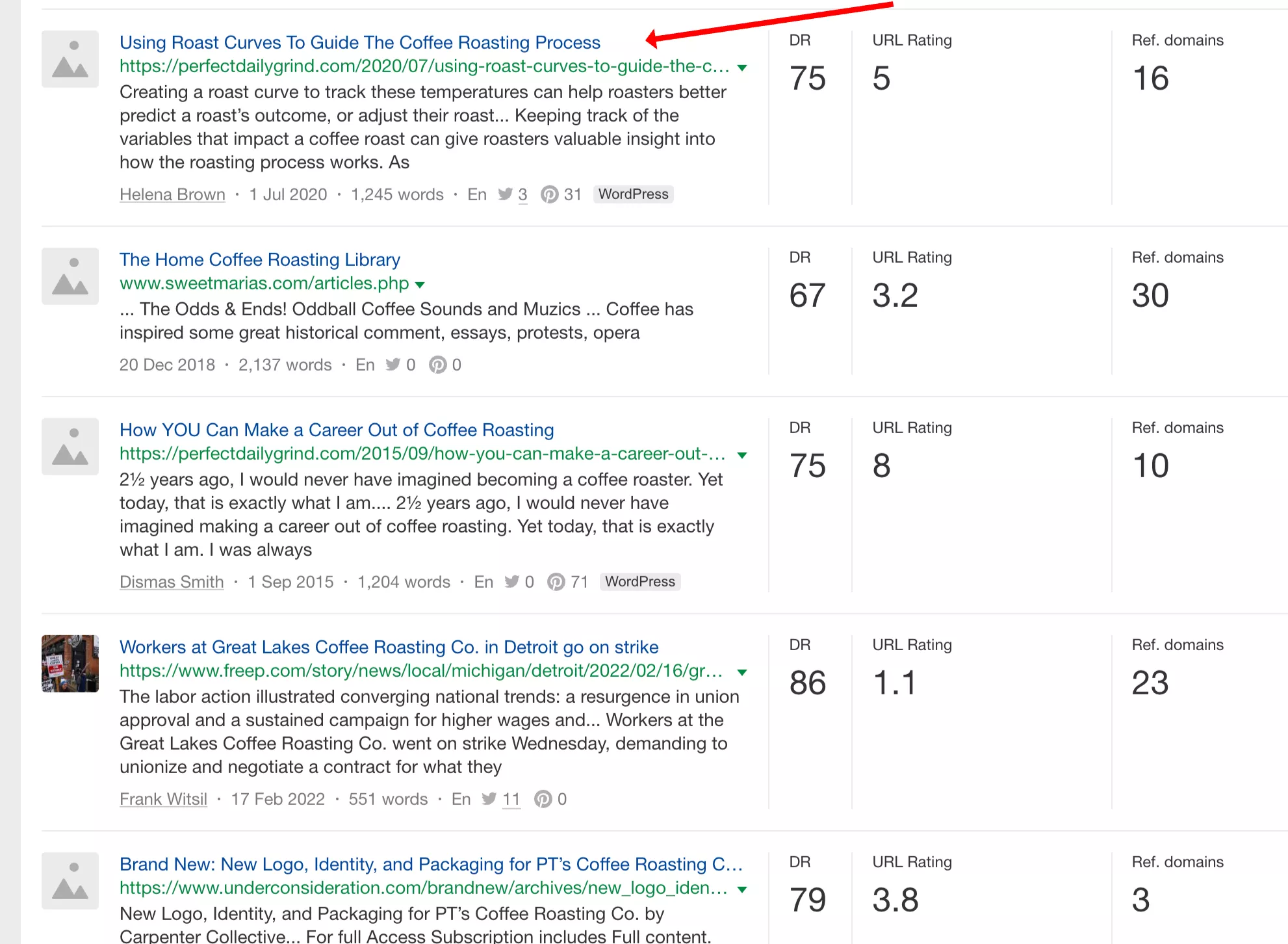
Metrics like Domain Rating can help you spot sites with potent backlink profiles. I usually export sites/domains with DR60 or higher.
Ahrefs’ DR isn’t to be solely considered. Several factors make a site authoritative/credible (i.e., quality of readers, social media following, monthly organic traffic, number of root referring domains, etc..). But Ahrefs’ DR is a good starting metric for assessing a domain’s authoritativeness.
Once you have a list, the next thing is to strategize what to offer in your outreach emails. The message will dictate the success of your link building campaign. Always answer “What’s in it for them?”.
PUSH RANKINGS FOR LOWER POSITION PAGES.
Identify pillar pages on your site that need more boosting with backlinks. These are ones sitting on positions 6 to 10 and would require optimization and backlinks to climb their position to higher spots.
Use content seeds to improve the rankings of these pillar pages.
DISTRIBUTE SUBSETS OF DATA CONTENT.
Content seeds may also include non-text formats such as data visualization, infographics, PDFs, whitepapers, branded images, etc..).
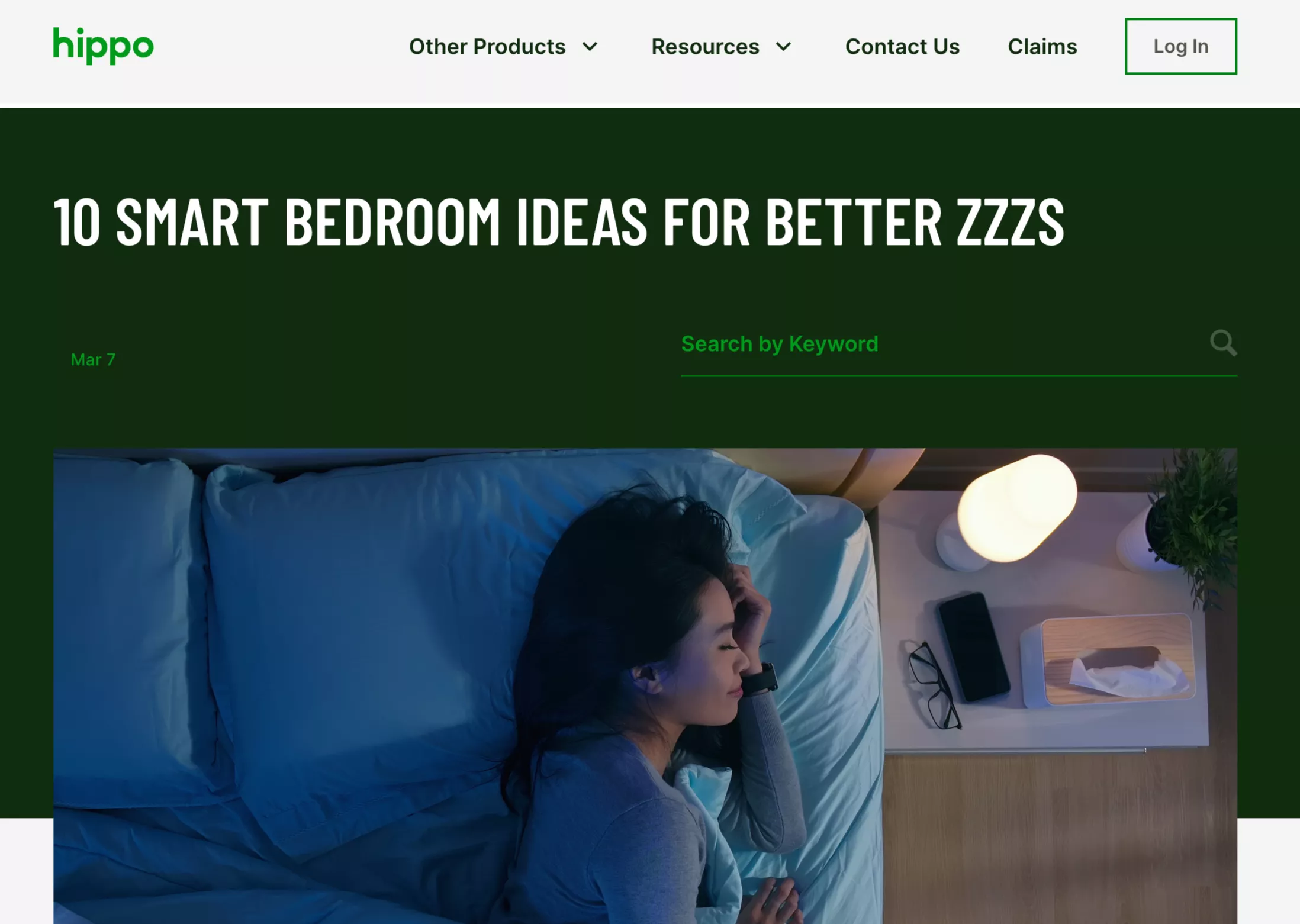
You can cover and distribute one part/area of your internal data to other sites/publications.
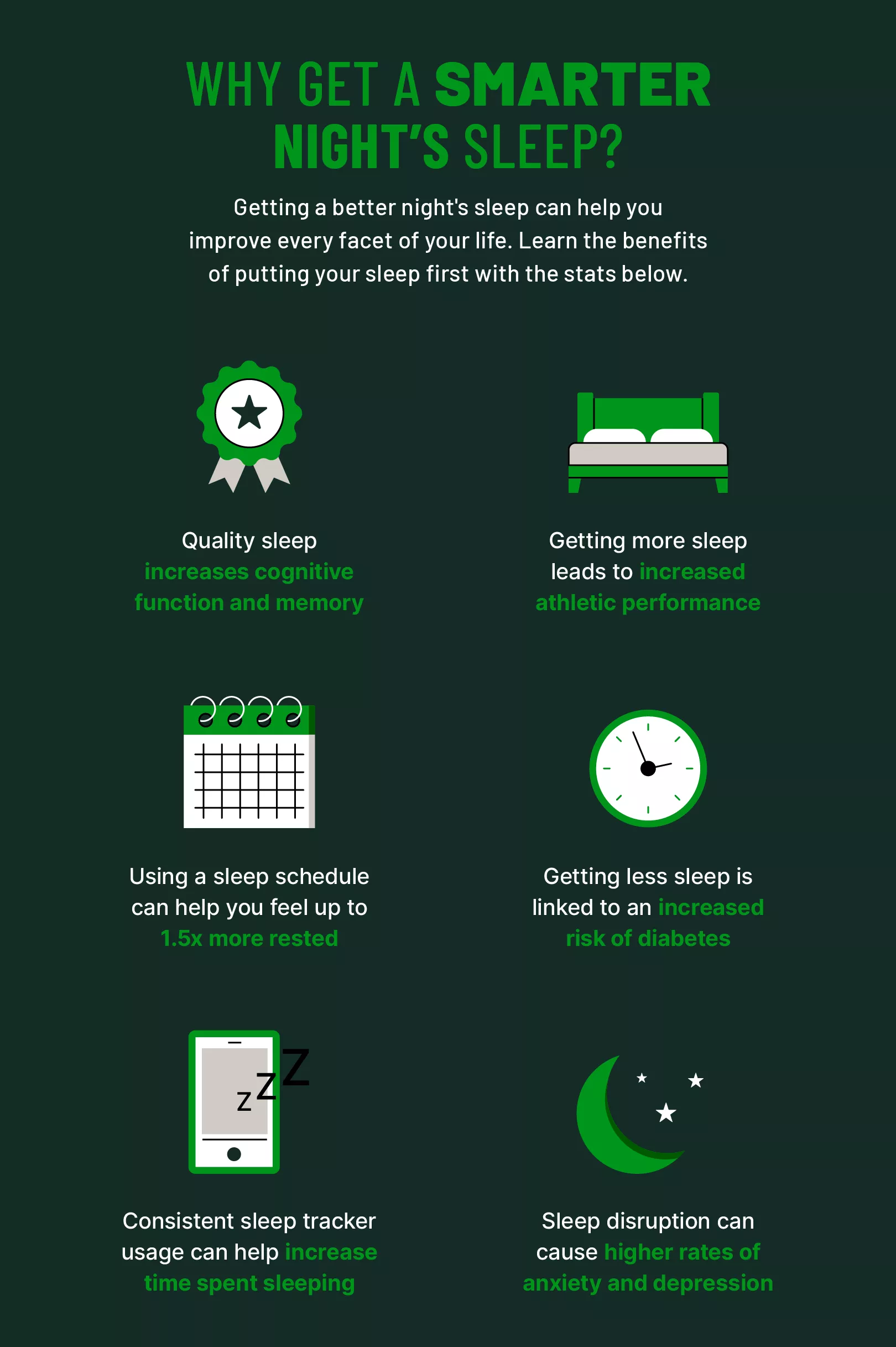
Use the " exclusivity " angle to entice publishers to use your subset data as an additional resource/reference to their existing and/or future blog posts.
TIER LINK BUILDING USING CONTENT SEEDS
When SEOs run their guest posting campaigns, it is a typical plain strategy where they distribute blog posts to different sites discussing different topics based on the approvals of their publications.
With content seeding, you can think of a topic cluster (from pillar topic on your site and all subcategory topics you can propose as topics for guest blogging).
Instead of having different topics for guest posts that aren’t aligned with each other, you’ll have a good relevance structure for all topics for your guest posts.
WHY DOES THIS WORK?
- You can use content seeds (guest posts) to internally link to each other, creating a tier one or two link building strategy across these blog posts.
- It enhances all content seeds ability to rank for their target keywords (from each of their hosted domains).
- It leverages the power of thematic relevance to easily include internal links highly relevant to the context of the destination link (another content seed).
3. REACTIVE DIGITAL PR
Many SEOs and marketers have started using digital PR to improve their organic search rankings, given its ability to generate branded mentions and backlinks, mostly from authoritative publications and news sites.
These high authority backlinks can be strong enough to push rankings of pages targeting highly competitive keywords.
No wonder you’ve seen SEO agencies having digital PR as one of their secondary services.
The typical digital PR focuses on creating large-scale campaigns that could take weeks or months to produce, launch, and promote to journalists. It is a proactive approach to gaining brand exposure through data-driven content (data visualization, internal data, etc..) that speaks to current issues and trends in the industry.
Reactive Digital PR reacts quickly to current (and soon-to-be-trending) issues and events in its basic premise and by its term.
Contrary to digital PR, leveraging current events likely to saturate the entire publication industry usually takes days and weeks.
The planning stage can be more crucial as you need to speed up with research, content creation, and pitching relevant brand stories to journalists.
Here are some ways to utilize reactive digital PR to acquire high authority backlinks to your brand.
IDENTIFY AND MAP OUT NEWS CYCLE
There are recurring events in the form of news cycles that you can identify with your team to prepare ahead for sudden stories and news events.
Here are some examples of event cycles:
- Inflation rates in countries/regions
- Seasonal information on gifts (e.g., Christmas gift guides)
- Changing workplace situations and employee engagement (e.g., the effect of hybrid work setup on employees).
- Public life events of well-known celebrities
- Not all of the events in this news cycle would be relevant to your site, but think of ways to integrate those into your brand stories.
![]()
EXPERT COMMENTARY
If you have a pool of thought leaders and experts in your company, it would be best to tap into your client’s expertise and experience to share input for new events and stories.
For example, if your client is into nutrition and fitness, you can use their client’s expertise when a notable celebrity reveals their diet plan. An example is when brands took advantage of the news about Chris Martin of Coldplay, revealing that he only eats one meal a day.

Journalists may be looking for additional credibility from industry exports to include in existing stories they are writing.
Look for these opportunities when they post tweets with the hashtag #journorequest.
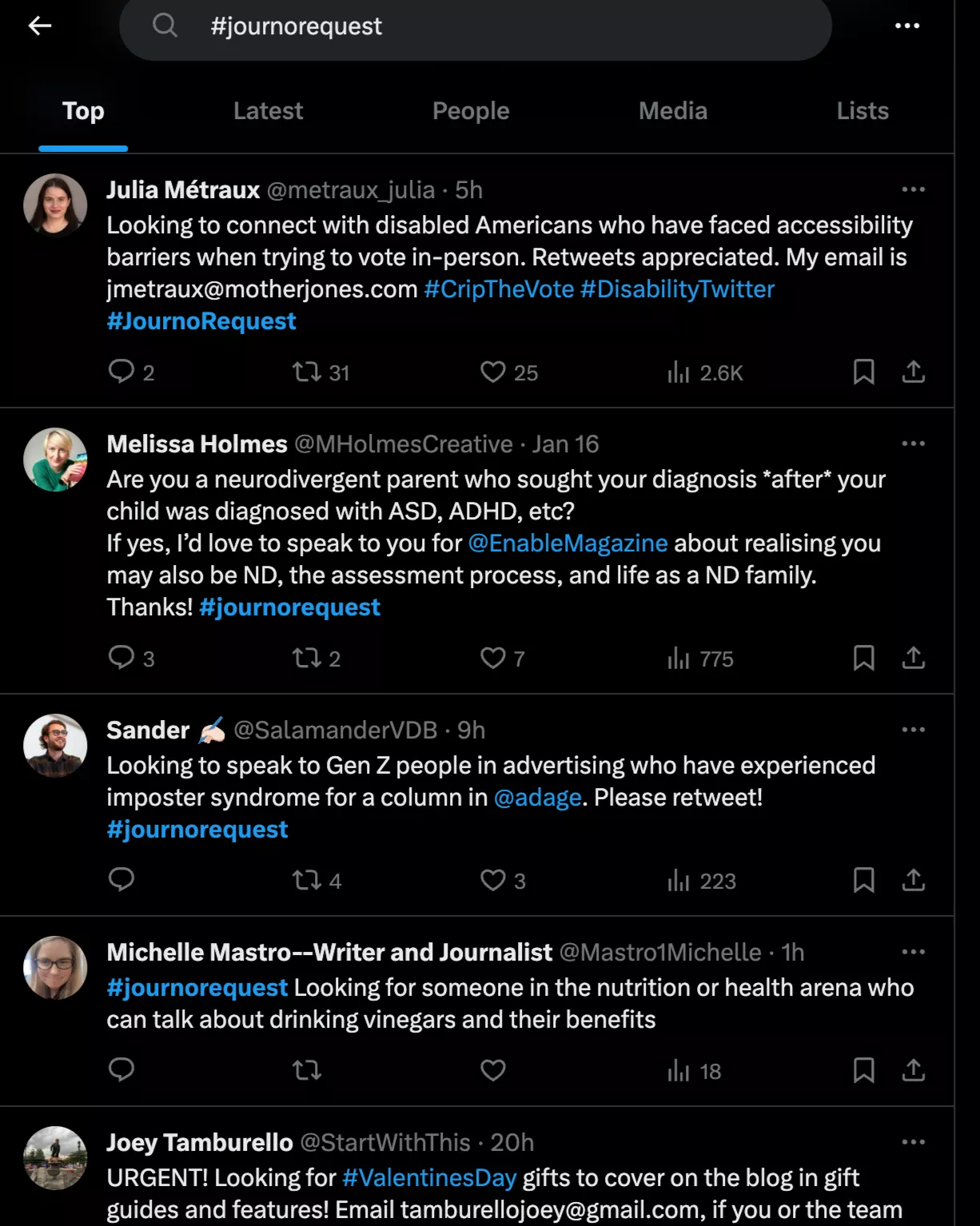
You can also use services like HARO or ResponseSource to monitor and spot opportunities for your in-house experts to comment on topical events.
Tapping into reactive digital PR can generate branded mentions (and backlinks). This also results in gaining credibility and building relationships with journalists who can contact you for more input into their future stories.
EASY TO PRODUCE CONTENT
The key to making reactive digital PR is your team’s capability to produce unique content that matches a developing news story.
The longer time approval for stakeholders and decision-makers to craft stories and deliver thoughtful opinions as reactions to news stories, the fewer opportunities you can take advantage of.
Before engaging in reactive digital PR, consider the timeframes for your team to produce expert comments for stories.
The most effective way is to react to an opportunity within a few days (or hours, if possible).
TREND ANALYSIS FOR INSIGHTS
Invest time monitoring upcoming trends on Google and TikTok to get new insights into current events.
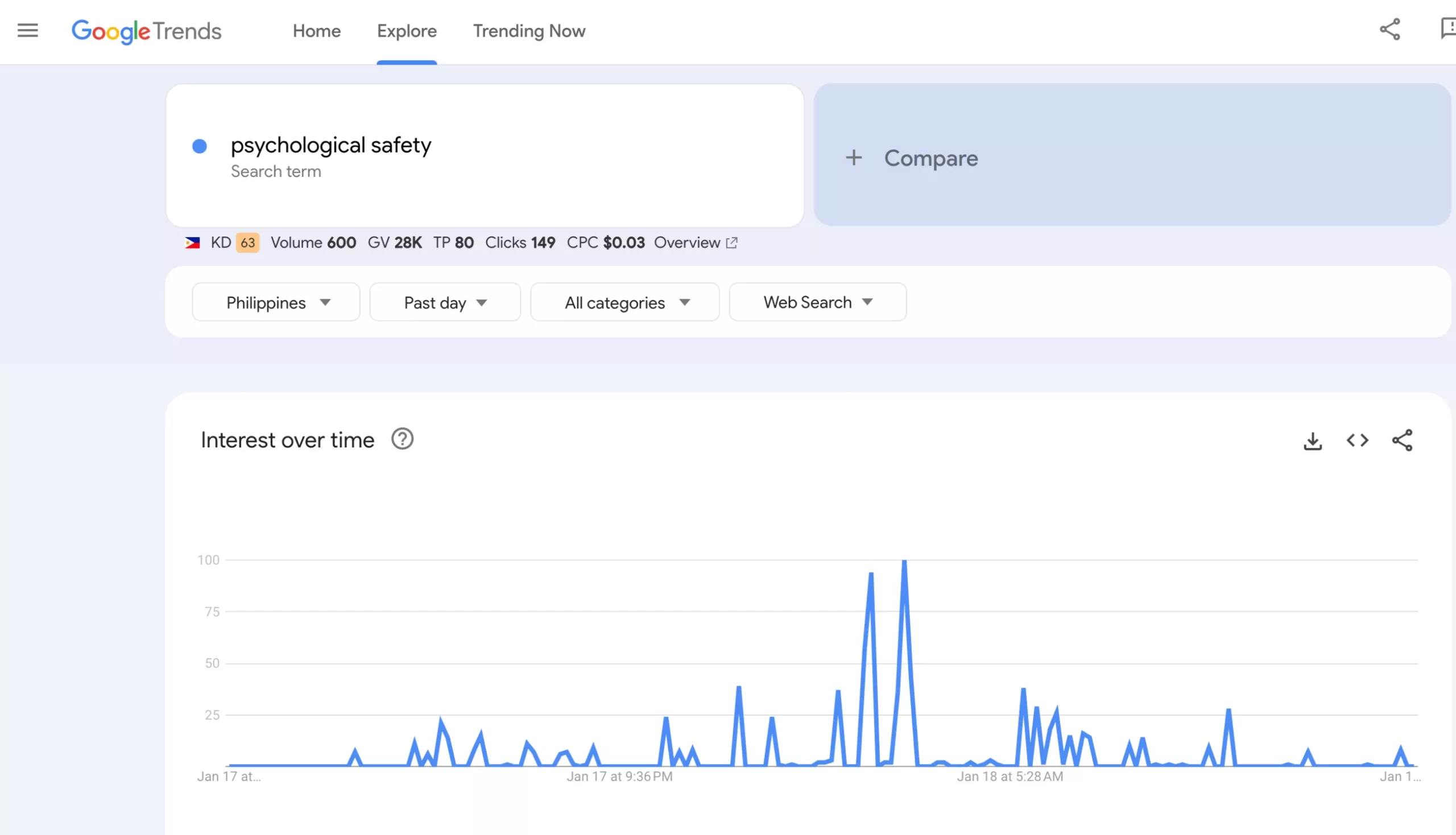
Some journalists voice their opinions on current issues that will generate new information with a high tendency to go viral.
4. CONTENT COLLABORATION AND PARTNERSHIPS
One key factor in getting high authority backlinks is familiarity.
Familiarity results from having more robust relationships with publishers and content creators in the industry.
Compared to submission-based link building tactics (i.e., directories), where it doesn’t require a connection between the site owner and the one building the link, content collaboration and partnerships primarily need building bridges and influencing skills to get deserved attention and interest from potential link sources.
Here are some methodologies to utilize content in making link prospects more familiar with your work:
CONTENT REFRESH
By its term, content refresh is refreshing/upgrading old and outdated content on topic areas you want to focus on.
Given that some publishers lack the resources to edit their old content (let alone produce the desired content quota for the year), it is an added value for anyone wanting to maximize their already published resources.
Use Ahrefs’ Content Explorer to semi-automate the process of finding old and outdated content.
Enter topics you want to focus on.
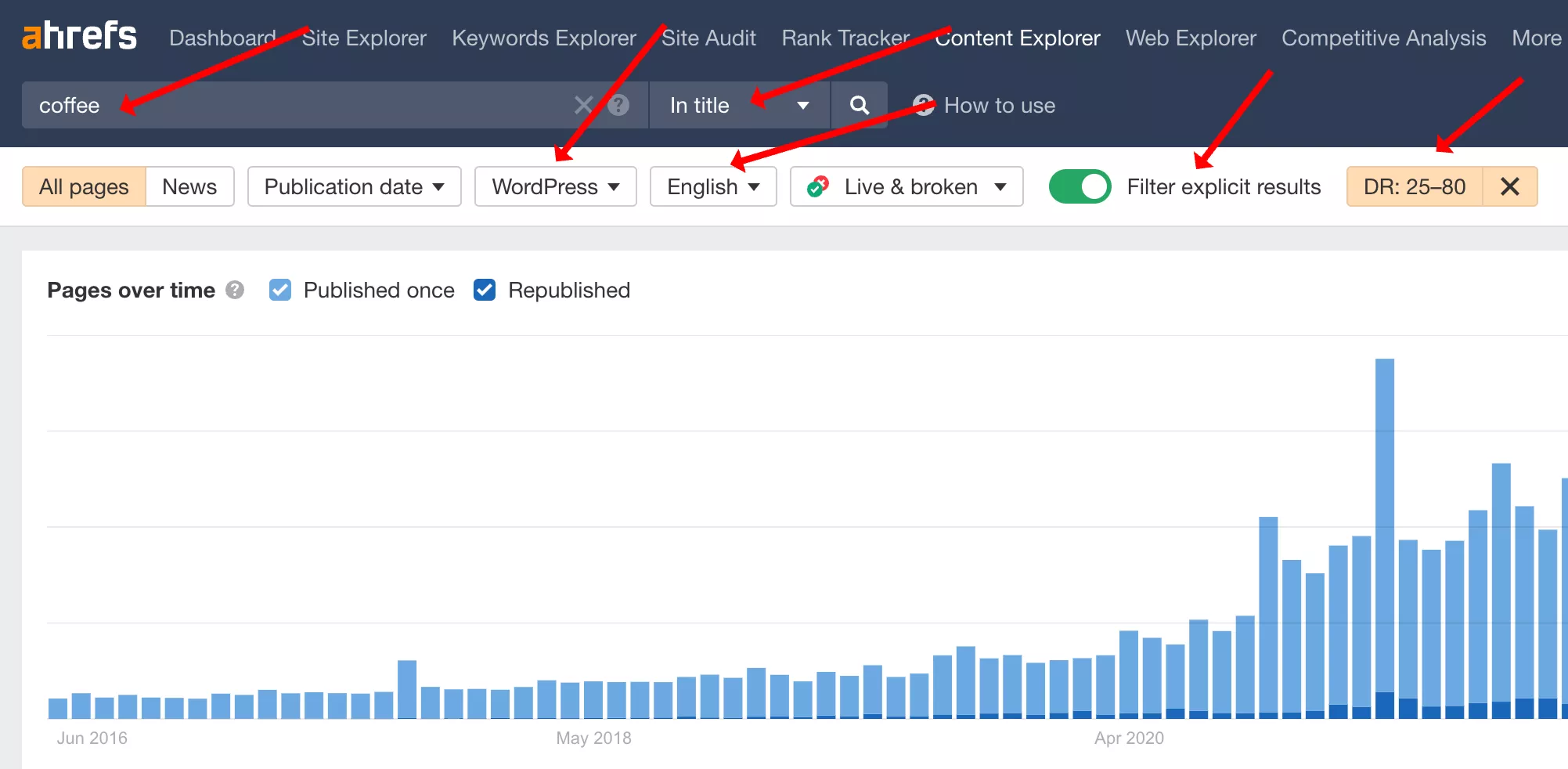
I usually filter the results only to show posts relevant to my client. Here are my qualifiers:
- In WordPress platforms
- English
- “Filter explicit results”
- DR 25 to 80
- Exclude homepages and subdomains
- Not linked to my target site
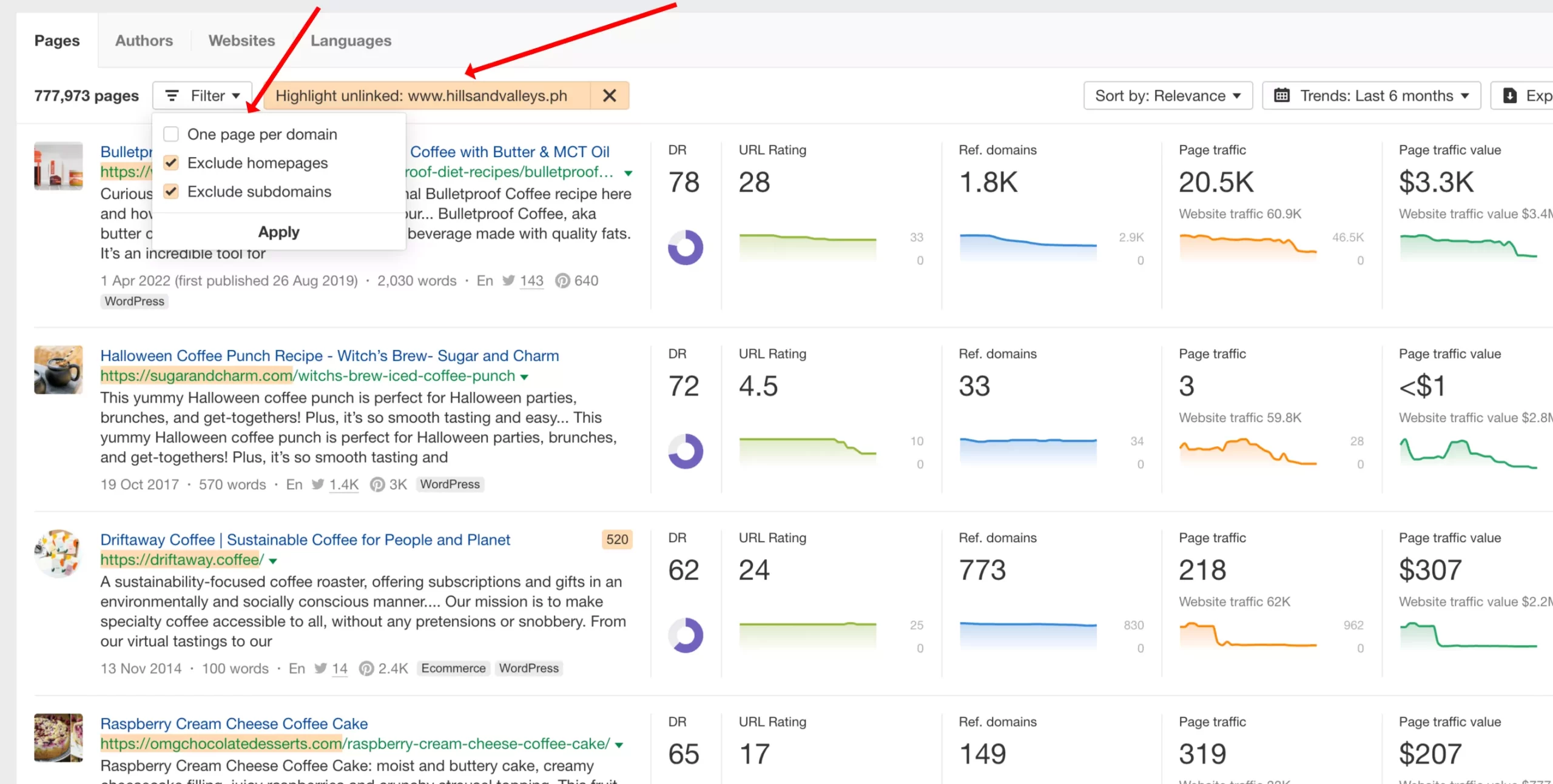
Before you export results, skim through the prospects to see which ones are relevant to your prospecting topics.
Filter out blog posts from domains competing with your client, low-quality sites, and high on-page optimization issues.
Reach out to these publishers. You can use this email template:
Subject: content refresh on [SiteName]
Hi [First Name],
I recently read your post on [topic] at [XXX] and appreciated the insights you shared. However, I noticed some sections might benefit from a refresh to align with the latest [industry] trends.
Understanding the effort involved in updating content, I'd like to offer my expertise. With a background in [industry] and experience in crafting engaging, up-to-date content, I can help revitalize your post.
If this sounds helpful, I'd be happy to discuss it further.
Best,
Venchito
Given that you’re dealing with high authority publishers, showing your credibility as an author is crucial. Include work samples as URLs or attachments to your email.
Once you receive a response, send a brief outline of the updated version before creating the new content. Input new sections they haven’t included in their original copy.
5. NON-CONTENT LINK BUILDING TECHNIQUES
There are also ways to build high authority backlinks by not solely relying on content.
Leveraging other resources that are content-intensive (i.e., email list, offerings, affiliate commissions, offline events, freebies, etc..) offers different kinds of value in exchange for backlinks.
Utilizing resources can differentiate you from other publishers wanting to penetrate industry publications with content.
GETTING FEATURED IN INDUSTRY NEWSLETTERS
Find blogs/sites related to your niche that you can partner with for newsletter contribution (they must have newsletters as well).
Preferably ones that aren’t competing with yours but target the same audience. For example, if you’re running wedding coffee carts, you find photography and wedding food caterers. All of them are targeting soon-to-married couples.
HOW SHARPROCKET CAN GET YOU HIGH-AUTHORITY BACKLINKS
Now, you have an inside look at our proven strategic strategies to get high authority backlinks for our clients. Using these tips can improve your online rankings, and although it will take some time, it’s worth it.
Here at SharpRocket, we’ve been perfecting our link building processes for years, and we’d love to help you as well. If you want to leave your link building campaign to the pros, get in touch with us today.
How to Get The Strongest Backlinks To Your Website?
The strongest backlinks can immensely impact a site’s online rankings in Google’s SERPs.
Even if Google announces that links are no longer the top three ranking signals, we’ve seen the power of links in ranking category pages and SaaS product pages, with our link building services, from nowhere on Google’s SERPs to dominating the top spots on page 1.
Without quality content, links can only do so much. With constant updates from Google - core updates and Helpful Content updates, you can’t simply build links without the proper foundation. It has to complement the quality of content you publish on your site.
That’s why we strongly advise SEO clients to build their technical SEO and on-page SEO and consistently publish quality content that satisfies users before diving into link acquisition (this warrants another blog post).
In this guide, we dive into the best backlinks to acquire and how to get them.
What Are The Best Backlinks To Get For Your Website?
The level of potency of a backlink depends on many factors, but as general advice, you should be getting a link considering these four critical metrics.
Relevance, Trust, Authority and Branding
Relevance
Acquire links from websites that operate within the same niche or website as you own. If your brand sells coffee machines, aim to get links from coffee or food blogs.
Some niches only have limited link prospects to contact, so that’s when you consider other degrees of link relevance. This means you widen the scope of link prospecting to tap into other areas outside your niche that are still topically relevant to your site.
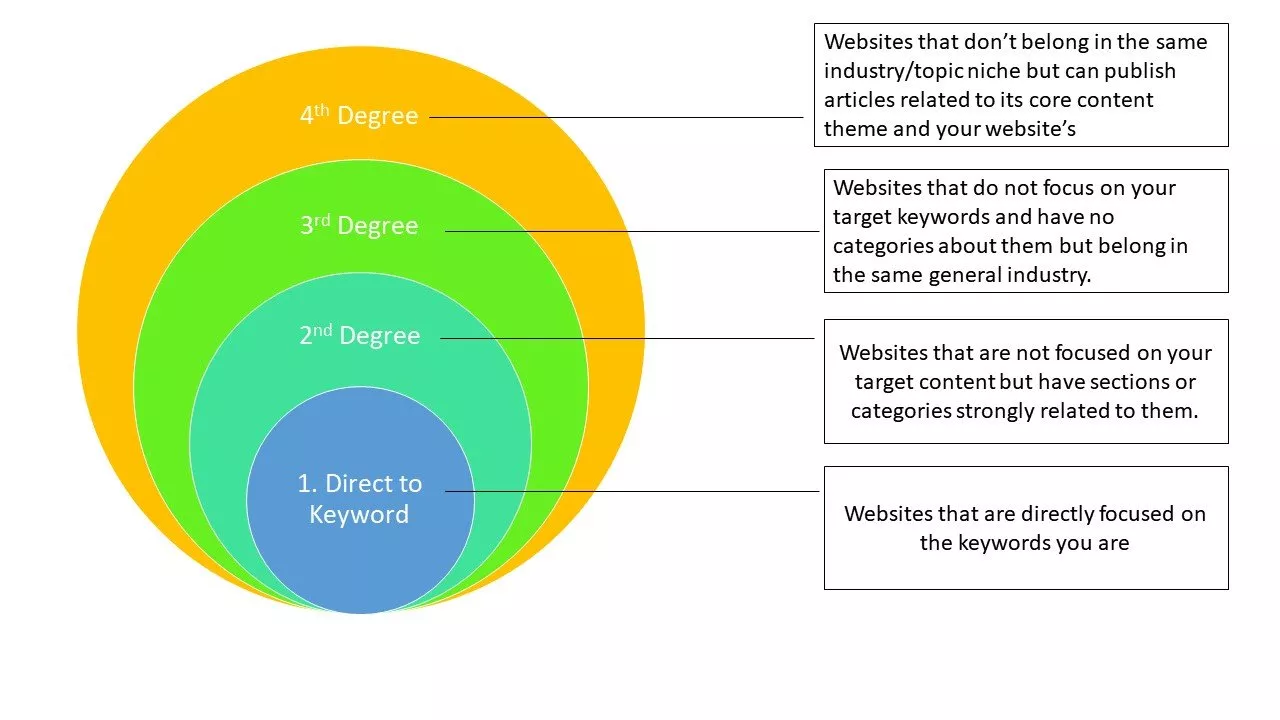 From our example, you can consider health and fitness blogs with relevant food and coffee articles (third and fourth degree of topical relevance).
From our example, you can consider health and fitness blogs with relevant food and coffee articles (third and fourth degree of topical relevance).
Trust
Majestic SEO’s Trust Flow is a good metric to use when checking how trustworthy the site is. Basically, it helps determine how closely the site is linked to seed sites manually handpicked by Majestic. These seed domains are legitimately reputable, and getting links from them are sites that are truly deserving.
Aim links from sites with a Trust Flow of 15.
Authority
Link intelligence tools like Ahrefs, Moz, and Majestic invent authority metrics. These metrics are based primarily on the quality and quantity of links pointing to its pages. And so, the more link equity a website has, the more it can pass to others via external links.
For link building strategies like guest blogging, target sites with at least an Ahrefs Domain Rating of 25 or above or Moz Domain Authority of 30 and above.
Remember, I used arbitrary numbers for this benchmark. Narrow your selection depending on the authority of your site.
As general advice, you should get links from sites with higher DR than yours to keep climbing up for bigger authority signals.
Branding
We’ll cover more on this in our section later on, getting links from entities you want your brand to associate with.
But you have to consider the type of sites you’re engaging with. Are these domains just contacts to get links from, or could they help widen your business's reach (or be potential clients or suppliers for your store)?
How to Build The Strongest Backlinks?
1. Check Your Best Backlinks
The best place to initiate link building is to look at your site’s backlink profile. If that’s an SEO client, they may have a couple of strong domains pointing to the site that you or their team may not be aware of.
Enter the website URL on Ahrefs Site Explorer to get an overview of their backlink profile.
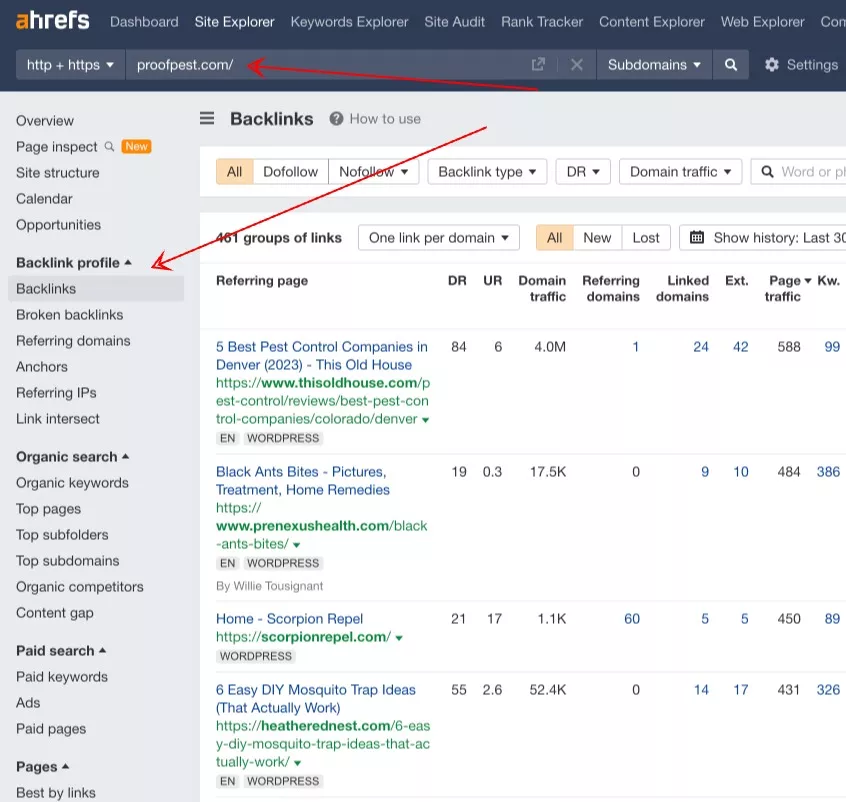
Identify Strong Referring Domains.
The best backlinks come from domains that linked to you in the past. Given either they trusted your brand, you have relationships with them, or they’ve perceived you as an authority source for content - either of these three is a good reason to get another link from their website.
Use Ahrefs filtering options to find these strong domains. Backlinks - Dofollow - DR (50+).
These strong domains may include:
- Authority publications
- Niche websites (e.g., Daily News Coffee).
- Top niche directories and citations
Getting constant editorial links from high-traffic websites drives additional referral traffic to your page.
Leverage Linkable Assets That Work.
If you’re working on a mature website, you may see existing linkable assets attracting links. These pages have targeted a linkable audience (“group of linkers”) and have a proven content type you can replicate for your next content.
To identify these linkable assets, go to the “Best by links” section in Ahrefs Site Explorer. These pages are sorted from highest to lowest number of referring domains, so you know exactly which asset has attracted the most backlinks.
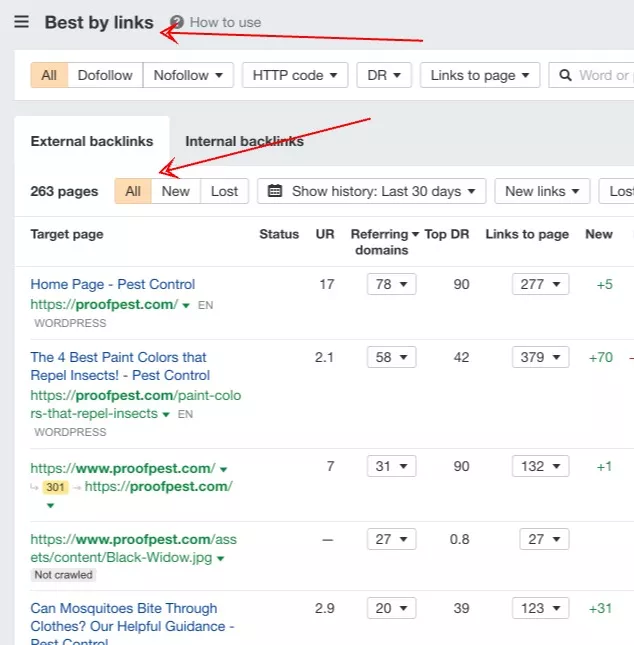
Another tip here is to look at newly published pages with fresh links. Given that they’ve recently updated the page, creators of these pages are more likely to be receptive to email outreach.
It’s also a good way to get a radar of which publications/blogs in your industry are participating in natural linking.
Determine Anchor Texts To Use.
Find keywords your site is currently ranking for. This is where you should start, as Google initially sees your site relevant to these industry terms.
Go to Organic Search - Keywords. Filter the results from position 6 to 20 and a search volume of at least 100.
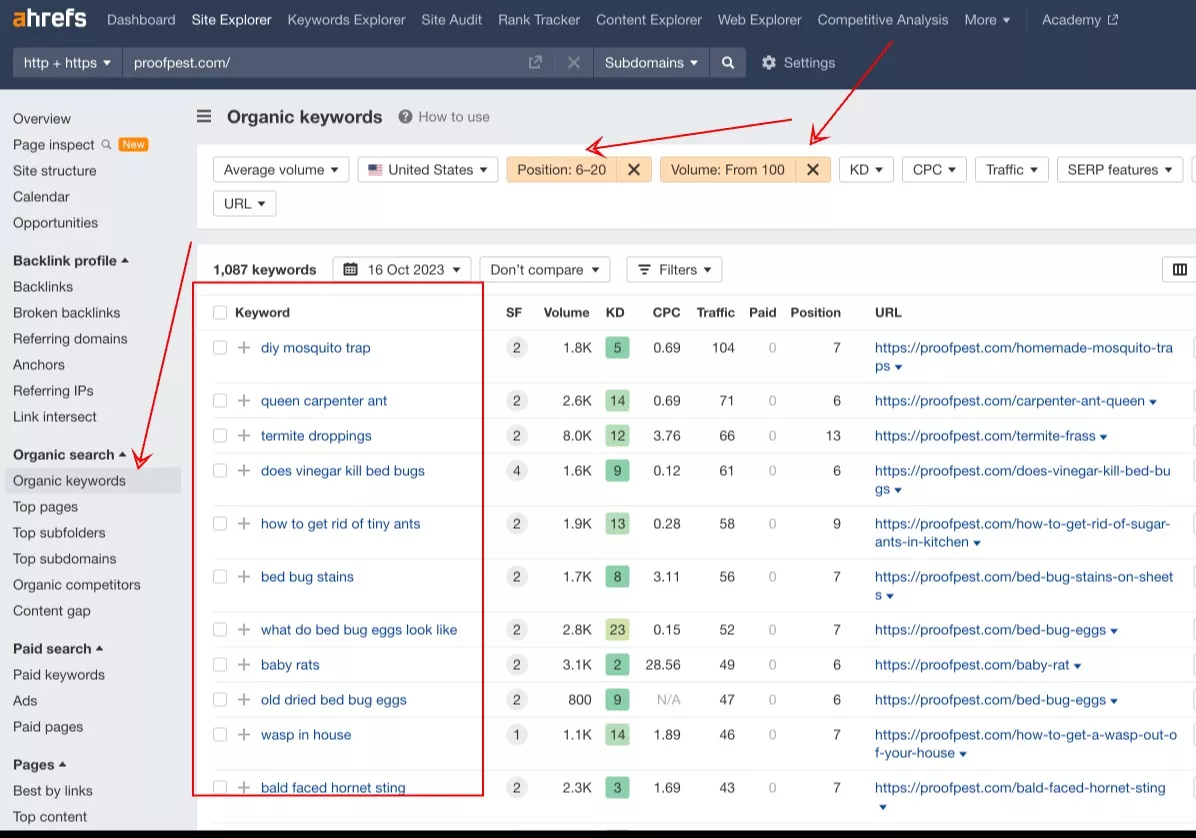
You can use these keywords as anchor texts for pages you’re trying to build up from lower page 1 to the top 3 spots of Google’s SERPs. You might only need a few more links to improve these pages’ rankings.
2. Reverse Engineer Organic Competitors
Sites currently ranking may have a proven link strategy that works for them. Reverse engineering their link profile may open new insights and link opportunities you can replicate (or take advantage of) for your site.
If you don’t know your competitors yet, enter your site's URL on Ahrefs’ Site Explorer and choose Organic Search - Organic Competitors.
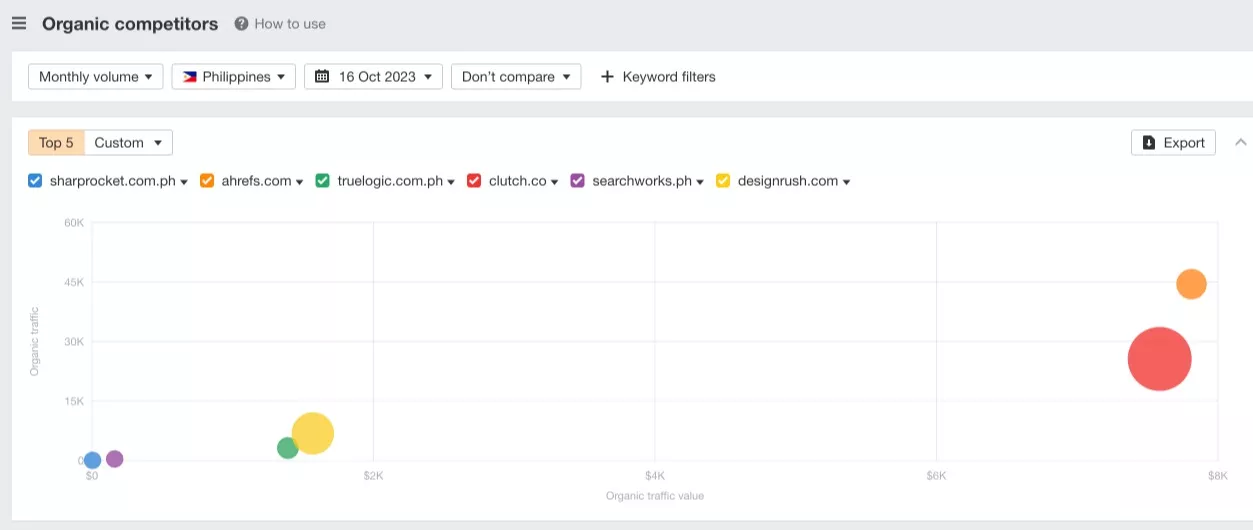
Circles indicate the number of pages your competitors have published on their site. Placements of these circles show their respective organic traffic and value. The closer they are to the right section, the bigger the traffic and value the site has.
Ahrefs is good at identifying your site’s organic search competitors. But if you want more in-depth, you can simply use Google to find top-ranking sites for your head terms.
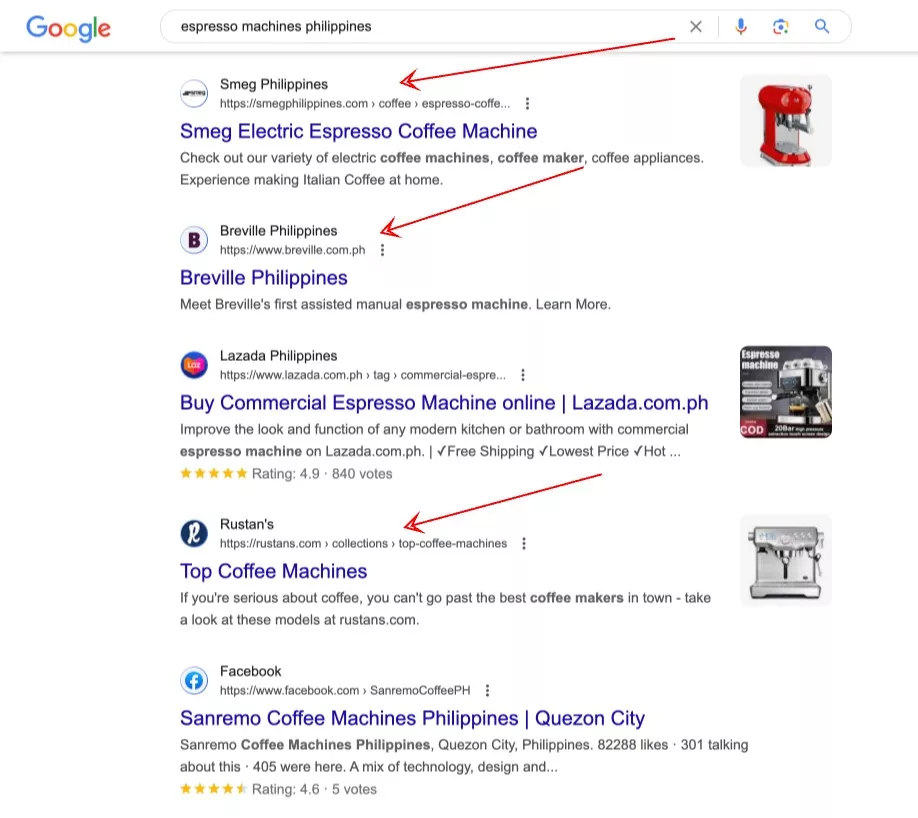
Now that you have a list of organic competitors to analyze let’s see what value you can get from them.
Get Insights For Content Types and Link Patterns
Different industries may have distinct patterns of natural linking. You’ll be more likely to observe it based on the type of blog posts or pages that are mostly linked to your site.
Enter the URL of one of your organic competitors. See “Best by links” and set “3” for “New links”.
Look at the pages receiving new links for the past days/weeks. It may indicate the freshness of content and its linkability. These pages that constantly attract new links can inspire topics for your content.
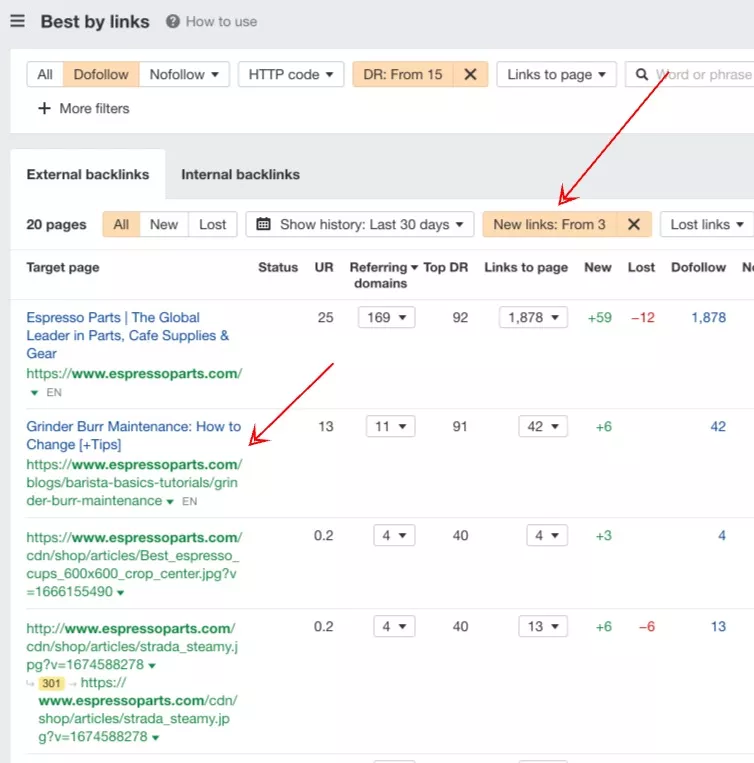
For instance, I’ve noticed this blog post from Espresso Parts that has received an additional 6 links for the past 7 days - Ahrefs’ recent indexed links (though Ahrefs may not be indexing links real-time, it’s still a good tool to monitor fresh links).
Checking the page’s organic performance indicates they’re ranking for keywords like “espresso not coming out”, or “troubleshooting espresso machine”.
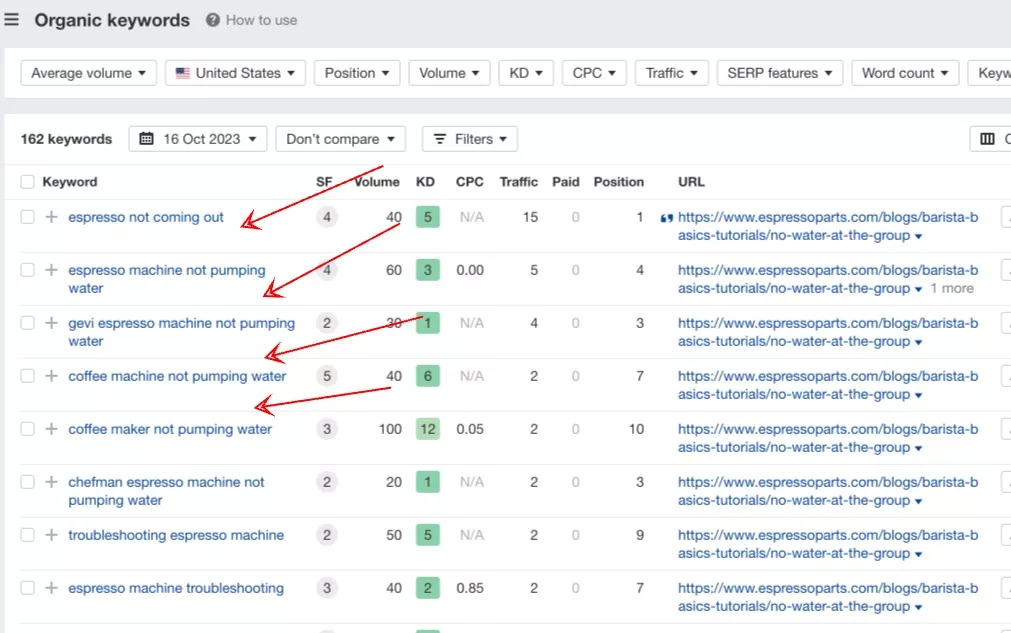
I know for a fact that most baristas and cafe owner's greatest challenge is in the troubleshooting part of coffee brewing using espresso machines.
Now, instead of randomly picking topics, I could create a series of troubleshooting guides showcasing how baristas can fix technical issues with their espresso machines.
By checking competitors’ new linkable content, you’ll find new topics to create for your blog that are likely to attract links when they rank in Google’s SERPs.
Formulate a Link Acquisition Strategy Based On Available Link Opportunities
This is a common tactic in getting strong backlinks to your site. Checking what types of links and how they acquired them can help formulate a link strategy that best fits you.
Run your competitor’s domain using Site Explorer. Go to Backlinks - Referring Domains.
Use the numbers I mentioned earlier to assess your site’s link profile (DR60+, Dofollow, Domain Traffic 5K).
This would require a manual approach, checking each inbound link with its anchor text and destination page (what page is it linking to).
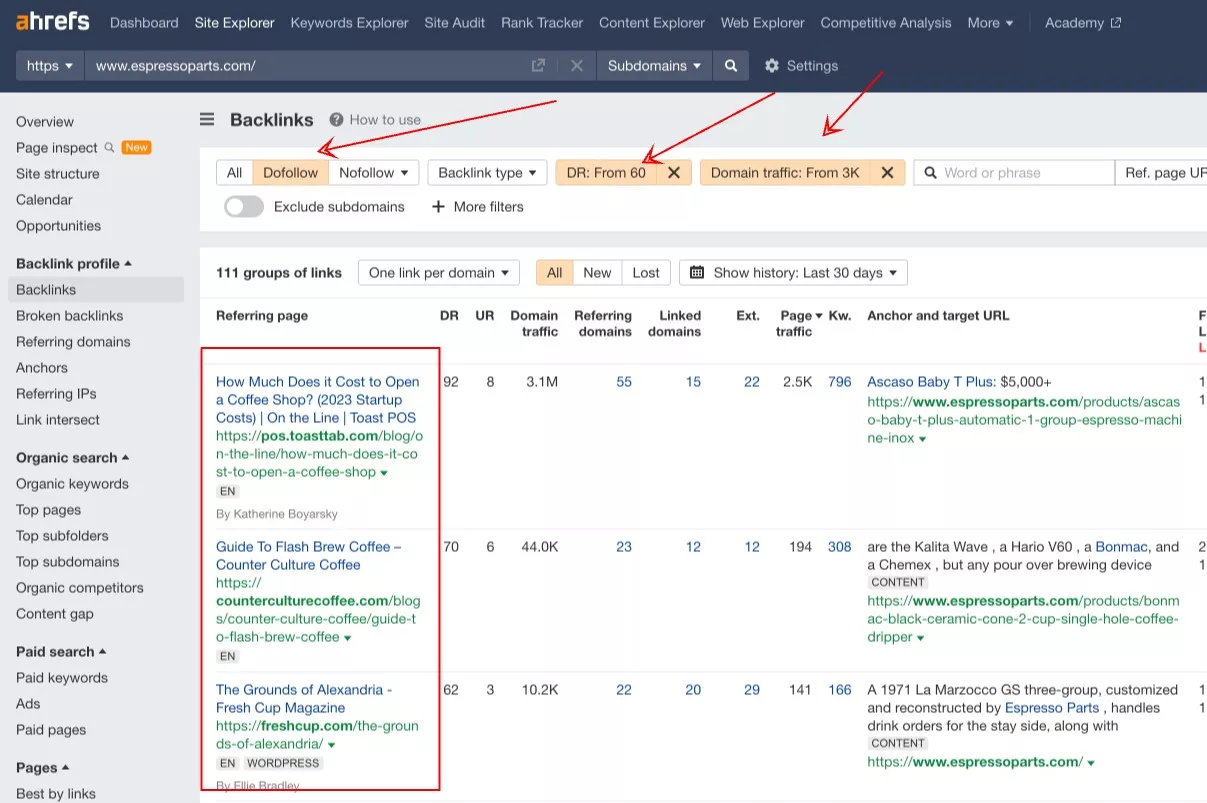
From the given example, I could create new ideas from a competitor's strongest links:
- These product links from Toasttab, CounterCulture Coffee, and Eater result from ranking product pages and Espresso Part’s reputation in the industry. It could also be because of digital PR or the first to launch a new product that attracted buzz from niche product review writers. This sparks insights into how we can leverage new products’ to garner attention from high publications, resulting in brand/product mentions (and potentially links).
- Link on The Wicked Noodle’s National Cappucino Day - are there any celebration or seasonal days in your niche when you can develop creative digital PR campaigns?
By assessing your competitors' exact links and link types, you can get insights into the specific link building techniques currently working in your space. You can only observe nuances in link acquisition through competitor link analysis.
Steal Best Ideas From Similar Businesses in Other Cities
If you’re doing local SEO, the best way to inspire new link building strategies is to steal from similar businesses in other cities.
Bigger cities like New York typically are competitive in search, and you’ll find that most local businesses in those highly populated cities are predominantly investing (or pretty creative) in acquiring local links for their businesses.
And by reverse engineering what they’ve done, you’ll find creative ideas you can apply to your local business.
Do a Google search for niche-related local businesses in one major city.
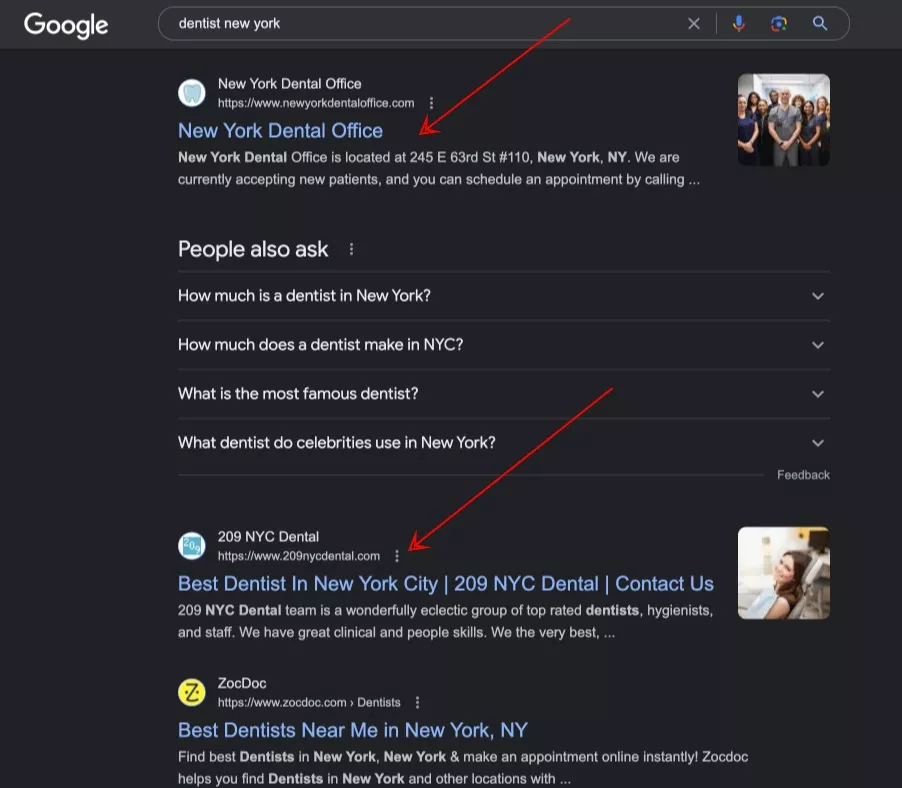
Extract their best links using Ahrefs. Repeat the same process for other ranking local businesses similar to your brand.

Then, investigate how they have gotten those links. Scan each link (or check manually) to find any page where you could find something interesting.
Here are some interesting findings from doing local competitor analysis:
- How America Started Brushing (for local dentists in NYC) - I could create historical guides for my other local businesses.
- NYMag link (for a flower shop in NYC) - do I have some brand stories I can leverage for a local digital PR campaign to get mentions/links from local newspapers?
- Our Favorite Florists and Flower Shops List (for a flower shop In NYC) - prospect for hotels that curate a list of X businesses in location?
I’m only scratching the surface, and I guess there are other link approaches you can find when you see similar businesses in major cities. Test in your local site and scale as you acquire links.
3. Automate Link Building Via Ranking For Research Queries
Manual outreach and follow-ups aren’t enough. Most SEOs doing link building outreach (even our agency) see artificial link building via outreach becoming more difficult, as most publishers now have higher expectations when they read outreach emails.
This probes for alternative ways of getting stronger backlinks to your website to automate link acquisition.
The best way to automate links is to rank for research queries or any informational keywords content creators search for when looking for additional references or citations.
During their research stage of content creation, writers seek to expound certain words or information on their page. And if they find a page covering the topic comprehensively, they’ll link to it from their own content.
Add questions that people might use when looking for sources to support their subtopics.
Place FAQs as part of subheadings and supporting details in your content instead of putting them separately at the end of the article.
I’ve noticed Google could easily understand now what your content is about based on how you properly structure your content.
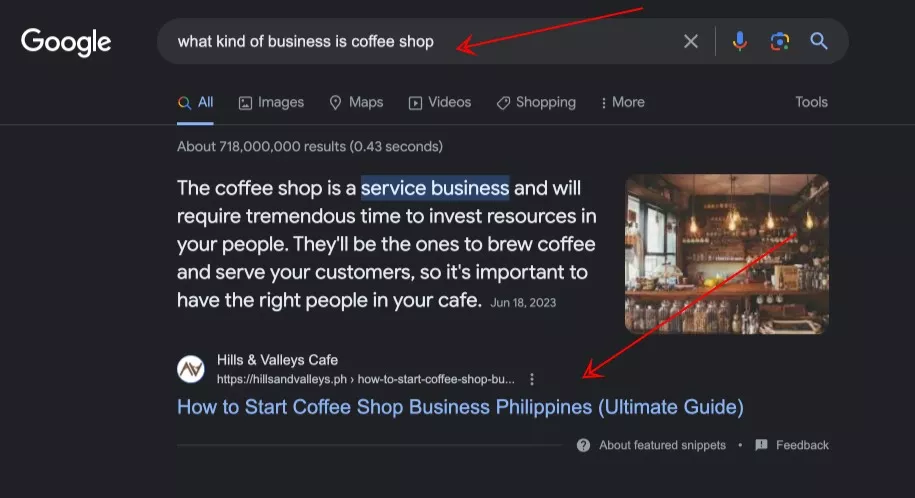
Build artificial links to push the ranking power of these pages.
If your site has a significant domain authority, it is easier for you to rank new content for research queries. For newer sites or lower authority sites, it would require manual link building to push rankings of your page.
This is when you do manual link building using guest posting, broken link building, resource page link building, and niche edits to acquire contextual links to informational content.
You can also build internal links to your linkable asset from your site’s highly linked pages (pages with the most inbound links) to pass some link equity to your info page.
After properly optimizing your content and getting some artificial links, you’ll start ranking for research queries (or their variations) and now attracting natural links from other content creators.
4. Strengthen Brand Through Entity Stacking
Some powerful backlinks can only be acquired through relationships. Your competitors can only replicate these links if they have similar connections with those giving you links.
Start building rapport with high-level entities (sites with which you want to associate your brand). This sends off-site signals to Google that your site targets a specific area of expertise (niche), which helps associate your domain with your target words and phrases.
Build social profiles, citations, and local & niche-specific directory links.
Foundational link building is when you start building links that help send relevance and trust signals to your site (off-page).
Considering sites take time before Google trusts their domains, settling the basic backlinks (but strong ones) is vital.
Foundational links include social profiles, citations, and local niche-specific directories.
Build links like what a typical business does. A legit business will create social profiles like (Facebook, Twitter, Instagram, etc..) fill out all the information on their profile, and use the platforms to promote their content/brand.

Citations are great in promoting NAP consistency, a strong local ranking factor to help your site appear on local map packs.
Develop content partnerships with non-competing blogs.
In bringing value to your email outreach campaigns, seeking mutual benefits for both parties is essential.
The last thing you want to do is pressure your link recipient to give you the link you want without the person reading the value in your email. You should always answer the question, “What’s in it for them?”.
For instance, I’ve collaborated with a coffee blogger to mutually publish content assets on both blogs (not duplicate content). We build reciprocal links, linking to their content from my statistics page and their page to ours.
An interesting angle here is that we don’t compete with each other. My coffee blog is for lead generation purposes (driving inquiries to our B2B franchise services), while his blog is focused on promoting affiliate products and programs.
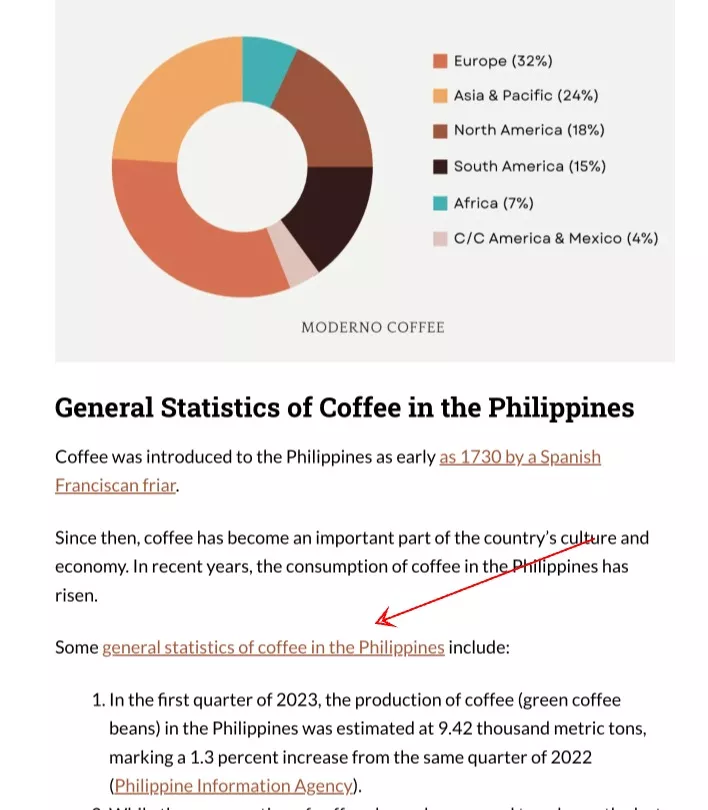
Think of the type of non-competing entities (businesses and individuals) that you’re likely to achieve mutual benefit by co-promoting each other’s content assets.
This is what regular businesses do offline, and if you can utilize the same principle online, you’re likely to succeed in getting stronger backlinks to your brand.
Target legit business sites as link prospects.
The game has changed in link building. Most niche site bloggers and content creators require initial payment in exchange for links (i.e., link buying is dominant these days).
One way to differentiate and still acquire links without incentivizing webmasters with money is to help legitimate business sites struggling to get more website traffic.
A typical business website doesn’t know much about SEO and what it can do for its site - an angle you can use in your email outreach campaign.
Instead of merely offering short-term incentives (i.e., money), you provide to do the work for them.
One way is to send quick reports of industry keywords (or one topic cluster of keywords) they can target for their blog content. Add some suggestions for basic on-page optimization they may have missed doing on their site’s key landing pages.
All these may take 10 to 30 minutes of work but could result in a contextual link to your site.
By providing so much value to business site owners (some of whom don’t have their SEO specialists working in-house), you can request a specific anchor text and link placement that could enhance the value of links you’ll get from the site.
That’s it.
If you have questions, follow me on Twitter @venchito14 and Linkedin.
Outsource Link Building Guide (+Checklist)
In this post, I'm going to show you how to outsource link building effectively with fewer risks.
Also, you'll learn:
- When (and when not) to outsource link building
- 7 outsourcing mistakes SEO agencies make
- How to outsource link building effectively
So if you want to free up your time, focus on other SEO activities, and grow your business…
Here’s the guide for you.
Should You Outsource Link Building?
Yes, because link building is resource-intensive.
Instead of doing the work yourself (or with your team), outsourcing link building to an agency specializing in it is a good move.
Link building is not easy.
To rank your website through link building, you need to:
- Search for link opportunities that are relevant and trustworthy.
- Publish linkable content assets that provide value to publishers.
- Send outreach emails to potential linkers.
- Spend time engaging people and building relationships with them to get links.
- Plus other behind-the-scenes to persuade someone to link to your page.
Benefits of Outsourcing Link Building
Link building frees up your time.
Time you could've spent on doing other SEO tasks like technical SEO, on page optimization, keyword research, etc.
When you want to start link building, you have to do all these time-consuming activities of link prospecting, link qualification, content creation, and email outreach.
This requires 20-40 hours a week (or full-time work) to finish it (assuming you have all skills needed to perform those link building tasks).
Second benefit of link building:
Get focused.
When you outsource link building, you can focus your attention on other SEO tasks you're best at (as mentioned above).
Quality matters in SEO. If you focus on your core SEO strengths, it'll benefit you long-term by giving you compounding results.
Third benefit is:
Save money.
The cost of hiring a full-time SEO to work on link building tasks is higher than hiring a link building agency to do all the work for you.
Plus, you'll have to invest in link building tools like Ahrefs to semi-automate some link building processes.
Outsourcing link building is the wise thing to do if you want to:
- Free up time.
- Get focused.
- Save mone
Now, if you're convinced to outsource link building, the next question is:
When (and When Not) to Outsource Link Building?
Consider the timing of outsourcing link building.
Either you're too early or late to outsource.
When should you outsource link building?
Outsource link building:
- When you want to get links right away.
- When you want to scale and get better links than your competitors.
- When you want to focus and specialize in other SEO tasks, aside from link building.
- When you reach a ceiling after exhausting all strategies and resources, you can think of to get backlinks to your website.
- When you want to get more high-quality links than the types of links you've gotten recently.
- When you lack resources to hire and train SEOs to perform link building tasks.
- When you don't have anyone in your digital marketing team to do off page SEO.
Do not outsource link building:
- When you jump right to link building without doing basic on-page and technical SEO activities.
- When you expect to receive a majority of conversions and referral traffic from links.
- When you confuse digital PR for link building (they do have different objectives).
- When you solely rely on links to improve search rankings of your website.
- When you're in a rush for results and don't have a sufficient budget.
If you decided to outsource link building, let me give you:
7 Major Steps to Outsource Link Building
So, whether you're a solo consultant, agency founder with SEO clients, or online business owner, here is a step-by-step process to effectively outsource link building service providers.
Step 1: Identify your needs.
Start here. If you don't know your link building needs, you can't start properly.
In fact:
The best link building agencies will start asking the question, "what are you looking for?".
If you have an answer to that, it will help you get a good start in finding the right link building partner.
Are you looking for a one-time project (e.g., 50 links to a linkable asset)?
Or you've invested in the idea that link building is long-term and is willing to invest in a month-to-month contract with a link building company?
In terms of the types of links:
Manual outreach links using linkable assets? Guest posts? Niche edits? Local citations?
Next is to set expectations yourself.
Are you going to test out link building first and wait for results to come before you invest in the long-term?
Or do you have a dedicated marketing budget for 1 year just for link building?
Decide it now, so it'd be easy for link building agencies you'll reach out to know your needs.
Remember: Outsourcing link building is getting the right partner and solving your SEO needs.
Second step when you outsource link building is:
Step 2: Make a list of link building service providers.
If you don't know who to choose, you'll start with making a list first.
Like any other type of supplier or service provider, having a list of options is beneficial at the start.
Source out link building agencies from:
Referrals and networks:
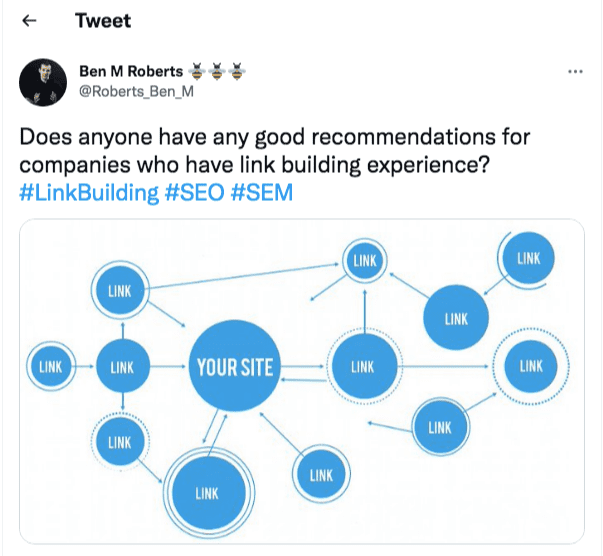
SEO authors or contributors for top SEO blogs:
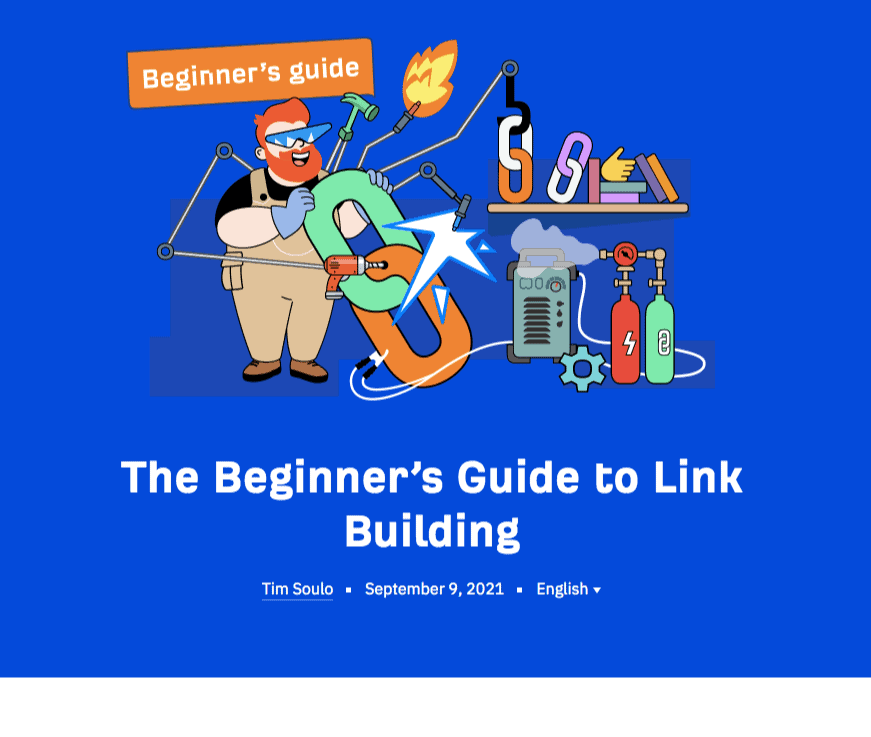
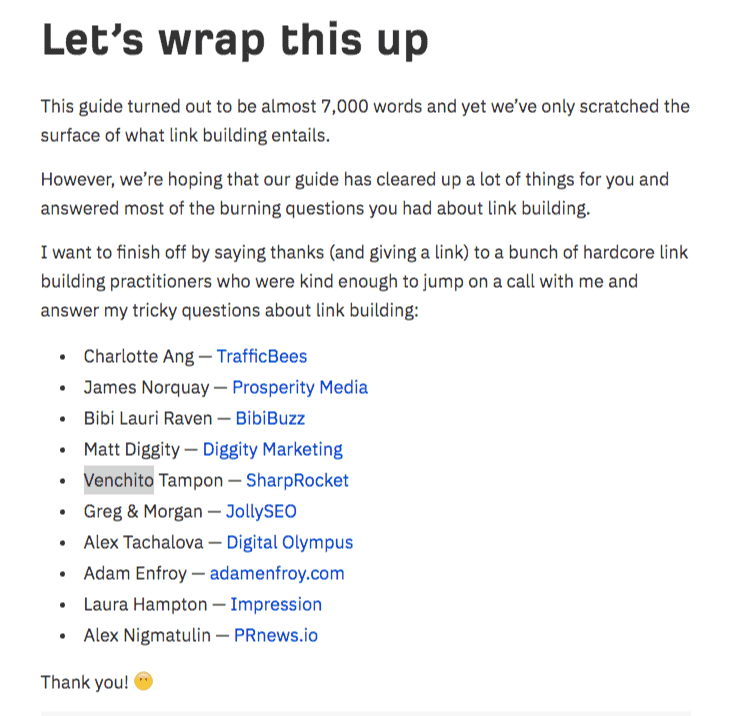
Google search for niche link building agencies:
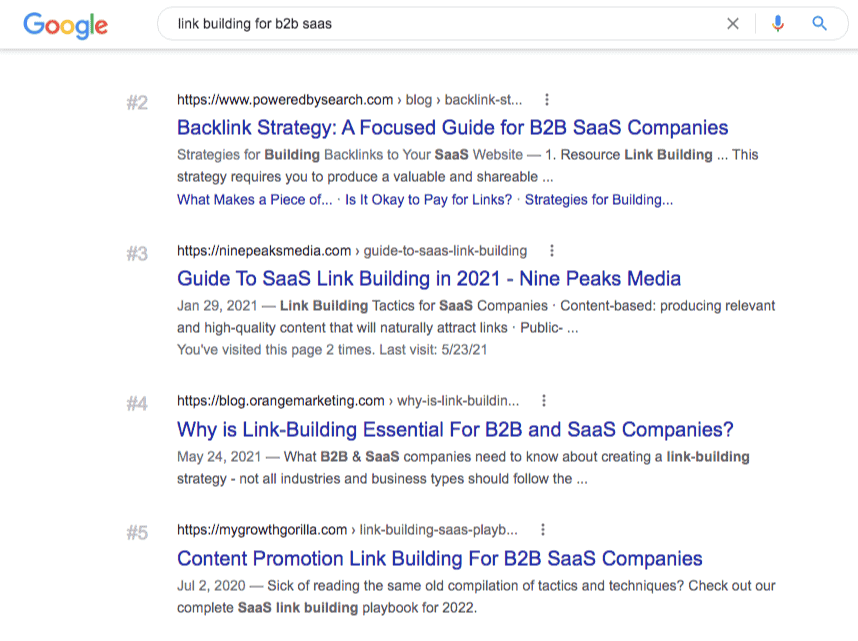
SEO thought leaders on Linkedin:
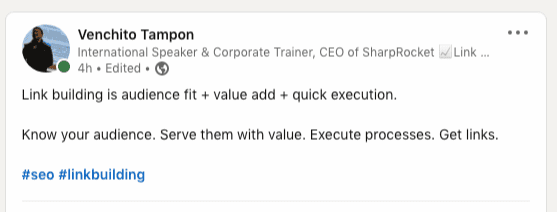
Speaker for SEO conferences and link building training:
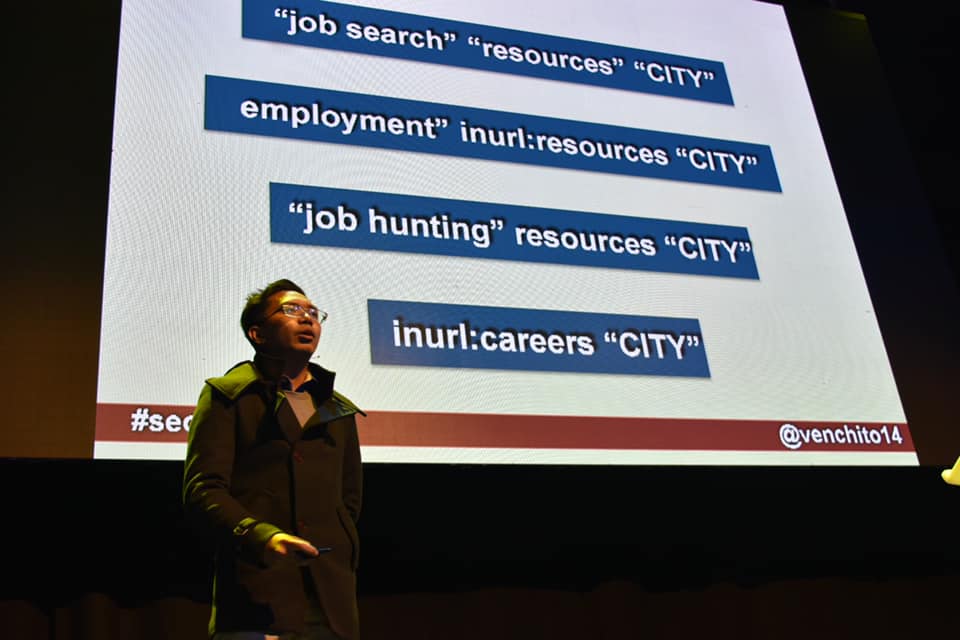
The best way is to make a list of all potential partners.
When you have a list then, qualify them.
To shorten your list, consider the following:
Do they have case studies to show proof of results?
Do they have related to your niche or type of business among their case studies?
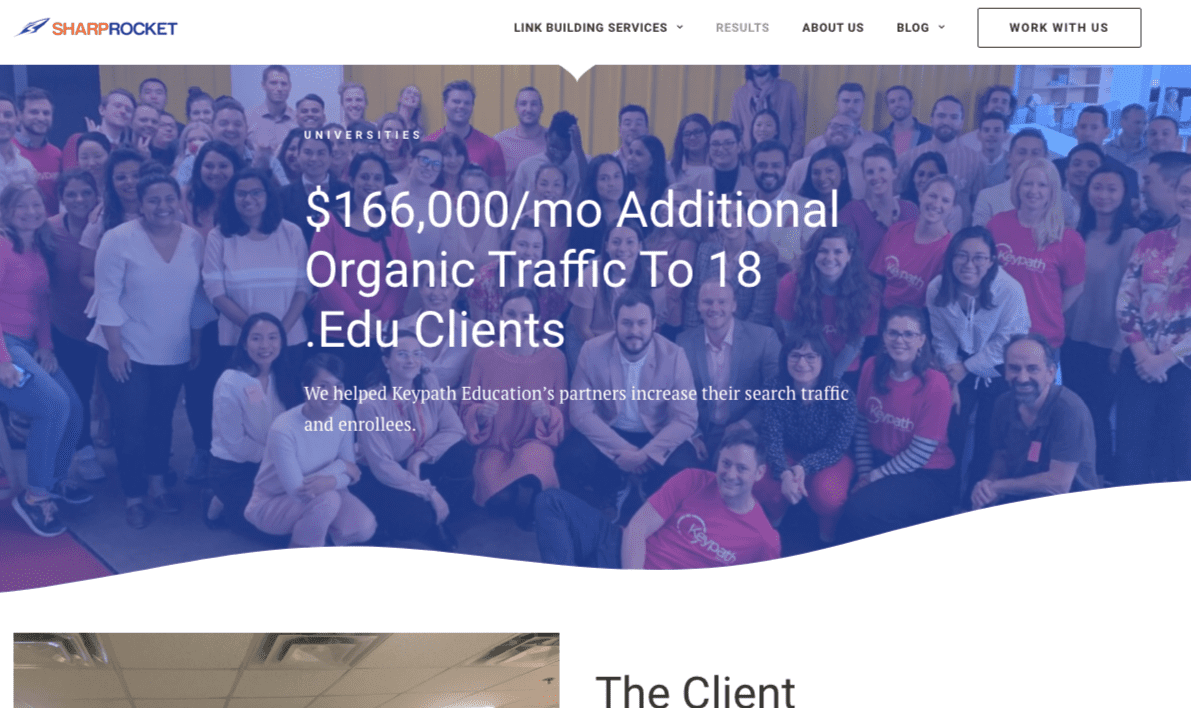
How long have they've been in the industry?
The longer they are, the better. Though it's not a guarantee of expertise, this might show their level of SEO experience.
Are there any SEO thought leaders who vouch for them?
Reputation matters. If they have testimonials from top SEO experts, you could get some confidence in their work delivery.
After that, you need to:
Step 3: Reach out and set initial meetings.
You may have shortened your list based on some information you saw on their websites. It’s good to talk to them personally to ask a few more questions.
Send an inquiry and book a schedule right away.
Now that you're about to call them, your next step is:
Step 4: Learn about their strategy, workflow, and previous work.
Before your call, list down your questions.
And as you start talking to them, you can ask a few more follow-up questions to dig deeper into what they do.
The best thing during your call is:
Tell them about your needs.
Ask about their previous work. Or if they have any experience building backlinks for the type of business and industry you're in.
Let them share about their work, strategy, and process. This can help you discern if they're a good fit for you.
Step 5: Ask for samples of work related to your industry.
You need proof.
Whether it's a list of links, citations, or linkable assets, request it to them.
Step 6: Discuss budget and pricing.
One of the major failures when outsourcing link building is not discussing budget and prices.
Let them know about your budget. This gives them a rough idea of customizing a better link building package for you.
Here are pricing ranges in link building:
- $500 to $1500
- $1500 to $5000
- $5000 to $10000
- $10000 and up
After sharing it, ask about their prices.
Prices vary, but we can categorize it into three options:
- Price per link
- Monthly link building package
- Project basis
- Hourly option
The best pricing option when outsourcing link building is pay per link (price per link).
It is deliverable-based.
And you only get what you pay for. If they don't deliver links, you don't pay. As simple as that.
This is risk-free compared to other link building pricing options where you pay whether or not they build backlinks to your website.
Here's one more thing when you discuss pricing:
Ask if there are any hidden and transaction fees on top of their package.
Why ask this one?
It prepares you for budgeting. Plus, you give a heads-up to your finance team in advance.
At the end of this call, it is essential to ask for proposals.
Step 7: Review proposals
Once you get proposals from potential link building agencies, it's time to decide which one you'll partner with.
Review proposals and discussions on initial meetings based on your needs.
Go through each of the link building agencies, and ask yourself:
Will this particular service provider can attend to my needs?
Based on resources, pricing, timeline and expectations, decide your best-fit link building partner.
Step 8. Decide to outsource link building
You would feel hesitation, doubts, and fears at first.
But the only way for you to know if outsourcing link building is good for you is when you take a risk.
Here is a quick checklist you can save offline:
Free Up Your Most Valuable Resource — Time
The most effective way to grow a business is to allocate resources properly.
If you think outsourcing link building can help scale your business to the next level (more effectively and quickly), do not hesitate.
If you follow every step in our checklist, you'll have stress-proof and risk-reducing outsourced link building campaigns.
How to Get My Business on Top of Google Search
One of the best ways to acquire new customers is to get your business on top of Google search.
By hitting the top search spot for specific commercial and informational keywords, you bring visitors who would potentially convert into customers of your brand. You also help your site be perceived as a trusted solution for products or services.
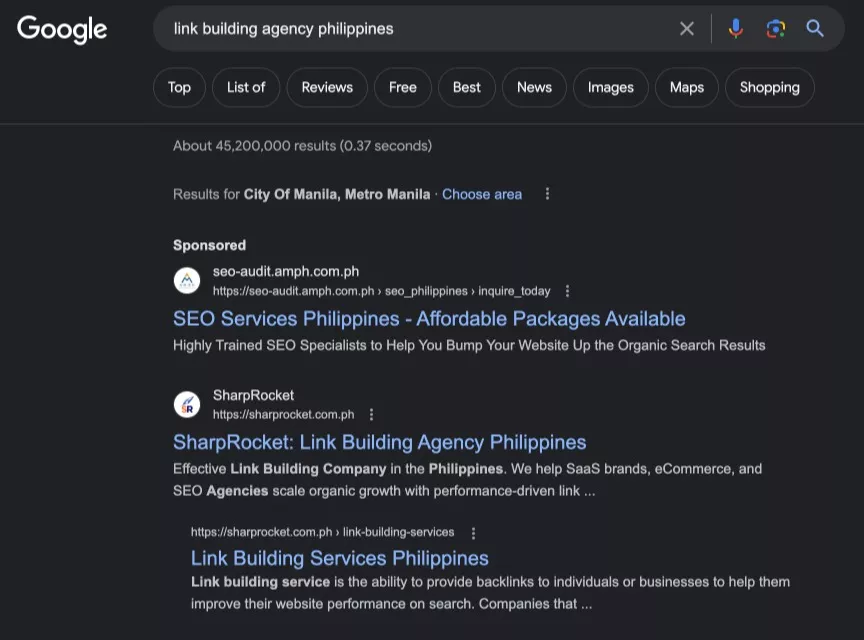
Here are some initial steps you can take to optimize your website for online rankings. Either you do it yourself or hire an SEO agency to do it for you.
How to Get My Business on Top of Google Search
Create Landing Pages For Target Keywords
The absence of a target keyword on a webpage is why some websites can’t rank for competitive search terms.
Having a target keyword on a specific page allows Google to understand the topic of your webpage and tells them how relevant it is to a target search query.
Let’s say you want to rank for “espresso machines in the Philippines”. You need to target the keyword “espresso machines Philippines” on your webpage.
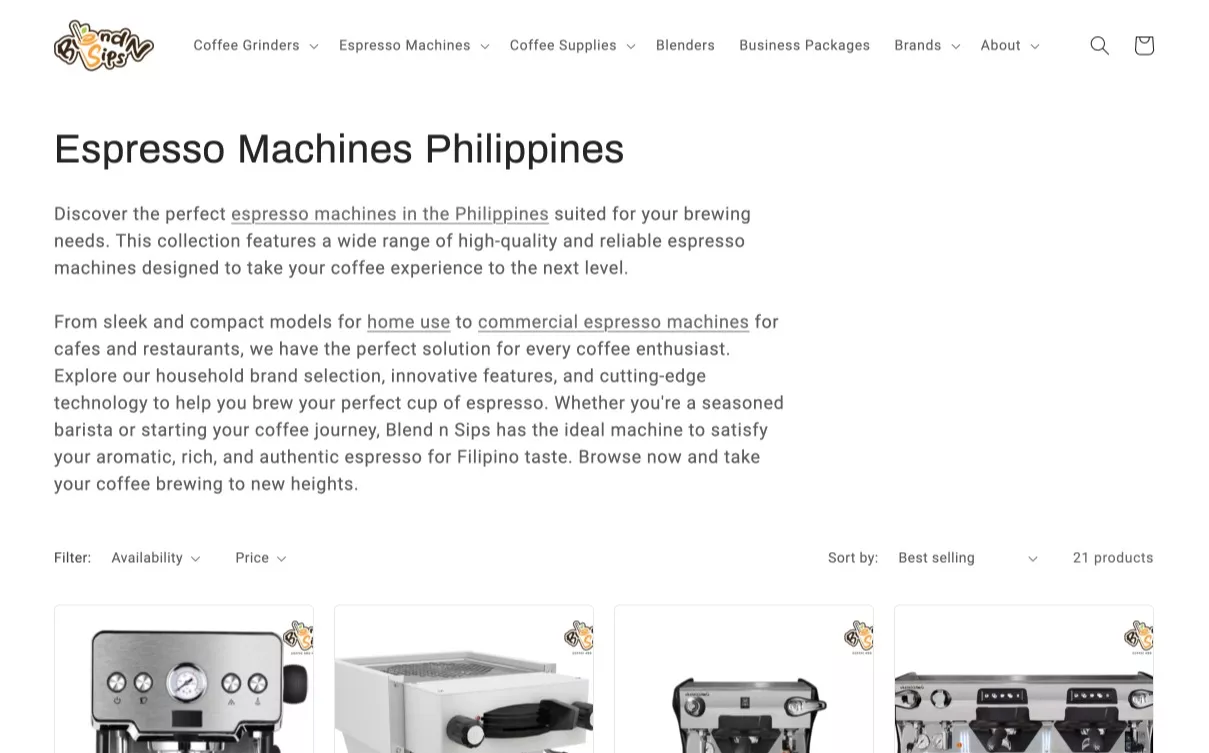
Choose one keyword for each dedicated landing page.
For instance, if you have 10 product categories, you select 10 keywords dedicated to each category. The same is true with service-type businesses. Pick one keyword suitable for your service page.
So list all services or products you want to appear on your website. And conduct a keyword research process to identify the keywords you want to target for each webpage.
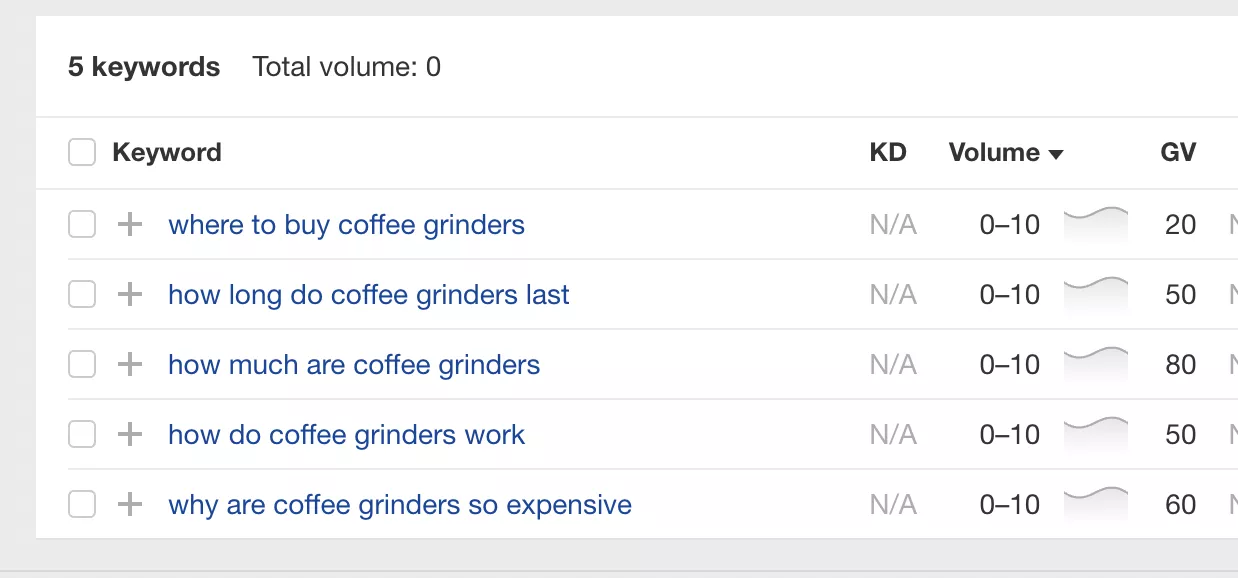
At most, you want to have dedicated pages for the homepage, product page, product category page, service page, opt-in page, about page, etc.
Make Rich Content For the Bottom of the Funnel Pages
The bottom of the funnel pages are your bread and butter pages, mainly product, product categories, or service pages. These assets bring constant money to your business (“money pages”).
With my eCommerce consulting experience, I’ve seen eCommerce sites wanting to rank for their commercial keywords yet having thin content on their product categories, even worse, duplicate product details from their manufacturers’ copy.
I recommend adding at least 500 words to your product categories.
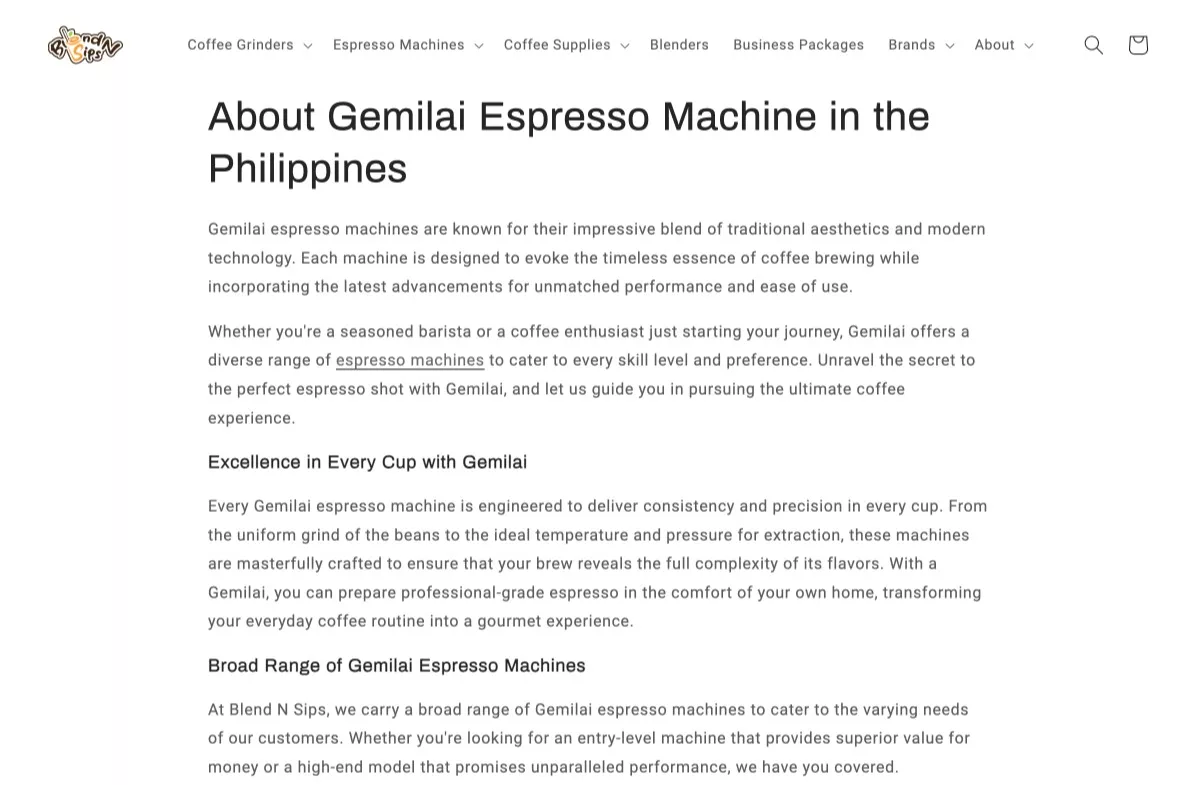
You can address your target customers' objections to purchasing products to increase engagement and conversions.
It could be sections about the following:
- Benefits of your product category (collection page).
- Unique value position (UVP) of your brand against its competitors
- A quick history of your product
- FAQs (Frequently Asked Questions) when purchasing a product type
All this rich content could provide context and more relevant signals to your site’s content theme.
You get an advantage over competitors with thin or duplicate product/product category pages by writing rich content for product pages.
Optimize Pages for Low Time to Value
Time to value is a concept coined by Ross Hudgens that refers to how fast a visitor gets value from specific content.
A longer time on a page doesn’t tell the entire story. Most low visitor time on page means that a searcher has satisfied with the information he has seen on the webpage.
This means that the search user doesn’t have to stay for 10 minutes if he can get the correct information from your webpage and be satisfied with it in seconds.
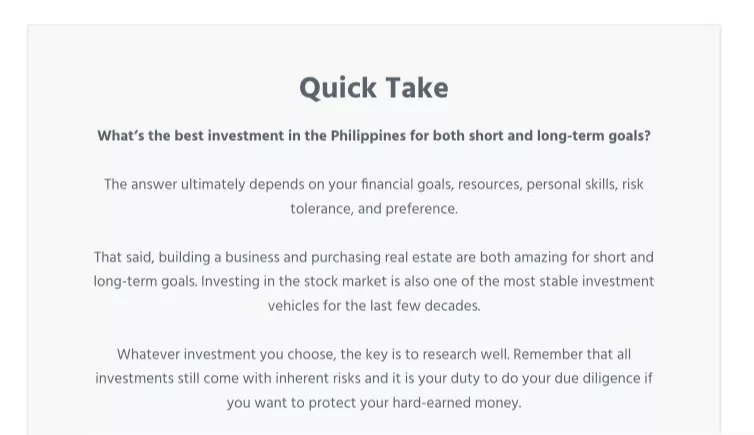
How to optimize pages for lower time to value:
- Place important information on top of your content. Make it easy for users to consume it without scrolling down until the bottom of the page.
- Add tools, visuals, and other interactive content types to increase user engagement and make your content easy to understand.
- Add TL;DR placed on top of blog posts to provide a quick summary of your post.
You aim to make your content the last click. Since you satisfy a user query, they’re less likely to return to Google search results for another result. Being the “last click” can be a good sign of satisfying content.
Publish Blog Content To Build Topical Authority
Not all blog content can best serve your website. You need the correct type of informational content that helps build the topical authority your site needs to rank quickly for its target keywords.
It starts with finding the informational content that can push visitors down to your business's sales funnel.
For instance, if you’re selling “coffee grinders”, think of the keywords your customers are searching for when they are interested in buying or are simply looking for information related to “coffee grinders.”
As an example, here are some informational topics you can target for “coffee grinders”:
- How long do coffee grinders last
- How much are coffee grinders
- How do coffee grinders work
- Why are coffee grinders work so expensive
One SEO misconception today is that lower search volume won’t help drive search traffic to your website.
It may be valid from individual pages targeting the search query. But in the grand scheme of your domain, you’re enhancing the topical authority of your website, giving signals to Google of the quality of content, expertise, and experience of your website.
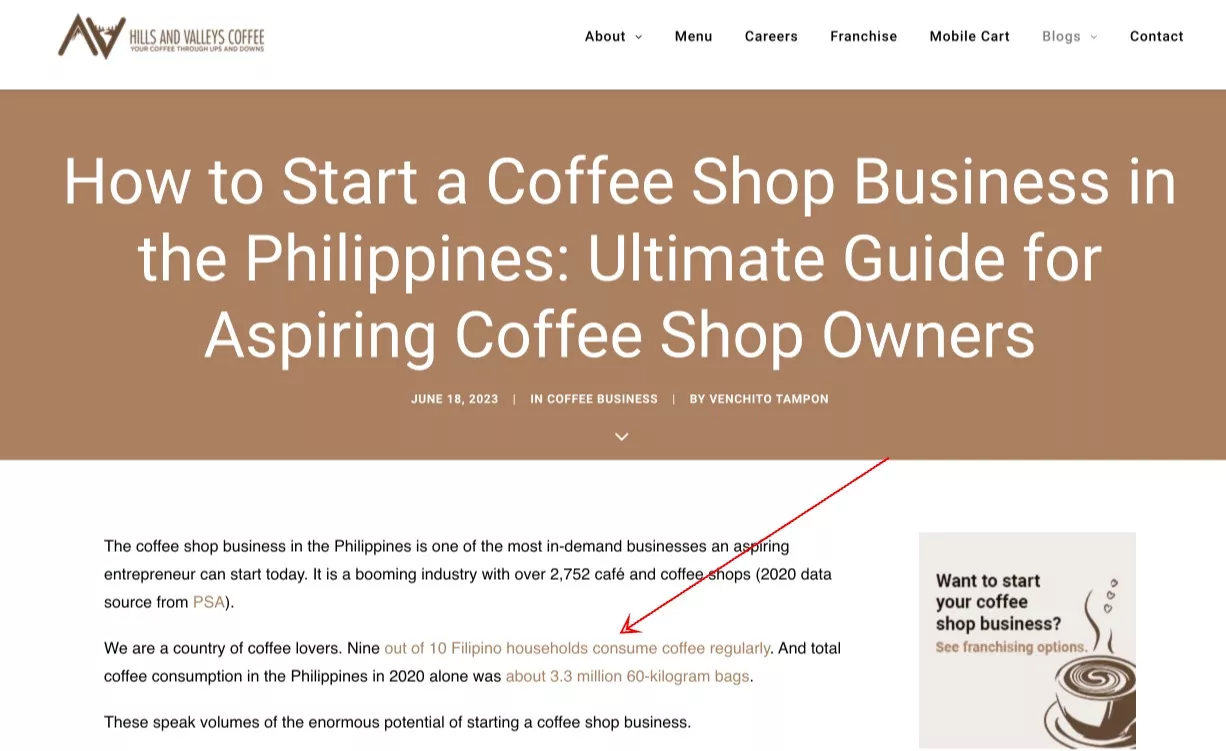 '
'
Doing so helps you quickly rank even better for other related keywords.
Target one topic cluster at a time, preferably the ones your business would want to be on top of Google search.
In my given example, I would first create a topic cluster for all keywords related to coffee grinders. Then, publish all relevant informational content on “coffee grinders.”
Then, once I’ve finished shelling out “coffee grinders” content, I can move to other topical clusters, such as “espresso machines.”
You want your business to be seen as a topical authority in a niche. And even with a low authority site, you could drive organic traffic and online revenue to your website by building a robust topical authority.
You can check out this guide on the importance of topical authority and semantic SEO.
Hire Human Expert Writers
In the age of AI-driven content, you could publish 50 to 100 articles monthly using tools like ChatGPT, Frase, and other AI tools to help you scale content marketing for your blog.
While that’s an advantage to lower operational costs and increase efficiency.
In industries where Google strictly assesses the quality of content, in the case of Your Money, Your Life content, you’re more likely to get higher returns if you hire human expert writers.
Human expert writers, especially the creative ones, can use their expertise and experience to craft more rankable content than AI content.
The recent experiment from Reboot Online clearly showed that AI-generated content ranked less strongly (on average) than human-generated content.
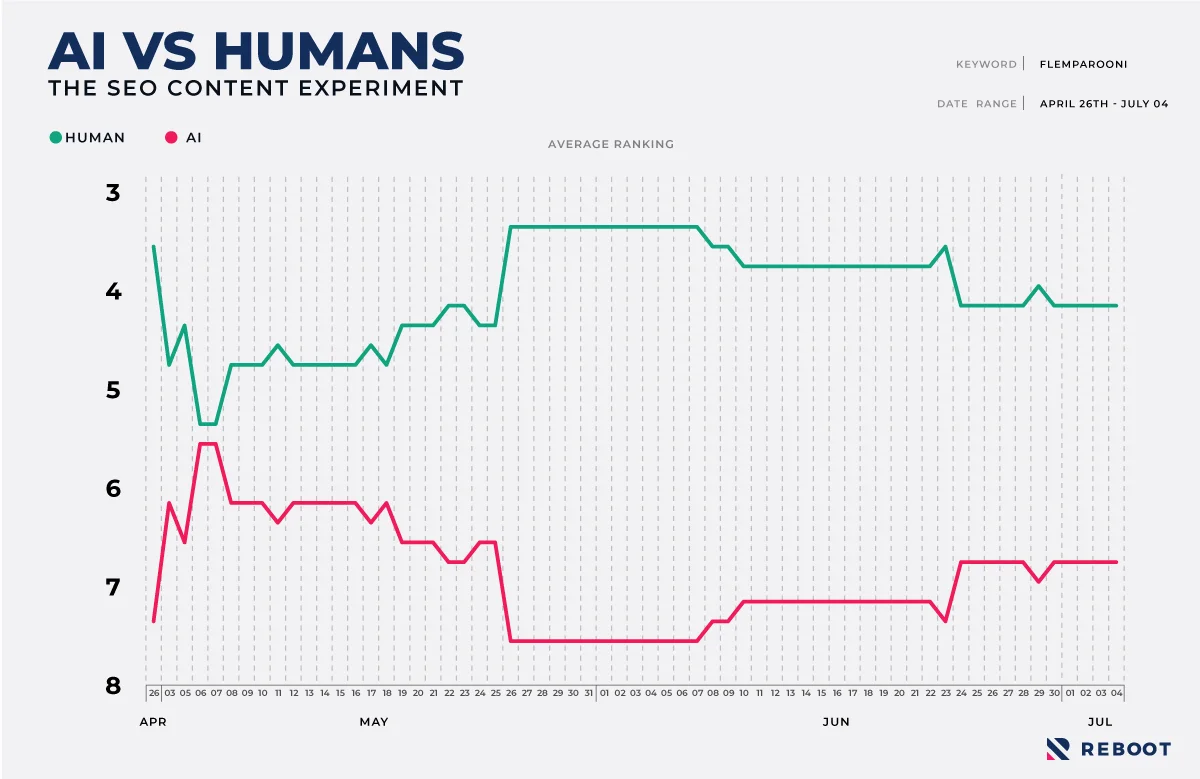
It may only apply to some industries, but with niches where high specialization is required, you should hire human expert writers for your blog search engine optimization needs.
Here are more tips when creating content with human expert writers:
- Bring your writer’s experience into the content. With E-E-A-T, you could get higher organic visibility by pushing out content with the author's unique experiences, making it different from all other high-ranking pages.
- Search for active authors in your space, and incentivize them to write for your blog. Either hire them, give premium access to a product, online store vouchers, or any incentivization methods to get them to contribute content for your blog.
- Through these authors’ reputations in the industry, you can leverage these entities’ associations with your site, making your brand more recognizable.
- Invest in hiring specialized experts that are also good writers. It would be much easier for content to fly its performance when the quality of information is solid and comprehensive enough than content written by general SEO writers.
Hiring human expert writers provides better opportunities for quality content and building your brand as a thought leader and subject matter expert in your niche.
Effective On-Page SEO
While the quality of content helps in driving user engagement, you can’t ignore the best on-page SEO practices to put into play. If you want to climb Google’s rankings, you need to ensure you’re putting your keyword in the following fields:
- Title tags
- Meta description
- Body text (i.e., opening sentence)
- H1, H2 text
- Image alt text
Here are some on-page guides to help you get started:
Manage Technical Health
Technical SEO is laying the groundwork to build the foundation for your SEO success. Without it, there will be limitations to skyrocketing your site’s organic traffic in Google’s search engine results pages (SERPs).
Taking care of it as you start your website or as part of your preliminary SEO process is a game-changer. This includes having the proper technical knowledge of crawlability and performance security.
Here are some guides to give you a more breadth discussion on technical SEO:
Build The Right Type of Backlinks
Backlinks are still king. If you’ve done an excellent job with your technical SEO, on-page SEO, and content, you need backlinks to climb Google’s SERPs.
Link building helps improve the crawlability of your site. It adds more semantic SEO signals to your website through external web assets (i.e., guest posts, profile pages, and brand mentions, which not only help you get the desired rankings but increases your brand awareness.
Contextual links are the correct type of links to pursue, as it allows you to choose specific anchor texts that will give weight to the value of the link you acquire from the website.
As a business owner, you can pursue many link opportunities using the link building strategies that fit your website, industry, size, and resources.
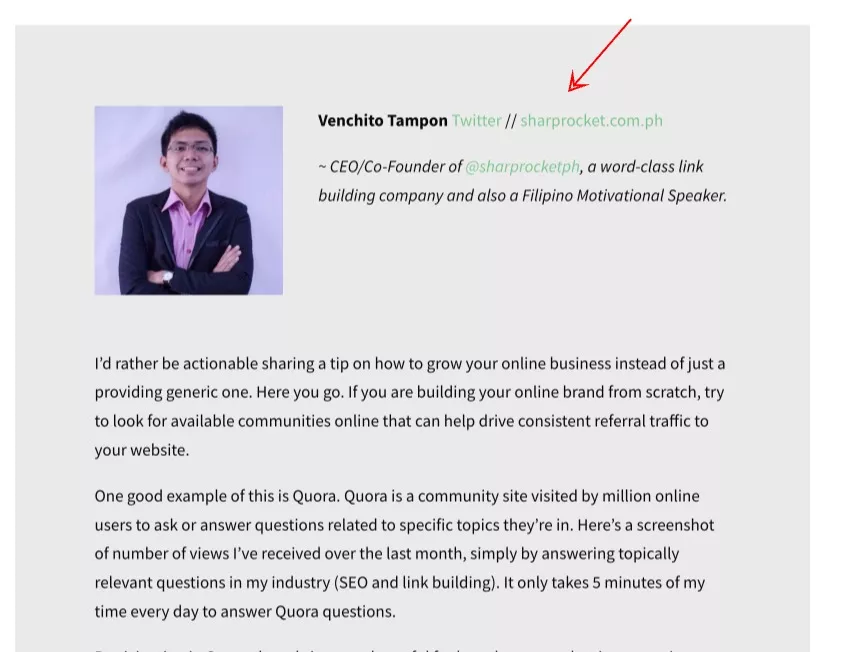
Here are some actionable guides from years of experience to give you a headstart in building the correct type of backlinks:
Aim For Freshness of Content
Publishing new content and updating the old ones to satisfy better search users is highly correlated with Google rankings.
That said, you can’t neglect the power of SEO blog writing to publish newly fresh content on your website. It helps in faster crawlability and can also assist you in getting passive links via ranking for informational keywords.
If your website constantly publishes new quality content for a particular topic cluster, you’re building your site’s topical authority on that niche content theme. And thus, it gives you more relevant signals to rank quickly for any keyword within the topic cluster.
On top of new content, you must also update your existing content. You’ve done work writing those content assets, and it only takes a few more hours to update and get ranking rewards from this initiative.
How to aim for content freshness:
- Create a content calendar to publish relevant content for your blog consistently. By having a systematized process, you can produce constant quality output from your pool of writers.
- Hire and train good writers. Through in-house training, you develop the quality and discipline of your writers, making it easier to foresee regular updates to your blog.
- For old existing content, check the freshness distance of each ranking page for your target keyword. See how many months or weeks ranking websites update their pages. If it is three months, six months, or a year, then you must account for it when you make your content fresh.
Don’t Ignore Long Tail Keywords
As a business owner or SEO client, thinking only for your primary head terms is usually one or two words (i.e., coffee machines). That’s your top traffic and potential revenue generator, as they typically have a high search volume.
However, don’t ignore targeting long-tail keywords with your pages. Especially if you’re starting to do SEO for your website, you won’t have much site authority to compete for competitive head terms where ranking websites have a DR50 and above.
That said, you can quickly get search traffic simply by ranking for long-tail keywords that most industry giants would ignore.
You can use Ahrefs to find these long tail keywords, or with Google Autocomplete and Suggestion Box at the bottom of Google’s SERPs, you’re likely to see different variations of industry terms and long tail keywords you can rank with content.

Use Authority Sites To Rank For Competitive Keywords
While you can’t easily rank for competitive head terms with a new domain, you can quickly use other authority sites to rank for competitive industry terms.
Take a look at this screenshot from Charles Floate. These pages rank for YMYL content, such as pharma, which would take hundreds of links to get to the same spot.
All these ranking pages are published and sponsored by brands to get the rewards of constant referral traffic back to their site.
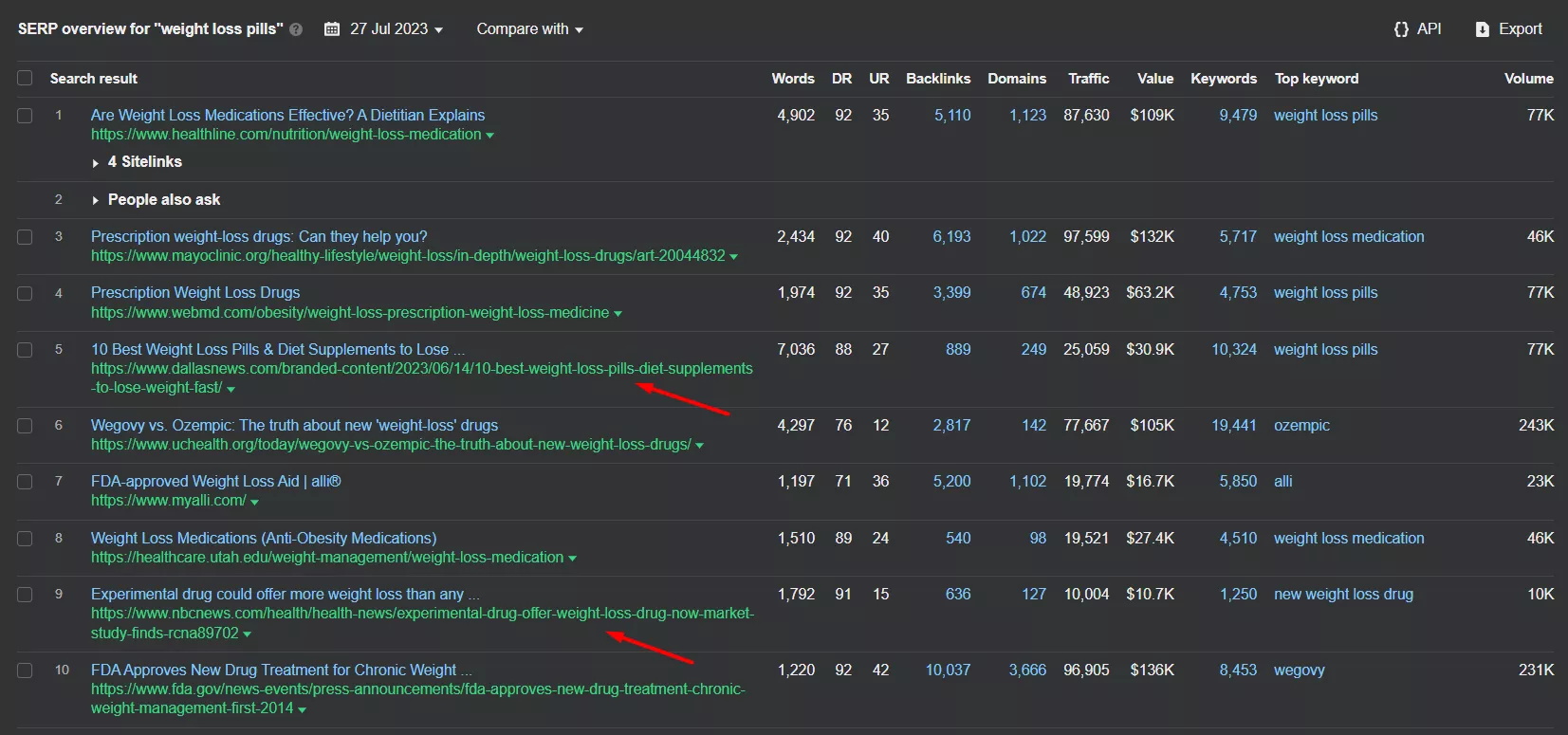
How to use authority sites for link building:
- Find industry sites trusted by Google where you can craft and publish content and quickly rank for your target keyword. Use the keyword as a URL slug in your “guest post” (i.e., best espresso machines).
- Link out to these authority sites before doing outreach. You’ll succeed more in getting content partnerships when you’ve featured them first on your website.
- Build more contextual links to your site’s other external content (guest post) from another guest post (tiered link building) to boost all external pages’ linking power, which can immensely help your domain’s online rankings.
Associate your brand with authoritative entities, as it could benefit you in many ways, especially in the age of E-E-A-T, where trust and authority sites linking to you can have a powerful impact on your site’s branding and rankings.
Dominate Local Map Packs
If your business is targeting customers within a city, region, or small country, local SEO is an integral part of your search engine optimization campaign.
You would see that a huge prime real estate for local SEO comprises local map packs with the highest clicks.
You can rank for organic search engine results pages, but with local map packs appearing on top of it, optimize your brand for local map packs and acquire more brand exposure.
Here are actionable tips to dominate local map packs:
- Create and optimize your Google Business. Ensure you have a complete profile, actual reviews of customers, and accurate business information. See this guide to optimize Google Business Profiles.
- Place NAP (Name, Address, Phone Number) across all your important pages on your website.
- Get local citations. Start from this list of best citations.
- Localize your website content by optimizing for local-centric keywords (coffee shop in New York).
- Get links from websites representing the same target local area.
- Place QR codes on your stores, incentivize customers to get reviews for your Google Business Profiles.
Acquire online real estate by being visible on organic search engine results pages (SERPs) and local map packs. Vying for both places increases organic visibility for your business.
Get Your Business On Top of Google Search
The best practices in ranking your website on top of Google searches differ from industry to industry, so better have a good context of your brand, content, and resources.
By following the actionable tips above this article, you can expect a gradual growth of progress for your site’s organic traffic and online revenue.
If you want to get your business on top of Google search, our SEO and link building services can help you.
SEO Quick Wins: Low Hanging Fruits You Can Implement Immediately
The ability to gain high-impact results from low-hanging fruits sets an excellent bar for SEO professionals when servicing clients (or their in-house brands).
With SEO quick wins, you can prove search engine optimization for your client - social proof that it is a marketing channel worth investing in.
What is SEO quick wins?
SEO quick wins are immediate results that impact rankings and online revenue by implementing quick SEO changes to the website, either on its technical health, content, or links. By focusing on 20% (high-impact SEO tasks), you can gain 80% (superb results).
Here are some high-impact SEO techniques you can implement immediately on your site.
SEO Quick Wins: Low Hanging Fruits You Can Implement Immediately
1. Add internal links to improve lower page 1 ranking pages
Internal linking is an underrated SEO tactic for most SEO professionals. Since most of the SEO world focuses on link building (getting external links from other sites), internal linking is less likely to be appreciated.
By linking internally between your pages, you pass link power from one page to another, which gives the destination page a much more capability to rank higher for its target keyword.
This is especially true if you have a big website with strong domain authority. All you need to do is to execute an internal linking strategy and see a quick ranking performance for your most important pages.
How to do it?
Step 1: Find pages sitting on lower page 1 or 2 rankings.
You can find low-hanging fruits from pages already ranking on lower page 1 or page 2.
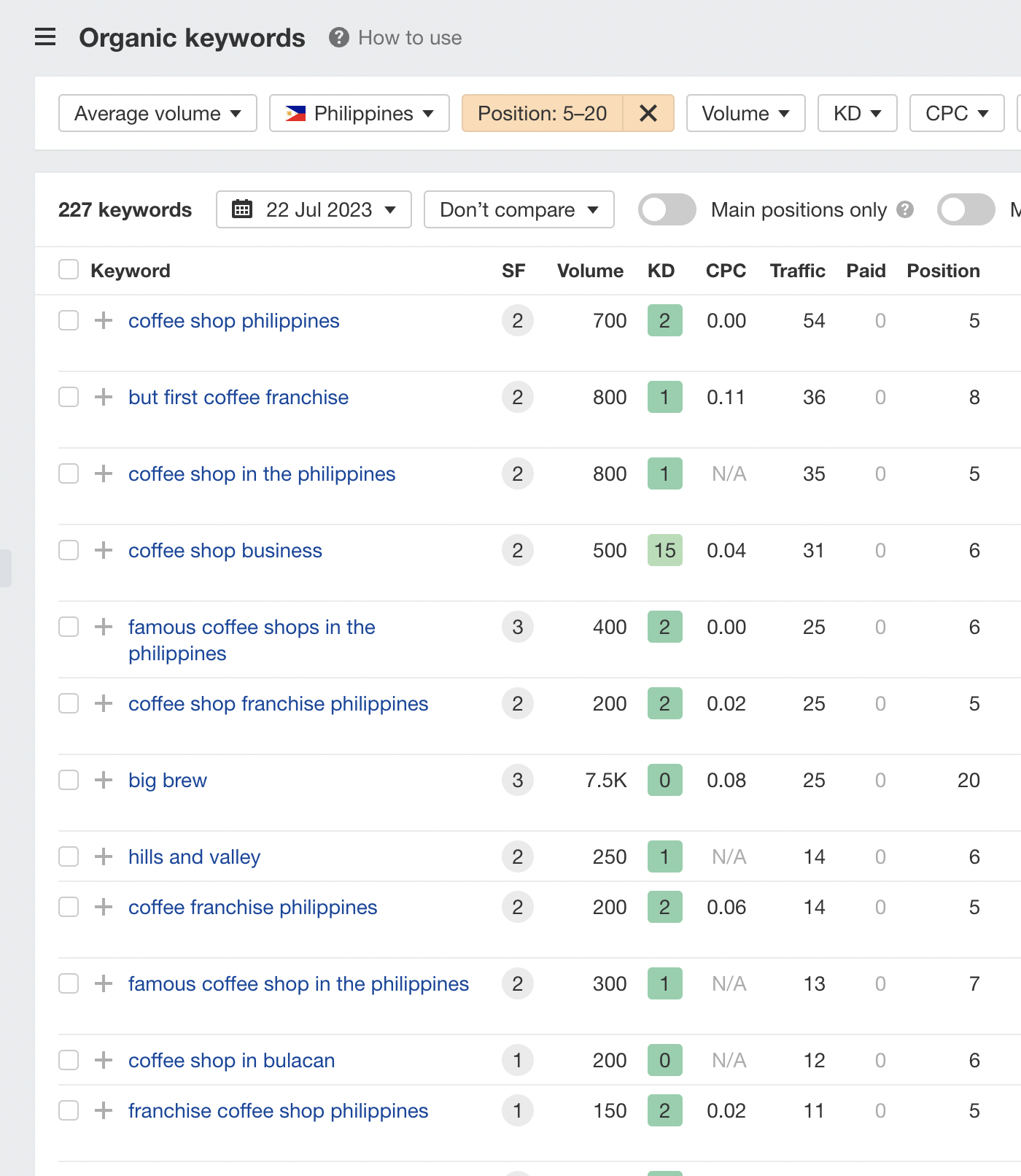
You want to boost the pages’ rankings and get the most clicks by ranking on the first three spots of search engine results pages (SERPs).
Step 2: Include internal links on your top linking pages.
Find blog content with the highest number of inbound links. You can use Ahrefs’ Best by Links to use these informational pages.
Edit those content and include internal links to your money pages.
Do more internal linking. Find other relevant content using the site search operator on Google and see which blog content you can quickly edit to add internal links.
2. Capture traffic from long tail keywords.
Long tail keywords are three or more words but have lower keyword difficulty than fat head terms.
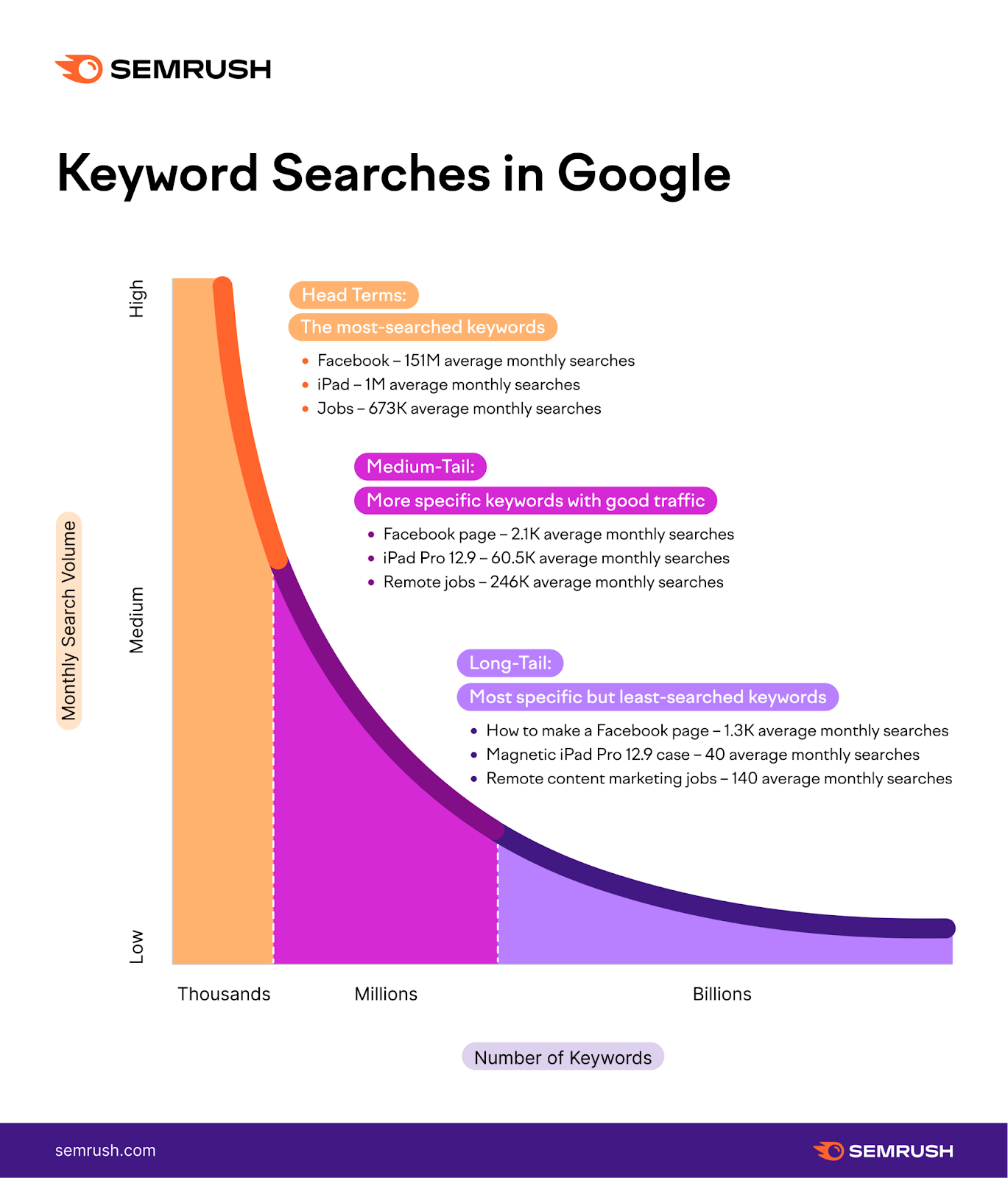
One mistake most starting SEOs make is targeting highly competitive keywords with their SEO campaigns, particularly with newly built websites.
Essentially, Google would want to reward sites with thousands of quality pages that have established trust and topical authority deserving to rank for their fat head industry terms.
It is best to find long-tail keywords that don’t have much competition but are driving specific visitors to your website.
For instance, if you’re running an eCommerce store, don’t neglect long-tail commercial keywords that can bring highly targeted ready-to-buy customers (e.g., dual boiler espresso machines). They may only have ten or fewer monthly search demands, but you could easily rank #1 for this keyword.
Compared to optimizing your website for only one head term, that would take you years of trying to dominate at least the first page on search engine results pages (SERPs).
I’ve been doing SEO for a coffee and tea supplies eCommerce brand and have successfully generated targeted website traffic weeks after its launch.
I created landing pages for different long tail keywords about our selling products' sizes, types, and layers (i.e., espresso machines).
So we’ve had different collection pages for these keywords:
- Dual boiler espresso machines
- Single group espresso machines
- 2 group espresso machines
- Commercial espresso machines
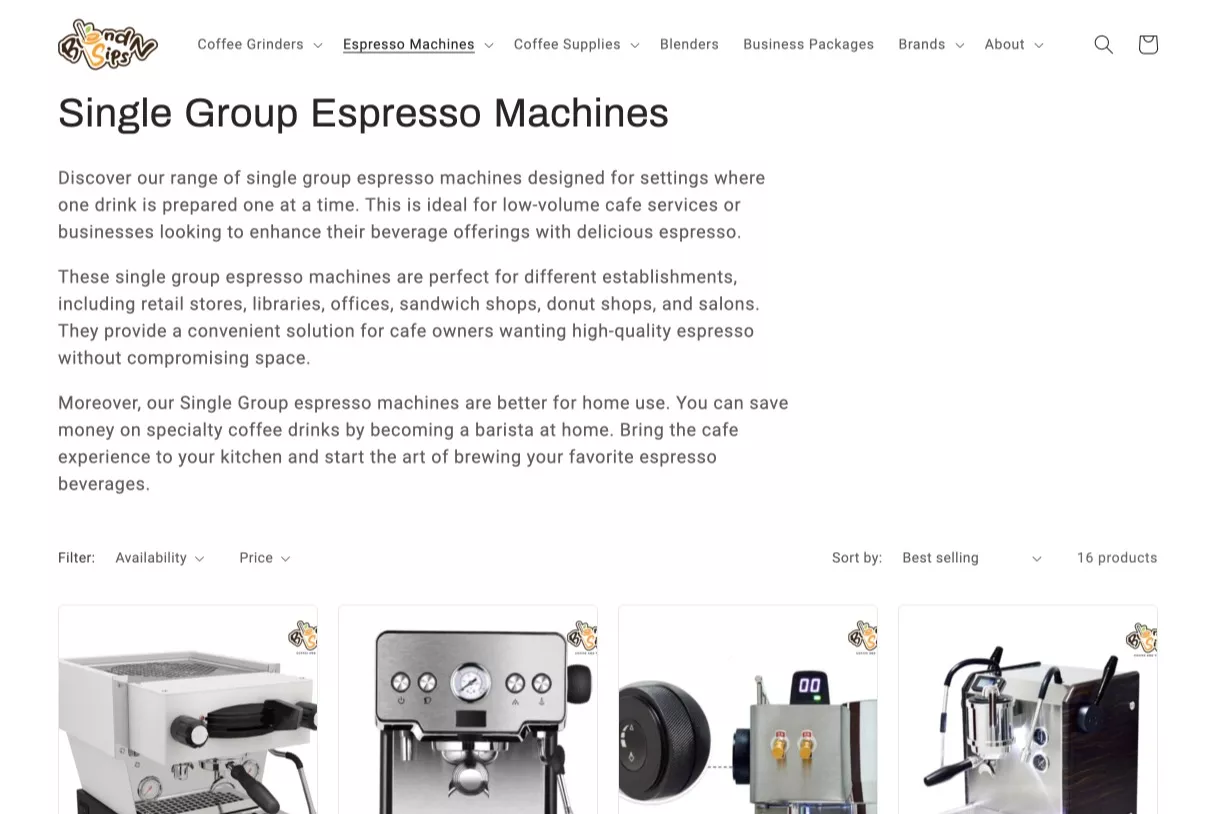
The best thing when you target long tail keywords is that it is so easy to rank with fewer or zero links, regardless if your website doesn’t have much domain authority.
3. Publish blog content to build topical authority
How content marketing is perceived as part of the entire marketing strategy hasn’t changed at its core.
Content marketing assists in driving relevant, targeted traffic to the website. You make your brand more visible to potential customers by ranking blog content for their informational keywords.
Google won’t understand your site unless you give it the proper context and content theme. Publishing more blog content on a specific topic cluster gives search engines semantic signals about your site.
More blog content could help you establish yourself as a topical authority, thus, allowing you to rank for more competitive keywords.
One of the SEO quick wins to build topical authority is answering questions about the product/s you’re selling.
For instance, if you’re selling “espresso machines”, you publish blog content about:
- can espresso machines make regular coffee?
- how long do espresso machines last
- where to buy espresso machines
By publishing these content assets with internal links to your category page (i.e.,/collections/espresso-machines/), you drive more awareness from your customers about your products while establishing the topical authority of your brand.
First, find keywords related to the specific product category you’re trying to rank for.
You can use Ahrefs’ Keyword Explorer to find questions related to your commercial keyword:
Answer The Public is a great way to source out queries related to your category page.
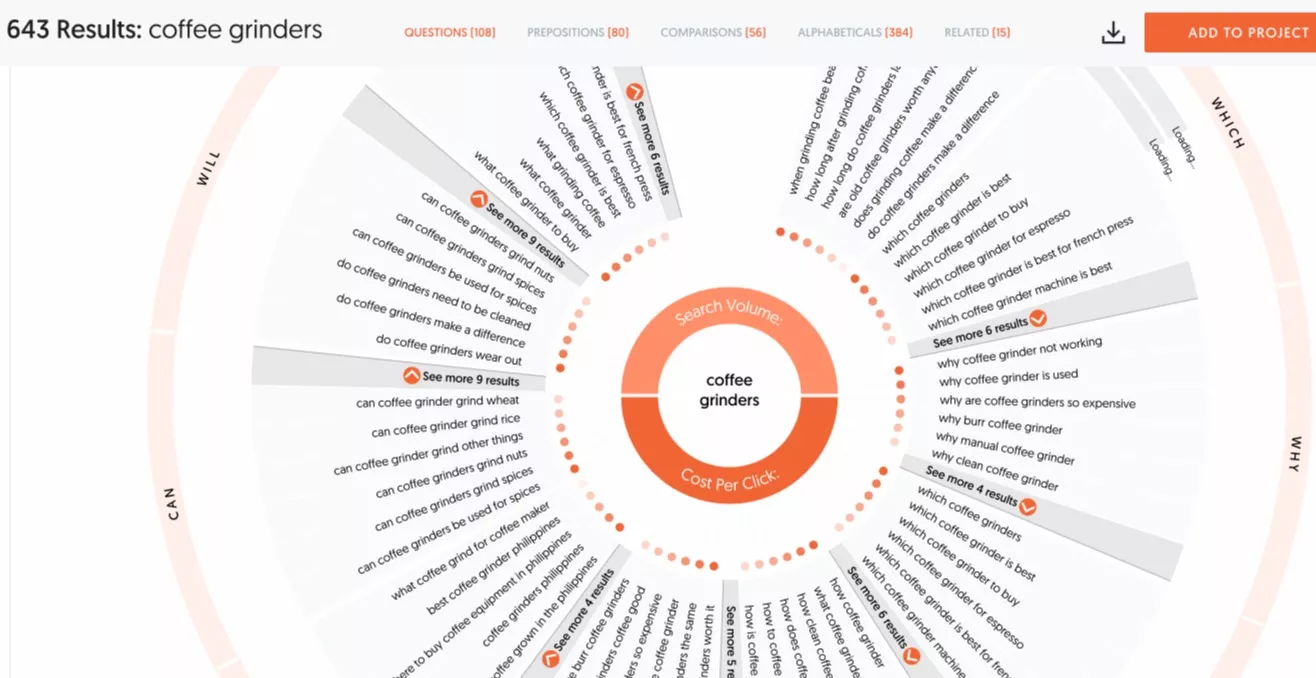
You won’t find most of these questions to have a high search volume, but they all give context to your site. Like what Koray Tuğberk said in his interview at Matt Diggity’s Youtube channel, you connect semantic points within your subject theme by writing topics even without much search volume.
4. Steal competitors’ search traffic.
If you’re doing SEO for new websites, it’s not easy to rank for your target keywords and garner traffic (Google Sandbox), as you’ll have to wait for a few months for Google to trust your site and make it deserving to rank for your target keywords.
One way to get relevant traffic is to steal visitors who’re going after your competitors’ brand names.
For instance, I’ve recently published several alternative pages for our coffee shop franchise.
Instead of solely ranking for coffee franchises, we researched specific coffee brands aspiring business owners want to franchise with.
We’ve got the list ready with Ahrefs and quickly publish “alternative pages” targeting each branded keyword.
We included enough information about our competitors’ franchises and even added FAQs to answer common questions related to the search query. Through this, we could rank better for the keyword.
The good thing with alternative pages is we can drive awareness and potential conversions by writing a section about our offer, with the angle of giving another (alternative) option for potential franchisees.
We quickly rank for competitors’ keywords (page 1) after days of publishing it.
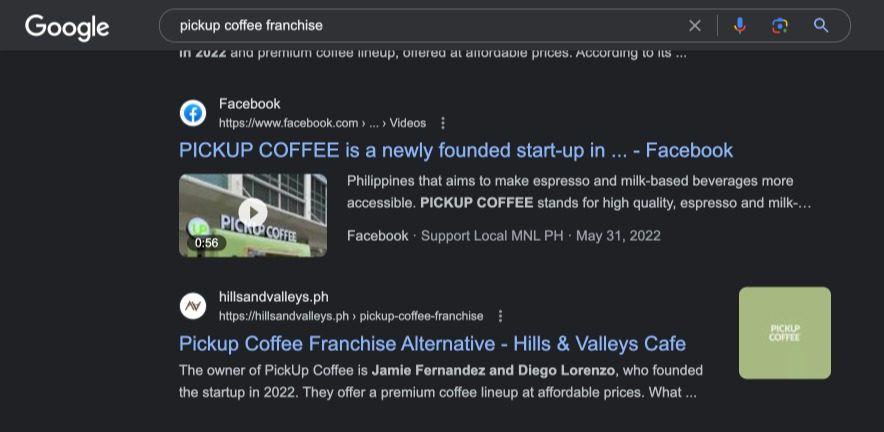
Interestingly, we have competitors that don’t have websites yet, and we’re not capturing most of the traffic they should be the ones getting in the first place.
5. Reoptimize content for newly discovered keywords.
SEO is continuously optimizing content to rank #1 (if you’re not hitting the spot) or simply sustaining your rankings by maintaining it.
One of the high-impact SEO tests you can do is discover new keywords you can target with your existing content.
How to reoptimize content for new keywords?
I use Google Search Console to identify queries for which my pages rank manually, but I need optimization.
Search Console > Search Analytics > Click on Pages’ Filter > Click a Page > Choose on Queries’ filter.
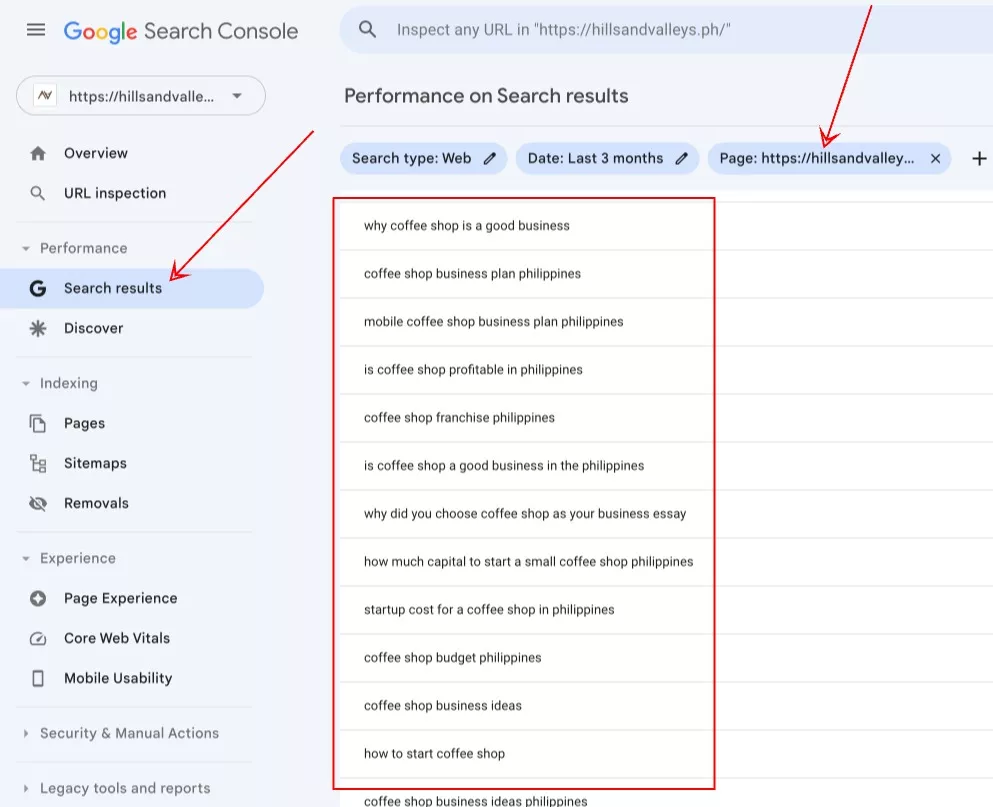
Once I’ve determined which queries deserve optimizations, I can choose from any of the following content optimization methods:
- Provide logical and accurate answers to these queries.
- Give the best definition to “what is” queries to steal paragraph snippets.
- Add LSI keywords to your title tags from newly discovered queries. For instance, words like “template”, or “guide” could help your page get more visibility for those search queries.
6. Reverse SEO outreach
Link building is a tedious task, mainly requiring manual outreach initiatives. It is a numbers game that even the most experienced SEOs need help to secure links for their clients.
While the era of sending outreach emails is still at its peak, many content publishing sites divert their attention into publishing linkable assets that are likely to attract natural links via ranking for informational keywords.
I’ve covered this in my SEO outreach guide, where the proposition isn’t just sending outreach emails to land contextual links but publishing solid content assets that can earn passive links.
Here are a few steps to do reverse SEO outreach:
Step 1: Find topics or informational queries other content publishers are searching for.
Other SEO content creators call it “referential keywords”, where bloggers, journalists, and content publishers use these queries when looking for references or additional resources for their content (i.e., news stories).
You can use Ahrefs’ Keyword Explorer to find referential topics in your space. Use terms like “template”, “statistics”, or “data” plus your topic of choice.
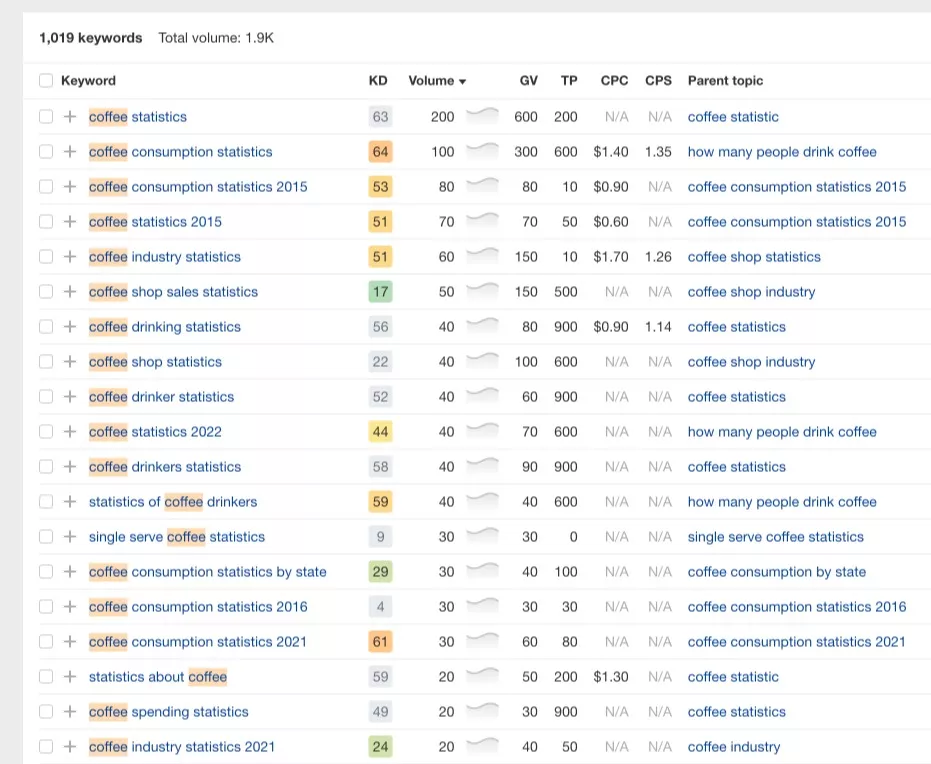
Step 2: Create a linkable asset and improve its rankings through internal linking.
If you’ve got a high-authority site, you can leverage internal links to push your linkable asset to the top spot.
Find top-linked pages on your site and include internal links to your linkable asset.
Acquiring editorial links pointing to your referential page from other external content, such as guest posts, is best.
7. Publish new pages for keywords you can’t rank 50 to 100 position.
If your blog content performs well on search engine results pages (SERPs), it ranks for multiple topically-relevant keywords.
An average SEO would assume the page tends to rank #1 or even just page 1 for all these keywords.
Reality: You won’t rank for some keywords because each search query entails a different satisfaction for its user.
There are specific keywords with ranking “list pages”, while other search queries tend to lean on specific product pages.
While you can do complete on page optimization, proper internal linking, and acquire as many inbound links for the page, it won’t rank simply because the search query is satisfied with a different intent, and it needs a whole new page that only discusses the topic.
How to maximize these new keyword opportunities?
Your initial step could be to look for all the keywords your best pages currently rank for positions #50 to #100. This means Google sees the page as relevant to the search query but won’t intend to rank it for the reasons I mentioned earlier.
You can use Ahrefs’ Site Explorer to find keywords your page is ranking from position #50 to #100.
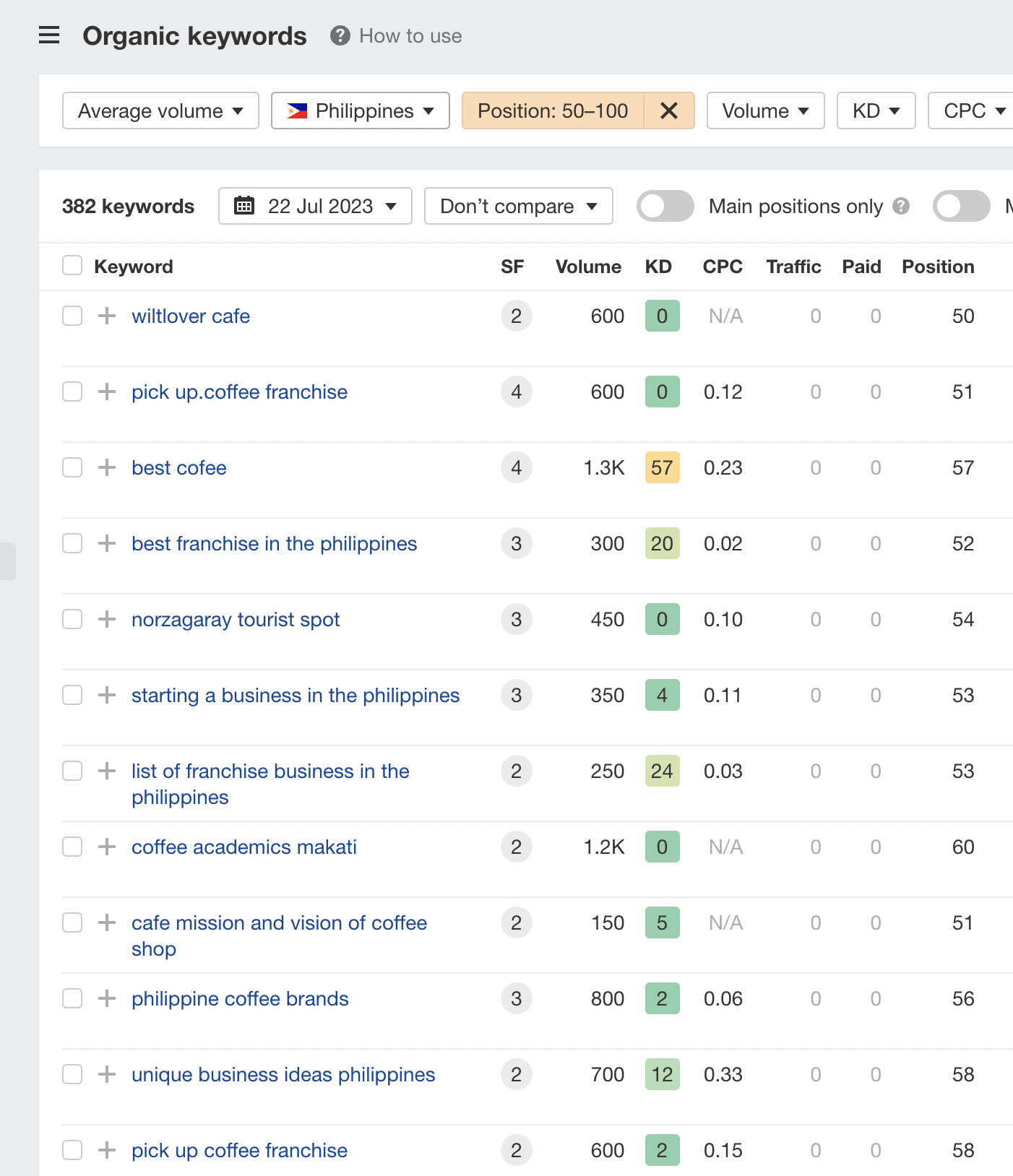
You can also use Google Search Console for this process.
Performance - Search Results - Pages - Queries - Rows per page (100)
Assess if you need to include an additional section or text to your existing page to make it deserving to also rank for this newly found keyword or if you would need an entirely new page for the topic alone.
For instance, I use this process to find keywords in my coffee shop business guide where it gets visibility (impressions) but aren’t getting many clicks from searchers.
I went to Google search, assessed the top rankings pages, and saw what pages are currently ranking for. This gave me an idea of the type of page I should create new or a specific section I could add to my existing page.
For example, “How much capital to start a coffee business” may need an entirely new article to publish, which I could use as a supporting page to my parent topic, “coffee shop business”. Build more topical authority by internally linking the supporting page to the parent page.
8. Add rich content to category pages.
Most eCommerce category pages serve only as product listing pages that don’t have much content that search engines would use as semantic signals to determine the context of those pages.
One best way to rank your category (collection pages for Shopify) is to add at least 500 words of rich content.
A short description before the product listing describes what the collection page is about. And below the product listings, sections you can use to add content that can help increase conversions.
One example is answering objections and questions your target customers constantly have about the products.
You can also include FAQs (Frequently Asked Questions) and answer them with direct answers. This would also help your category page to steal some of the featured snippets available for long-tail commercial keywords.
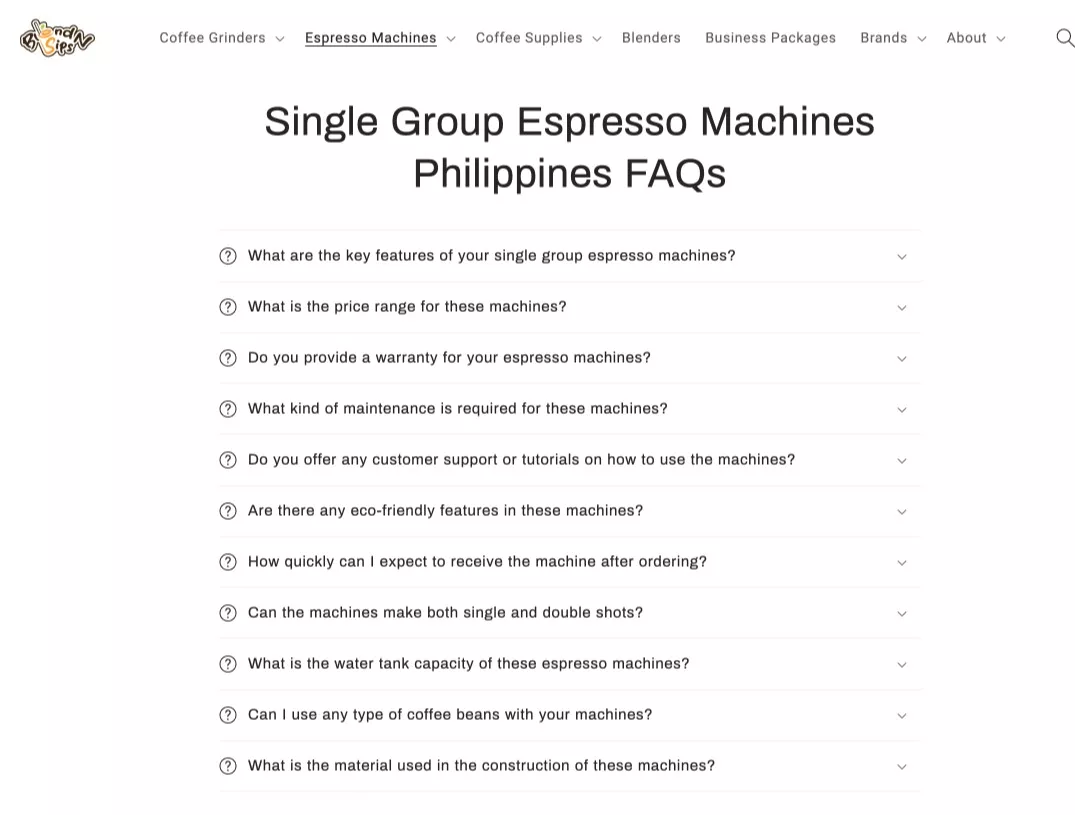
By making your page rich in content, you build the site’s topical authority and help Google better understand your content theme, thus giving you the advantage of ranking quickly for more competitive commercial keywords.
9. Scale link acquisition through active industry authors.
Relationship building is an integral part of any link building campaign. By strengthening connections with like-minded individuals, thought-leaders, and industry personalities, you can gain a cumulative advantage in acquiring brand mentions and links from higher authority sites.
Engaging with active industry authors is one of the best ways to scale up link acquisition. These are content contributors to multiple websites with established author portfolios, recognizable to the publications and audiences they served with their content.
You can find these active guest bloggers and ask if they want to collaborate with you for a mutual partnership agreement.
Offer a substantial opportunity so that both parties can get links for their websites. You include contextual links on your future guest posts and other websites, pointing to the guest blogger’s client site. While the active author would give links to your website from their future guest posts.
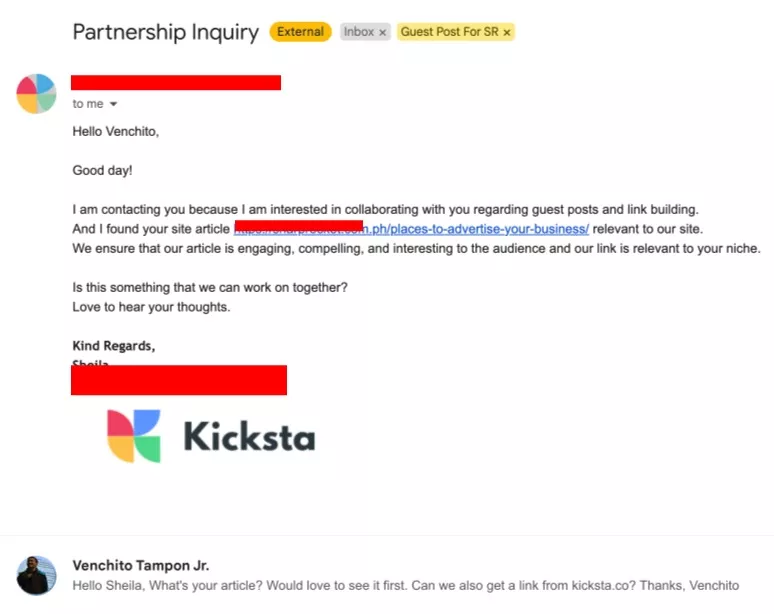
Exchanging contacts with a list of sites from which you have benefited can help leverage existing partnerships in scaling content-based link building.
10. Rank content for People Also Asked Questions
Blog posts are the easiest way to get SEO quick wins. By publishing informational content to answer commonly asked questions related to your product or service, you can initially rank for long-tail queries in your industry.
PAA (People Also Asked) questions can be found using Ahrefs’ Keyword Explorer - Questions.
You may use SearchResponse to collect questions relevant to your topic and see them ranked based on popularity.
There is also a ChatGPT-generated tool to give you the top PAA for a particular search query, along with the automated answers but on its improved version. See this StreamLit PAA tool.
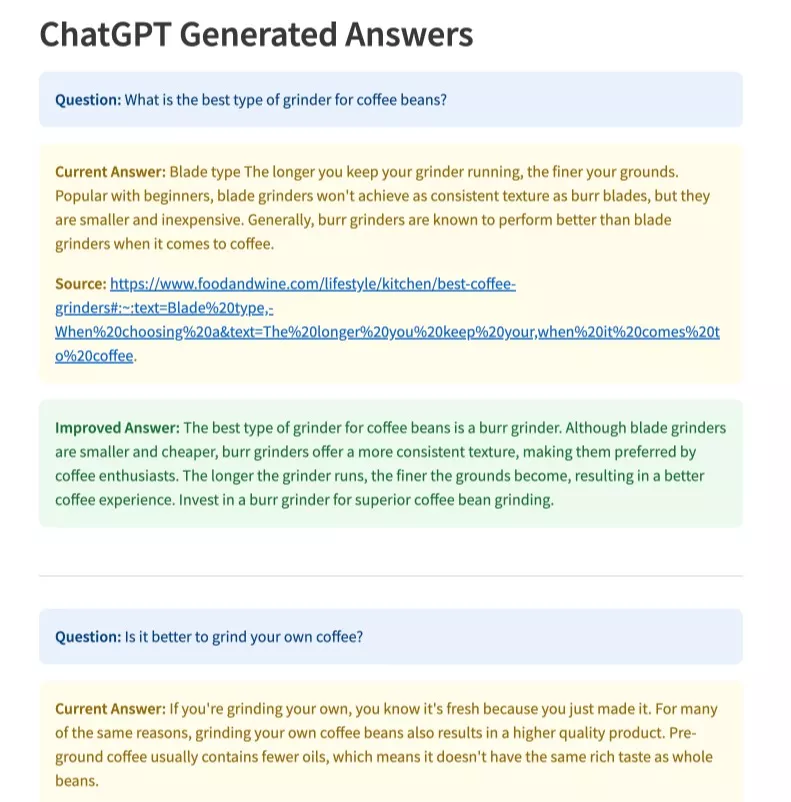
Final Thoughts
By focusing on SEO quick wins, you’ll gain initial significant results for your SEO campaign. You can make results for your clients without relying too much on substantial resources or budgets.
Do you want to scale organic traffic? Contact SharpRocket to learn more about SEO services, link building services, and content marketing services.
SEO Quick Wins FAQs
What are quick wins in SEO?
Quick wins in SEO refer to optimizing existing pages and creating new, SEO-optimized pages to achieve maximum impact. Focusing on both aspects can improve your website's visibility and rankings in search engine results pages. Implementing these strategies will help you quickly gain traction in your SEO efforts.
How can I get SEO results fast?
To get SEO results fast, you should implement these 15 quick SEO wins. By optimizing your website, improving site speed, conducting keyword research, creating high-quality content, and building quality backlinks, you can rank higher on search engines and drive more traffic to your site.
What are the top 3 SEO strategies?
The top 3 SEO strategies are keyword research, content marketing, and on-page SEO. These strategies will improve your website's visibility and organic rankings. You can enhance your website's performance and attract more organic traffic by conducting thorough keyword research, creating valuable content, and optimizing your website elements. Consider these strategies to boost your SEO efforts.
Does SEO show quick results for a business?
SEO is a long-term strategy that usually takes 3–6 months to yield noticeable results for a business. It's important to remember that SEO is a continuous process that requires ongoing effort and optimization to maintain and improve search rankings. Patience and persistence are vital to seeing the full benefits of SEO for your business.
Scholarship Links: How to Do It Right
Getting scholarship links to your website has been a practice in the link building industry for many years. It has been used by hundreds, if not thousands, of SEOs worldwide.
While most have successfully gained their desired number of resource links from scholarship pages, some people still can't find true value in adopting the strategy for their link building campaign.
This may not mean scholarship links have no value but show that these are less valuable than any other links in the website's backlink profile. There are also ways in which a scholarship link building campaign does not fit a business.
3 Ways People Incorrectly Use Scholarship Link Building
1. NICHE AUDIENCE
If your brand targets a specific audience (customer service representatives or neurologists), you may not find enough niche scholarship pages about customer service or neurology.
There is, of course,, another way to use scholarship link building to your advantage: to go abroad with your targeting — create a scholarship page for business students or medical students, for example.
If you do that, your scholarship links may be less valuable for your business. Relevance is extremely important, so I recommend you use highly relevant links for your scholarship program.
2. WEEDING OUT HIGH SCHOOL PAGES
Your scholarship program has its own requirements for students - i.e. the company that offers the scholarship will only accept applications from college students.
When starting a scholarship program for link building, I found SEOs not catering to college and high school students, which is fine if it's a personal reason. However, if you can target both, you'll increase your chances of collecting more scholarship links pages than usual.
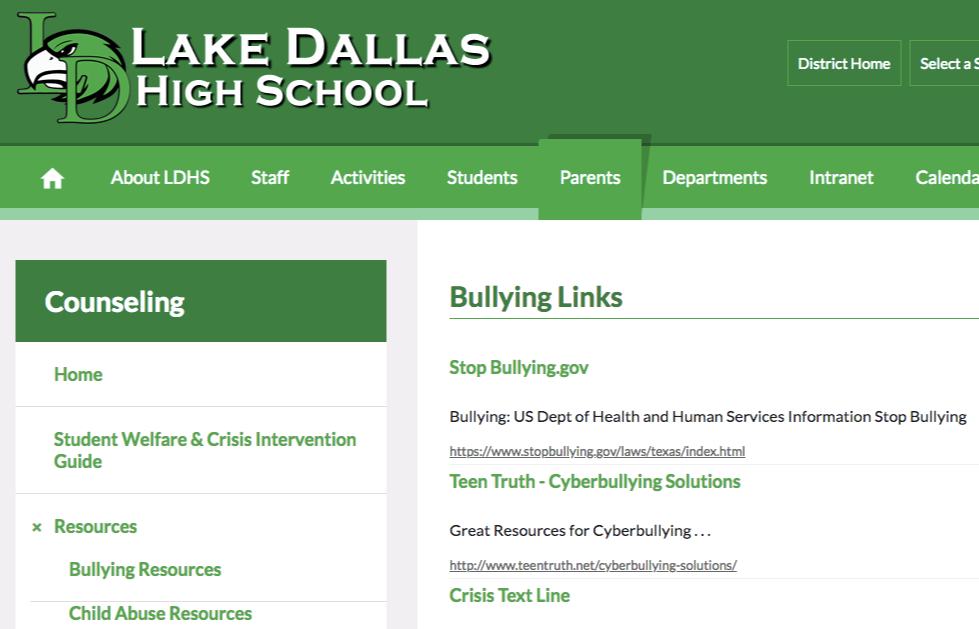
If you already have a scholarship program that targets high school students, you may add to your link prospecting list new high school scholarship pages by searching for them using the following search queries:
- site:.us ~resources "high school" scholarship
- site:.org ~resources "high school" scholarship
- site:.net ~resources "high school" scholarship
- site:k12.ny.us ~resources "scholarship"
3. NO FILTERING
It's easy to get lazy and collect any scholarship pages you may find.
That's not how you increase your response and conversion rates. Spend a few seconds checking the scholarship page if it's worth reaching out based on obtainability.
Assess if the page links out to other scholarship programs by commercial websites. Whose audience does the scholarship resource page cater to? If it caters to law students and your target is just medical students, acquiring a link from the page is impossible.
Alternatives to Scholarship Links
Not all businesses can utilize scholarship link building as part of their link acquisition arsenal, so there are alternatives to going for the same kind of audience - students and teachers. They are usually the people you'll be conversing with to get links from .edu and high school pages, and they should own the email address you're contacting for a link request.
Here are some alternatives to scholarship links that can improve the quality and quantity of your backlink profile.
1. EDUCATIONAL RESOURCE PAGES
I've covered this in my post about do follow backlinks, and this has been a valuable strategy for tapping a resource type of page that is not mostly getting pitched by SEOs and webmasters.
Building backlinks from primary schools is simple. It only requires an educational content piece that addresses a need of a student in terms of a subject topic and behavioral concerns.
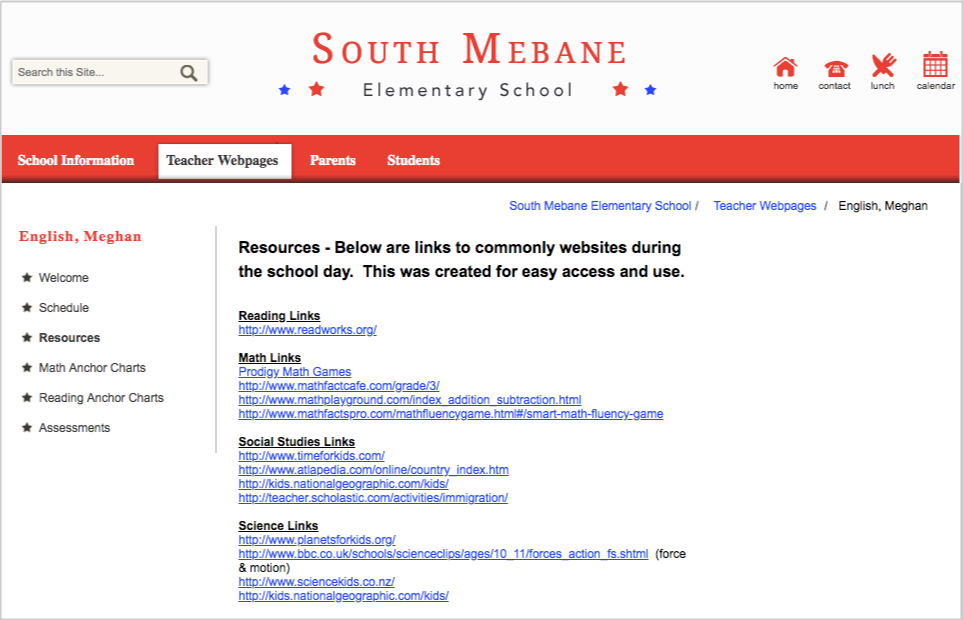
You can also serve teachers with your teaching content (e.g. ESL content piece) that can lead you to earn links from teaching and curriculum pages.
2. LOCAL HOUSING RESOURCES PAGES
One local link building tactic that is worth investing your time and effort in is acquiring links from local housing resource pages.
Whether it is a summer housing or off-campus housing page, it is highly valued to get a link that can generate exposure to brands these pages linked out to. It's a semi-automated lead generation since these pages directly recommend rental offerings available within an area.
If you're in the real estate industry, i.e., a local apartment brand, or a housing or rental service company, you can take advantage of such a strategy by targeting these local housing pages.

These terms can help you start with your link prospecting process:
- “Off-campus” housing [city] “resources”
- “Student housing” [city] “resources”
- “Internship housing” [city] “resources”
3. COLLEGE TOWN BLOGS
Students have their own network of blogs (not the student blogs of .edu websites), by which they get some help from their school advisers.
I've found that college town blogs are looking for unique external contributions. These blogs are co-owned by students from different universities.
It's not like run-of-the-mill guest blogging, where you can pitch any generic content you can think of. You have to glance and read at least a few recent articles published on the college town blog to get some knowledge about what topic works best and can resonate with their target readers.
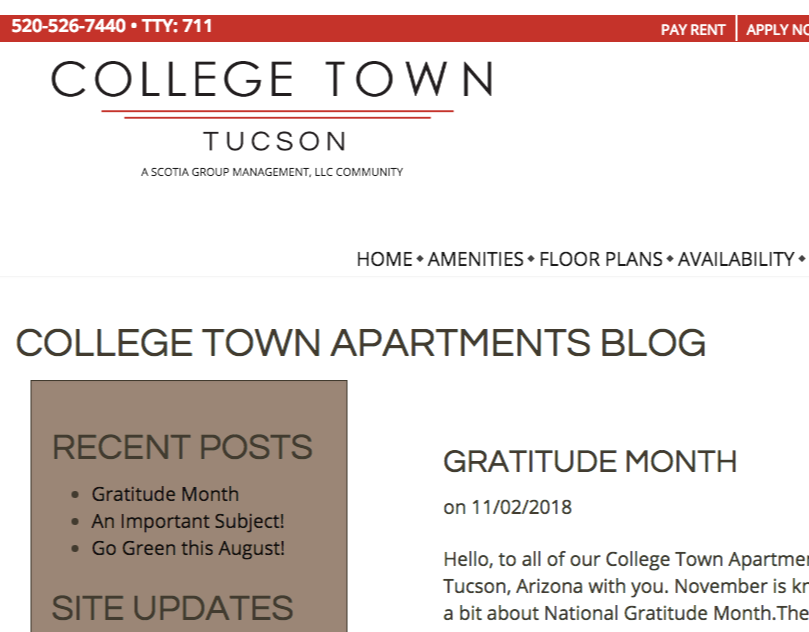
Aside from editorial links from relevant blogs that accepted your guest contributions, you can also easily submit your content works to the college town blog to get another link and diversify your backlink profile.
If It Doesn't Work, Try Another One
The good thing in the SEO industry is that we can all experiment on what type of links we will acquire for a particular website — allowing us to reflect and assess results from our past and current link building campaign.
While doing so, we can take another approach and see if another link building strategy that hasn't been abused much can work for us. Through testing, hard work, and proper strategy, one can discover a tactic that can work effectively year after year for a link building campaign.
Scholarship Links Frequently Asked Questions
How do I find hidden scholarships?
To find hidden scholarships, start by utilizing online search engines and scholarship databases such as Fastweb, Scholarships.com, and Chegg. Additionally, contact your school's financial aid office, local community organizations, and professional associations for potential scholarship opportunities. By casting a wide net and staying proactive, you can increase your chances of uncovering hidden scholarships.
Is Fastweb scholarship legit?
Yes, Fastweb scholarship is legit. You can trust that all the scholarships you find on Fastweb are 100% legitimate and reliable options for funding your education.
What is the largest scholarship database?
The Fast Web Scholarship Search offers the largest scholarship database with over 30 million registered users. As the most accurate and popular free scholarship search site, it provides students extensive opportunities to find financial aid for their education.
Is scholarship com a legit site?
Yes, Scholarships.com is a legitimate organization that offers scholarships and financial aid resources to students. Their website is trusted and widely recognized in the education community, making it a reliable source for finding scholarships.
Skyscraper Technique Link Building For SEO
The "skyscraper technique" by Brian Dean of Backlinko has reached its peak popularity because of its easy-to-follow process. Yet, it has produced effective results for most people who executed the methodology.
Of course, not all have reaped the fruits of their labor. Some have missed the objective of building and earning organic links through their skyscraper content (as well as ranking for keywords/search terms that might impact their overall campaign).
Here are reasons listed by Ross Hudgens why the Skyscraper technique may not be working (or can fail):
- Assuming skyscraper content (10x content) is an output of volume, not quality.
- Assuming content's ranking performance on search is solely based on its own quality, not who it comes from.
- Quality of content is realized by the volume of effort put into the creation, not by the value it provides to its users (e.g. definition of terms queries requires mediocre yet succinct content, not bigger content piece, to satisfy its users).
The aforementioned reasons do not disprove the effectiveness of the "skyscraper technique".
With proper strategy and thorough execution of each process phase, I guarantee you can hit your business objectives with the skyscraper strategy.
In this post, I'll share samples of my workflow and thought process - from content writing and production to the extensive content promotion of skyscraper content.
How to Use Skyscraper Technique?
Here are four simple steps to use the skyscraper technique by Brian Dean to get more backlinks to your website:
- Start by identifying frequently-searched topics.
- Ensure that there are many pages to link to ranking pages.
- Strategize how to outcompete link-worthy content
- Pitch linkers and influencers
1. Start by identifying frequently-searched topics.
Use keyword research tools (like Ahrefs' keyword explorer) to find topic phrases that have substantial search volume. The data should answer the question, "Are there enough people looking for the topic?".
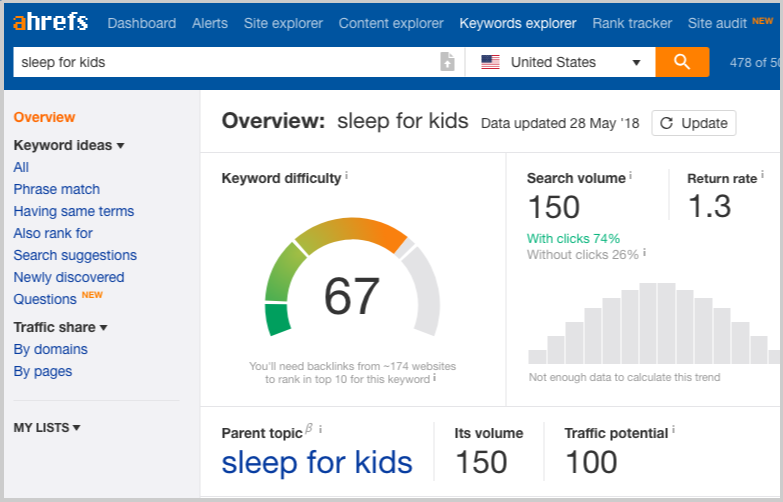
Continue doing your research by looking for keyword variations. These keyword variations can help expand your content's reach when included in your content piece (as they can help your page rank for secondary keywords and other long-phrase keyword variations).
AutoSuggest and Related Search Phrases (located below every search engine results page - SERPs) are handy features of Google that can help you find keyword variations of search terms.
Tip: You can use Ahrefs' Questions feature to discover related questions (which you can later select and include those you can answer in your content asset).
2. Ensure that there are a substantial amount of pages to link to ranking pages.
Get an idea of the linkability of the topic by looking at the first few pages of search results. See how many linking opportunities each page obtains (with Moz, you can glance at it quickly).
3. Strategize how to outcompete link-worthy content
During this point of the process, you can choose to proceed in either of these two directions:
- Create the content on the linkable topic and make it better than the first ranking pages for the target keyword/phrase.
- Choose one among the ranking pages, check if you can feasibly do better than it, and produce a more comprehensive content piece.
Whether you choose option 1 or 2, the mindset should be by the original Skyscraper process: find link-worthy content, make something even better, and reach out to the right people.
For this case study, I choose option 2.
I've found one niche website that ranked for the key phrase, "sleep for kids," - which is a microsite of an industry organization, the National Sleep Foundation.
When we reviewed the website, it only had 50~ indexed pages. Not all of these pages have valuable information about the main subject area (a content gap we can fill in the industry).
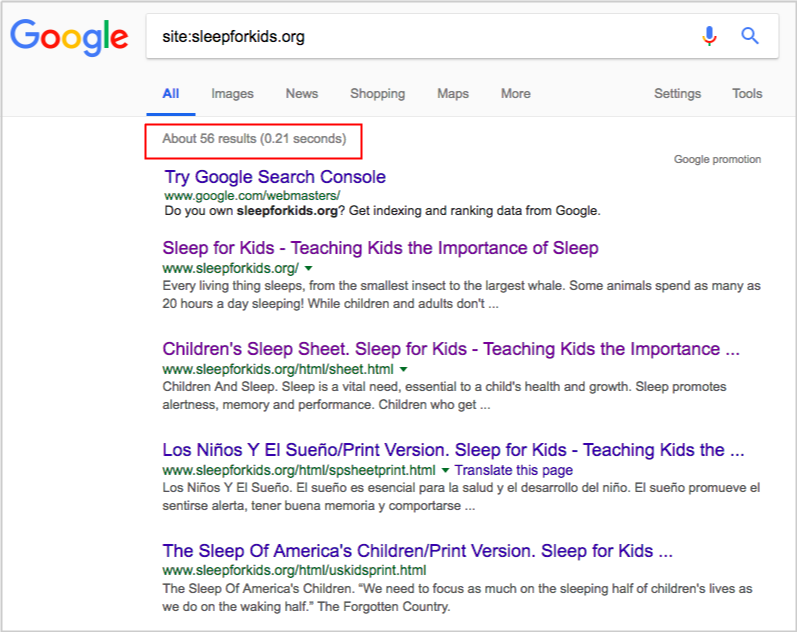
This leads us to choose this website as our starting point for creating the 10x content.
This opportunity of discovering a topic-focused site rarely happens - but if you've found one, it is best to consider the following things:
- How long does the site hasn't been updated?
- How many pages does the entire website have? Are they all under the same subject area?
- Are there any important topics not yet included that you can cover on your own content asset?
Strategize how to outdo the link-worthy content by creating an outline to visualize the outcome of your own content piece.
Ensure you look for important points not mentioned in their content. You can use Quora and Reddit to spot frequently-asked questions and cross-check them with their content (to see if those topics have been integrated).
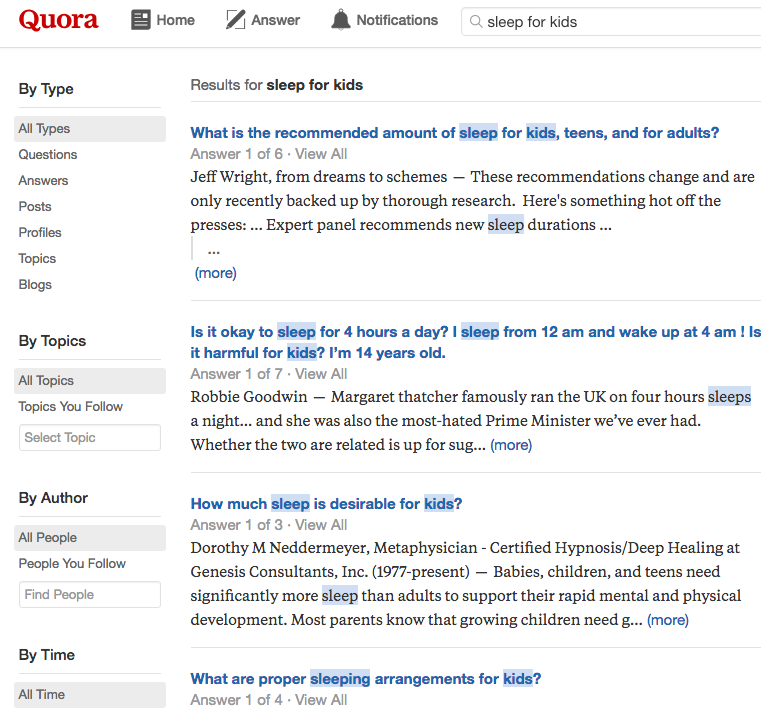
Increase chances of ranking your content piece in search by optimizing it for other secondary keywords that your competitors have included in their content.
You can use Cognitive Content Assistant tool to identify the exact keywords your content is missing and keywords you should use more often or less (in the case of keyword stuffing). Their Content Performance metric shows how likely your content is to be ranked higher.
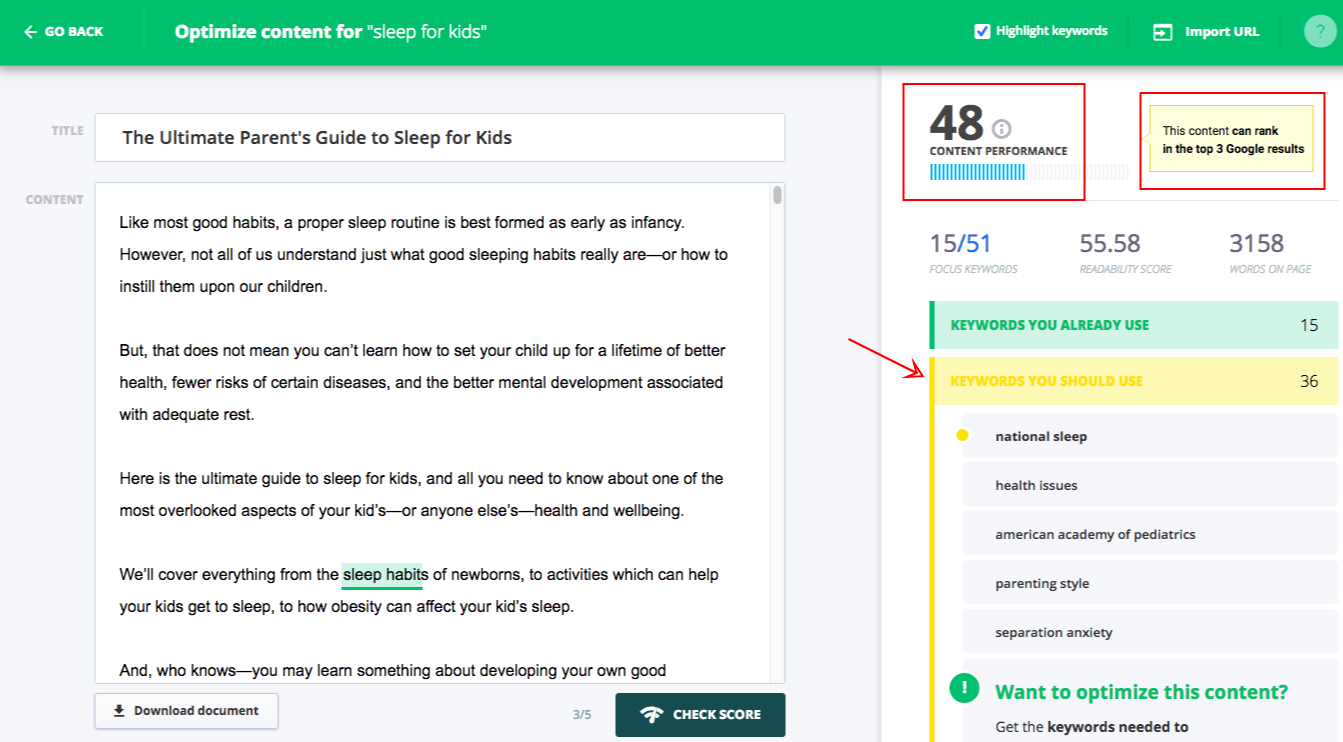
Moreover, incorporate any of the following content formats better to enhance the utility of your own content piece:
- Visual asset (turn interesting data points into a remarkable image)
- Case studies of your own (or of other entities/personalities you've asked permission to share on your own website)
- Audio or videos that better explain important points of your subject
- Interactive tools or elements to improve content consumption
For example, we heavily invest in infographics for our client's content assets only if data points are more valuable to present visually.
For example, the question found on Ahrefs' Questions feature (how much sleep for kids) can be best answered by gathering data points and turning them into infographics.
You can easily these other content formats to other sites or leverage them as guest blogging content (see guestographics).
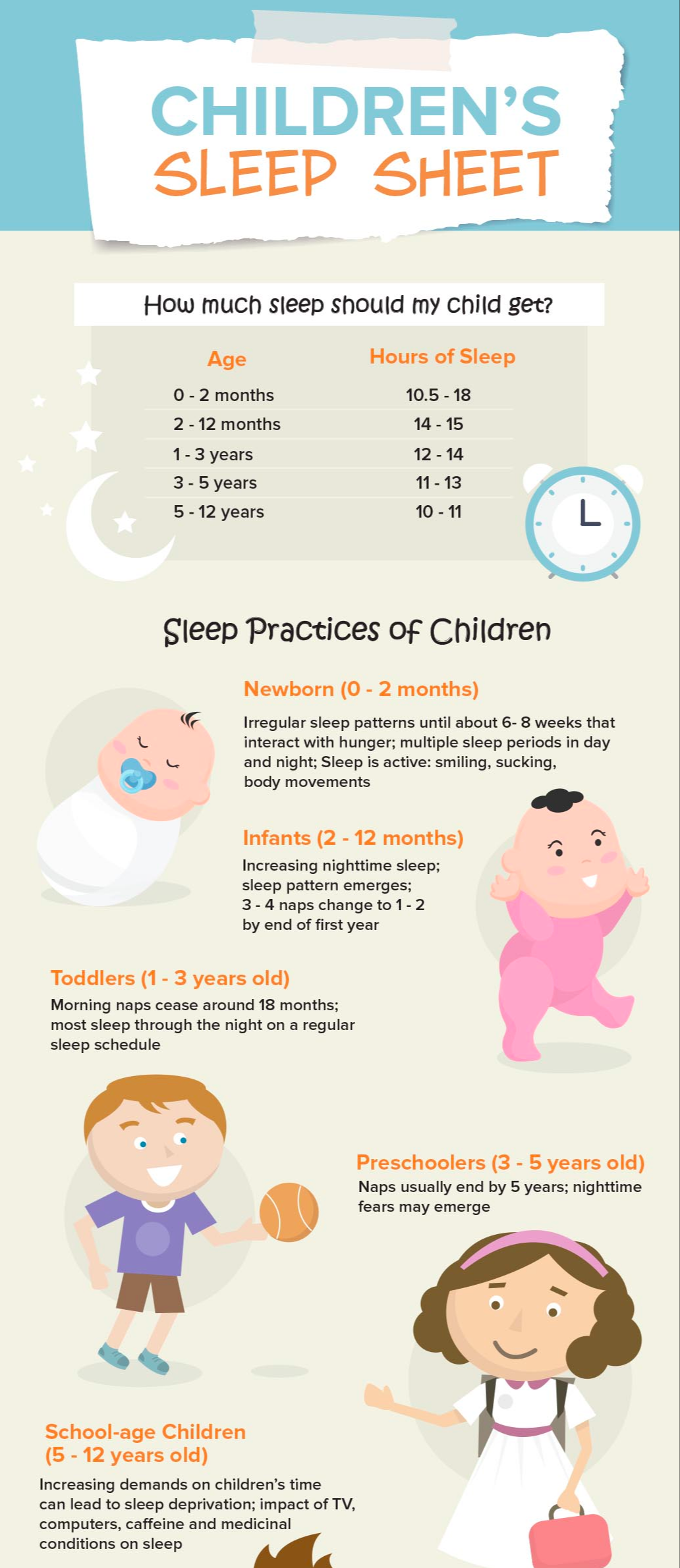
Overall, invest in making your content asset more valuable than your target link-worthy content (and other competitors' content).
4. Pitch linkers and influencers
Start reaching out to people who've linked to your competitors' content.
Invest time in crafting catchy and effective email subject lines to increase your outreach campaigns' open rate (as well as response rate). Here are some useful tips by Giselle Navaro (from her latest outreach article on SearchEngineLand).
1. Be specific about the format of your content

2. Mention the site when it matters

3. Convey the email's purpose.
4. Pitch your content to journalists in their language
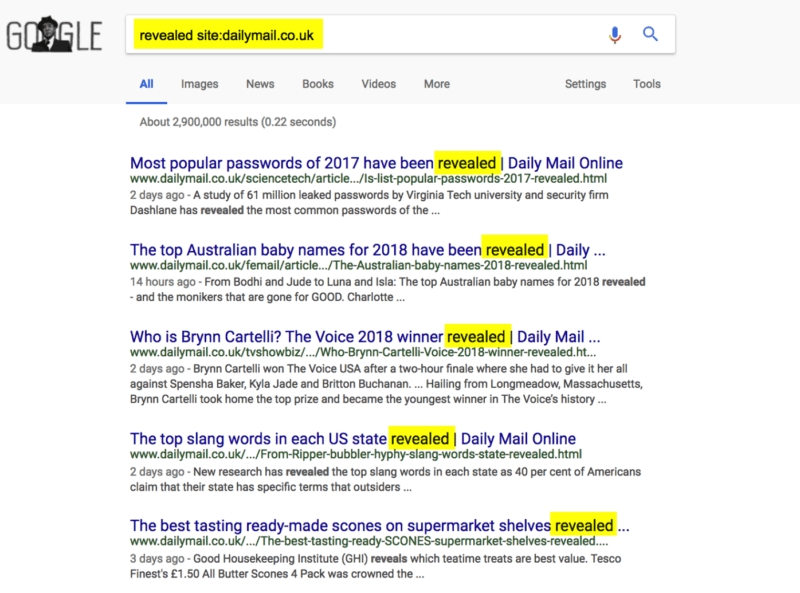
5. Choose a journalist’s headline as your subject line when following up
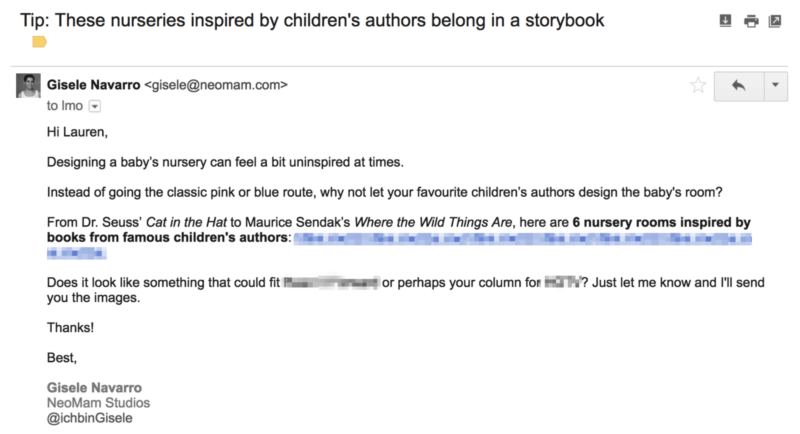
If it's a resource page you're trying to get links from. You can approach outreach by suggesting your content to reference their links page.
Another value proposition to make is to tell them about any broken links on their resource page (if you've found any) and propose your content piece alongside non-competitor content as replacements for their defunct links.
This outreach activity is included in another link acquisition process. Read our broken link building guide here with easy steps to follow.
Outreach Process in Action
Going back to our case study - sleep for kids guide, we've reached out to .edu librarians, other link curators, and webmasters who have linked to the competitor's content.


We further looked for other industry bloggers interested in including our visual asset to compliment their existing articles' content.
Then, acquire high-quality links:
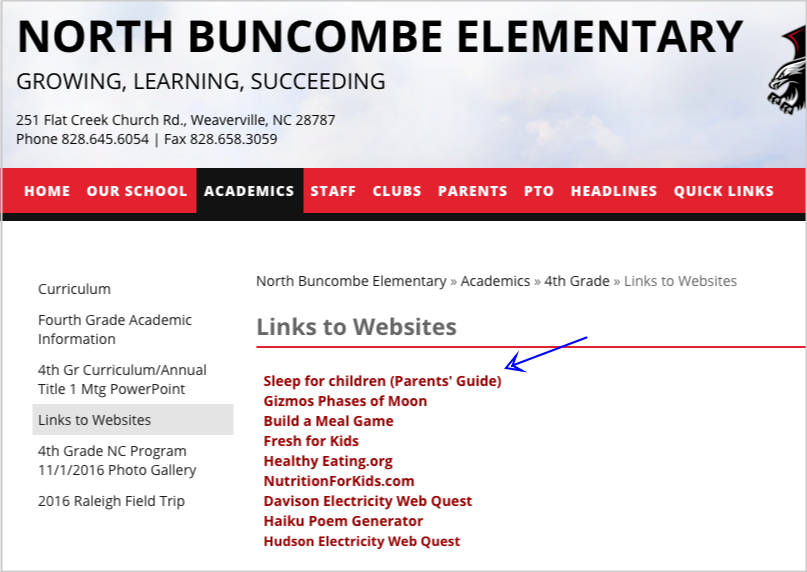
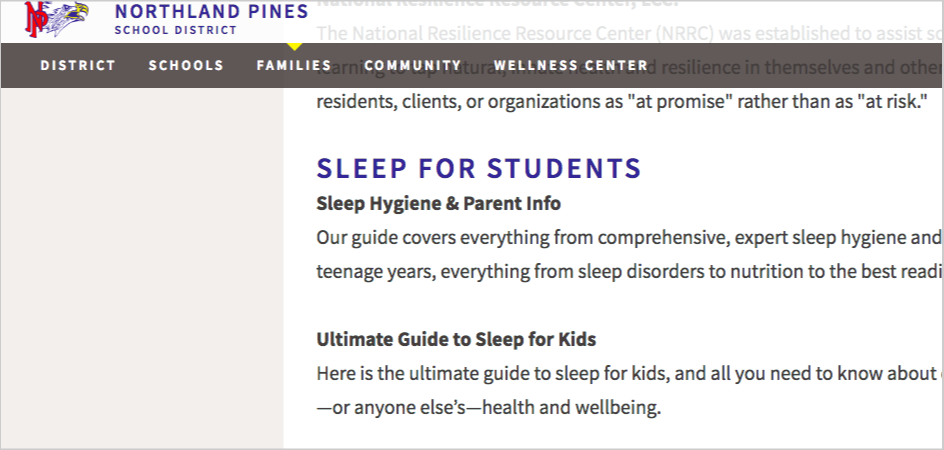
Securing links from these sites is only the first step. The relationships built with these webmasters can later translate to add relevant links to your other future content assets.
Need help with your skyscraper campaigns? Check out our link building services
Skyscraper Technique Link Building For SEO
What is the skyscraper technique in SEO?
The Skyscraper Technique is a renowned SEO strategy that enhances high-performing content and replicates its backlinks. Brian Dean coined the term because he believed people are naturally drawn to superior quality. This technique aims to drive more organic traffic and improve search engine rankings.
Does the skyscraper technique still work?
Yes, the skyscraper technique still works well in digital marketing. However, achieving success requires more than just a simple answer. To generate results in 2023, follow the tips I shared above to explore how to implement the technique effectively and provide valuable insights into its workings.
What is the skyscraper growing method?
The Skyscraper Technique is a popular link building strategy where you improve existing high-performing content and acquire similar backlinks to boost website traffic. It involves creating exceptional content, conducting competitor analysis, and contacting relevant websites for link building opportunities. Implementing this technique can enhance your SEO efforts and attract more organic traffic to your website.
What is the skyscraper technique in content writing?
The skyscraper technique is a content writing strategy with SEO in mind that involves creating high-quality, valuable content and reaching out to websites linked to similar but less comprehensive content. Offering a better version of the content increases the likelihood of them linking to your page instead. This technique is effective for link building and boosting your website's search engine rankings.
How to Find Competitors Backlinks
What is reverse engineering in SEO?
Reverse engineering (on link building terms) is the process of checking what a certain website has created or acquired from other pages outside their web properties (i.e. from another non-owned website).
This approach has been standard practice in the search marketing space, often executed at the initial phase of the link development campaign to get an idea of the types of links acquired by other websites (i.e. competitors).
Reverse engineering starts by identifying who your competitors are. Some link developers fail to get results from the process because they immediately dive in to export backlink reports to any web page ranking for their target industry keywords.
Identify the right competitors to ensure you’ll derive quality insights and reports from your reverse engineering activity.
Types of Competitors to Get Backlinks From
1. Generic Competitors
These are competitors who directly compete with your products or services.
For agencies, it is best to ask your clients who their competitors are before or at the start of working on their link building campaigns.
In most cases, their competitors are the ones they are competing with for industry head terms (check their head term on the meta title on the site’s homepage).
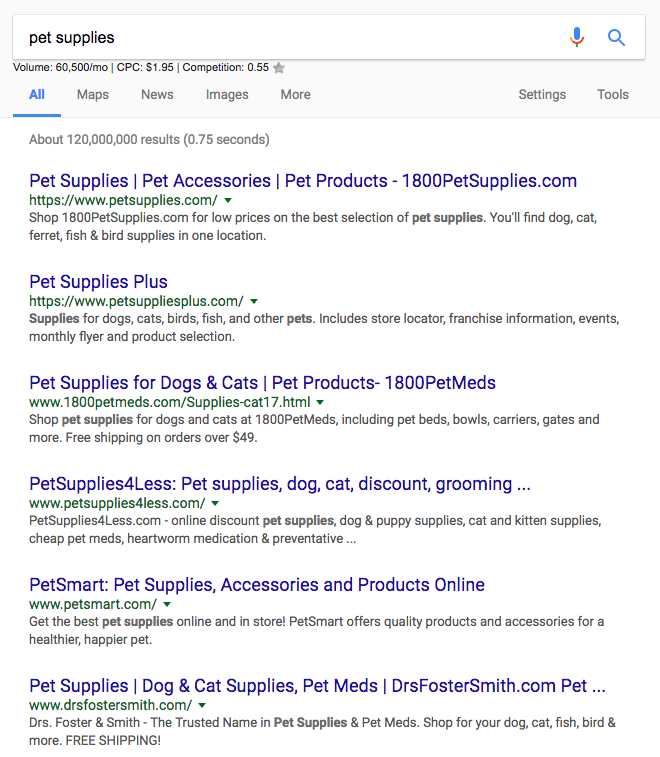
When using Ahrefs, it is best to use the domain-level feature to only look at all of the links to a competitor’s domain.
There’s also an option to remove links pointing to subdomains (e.g. blog.domain.com), but this would filter out some relevant link opportunities, so I recommend you choose the “domains with subdomains” level.
2. Category Competitors
These are pages competing for secondary keyword terms (categories). For example, if you’re selling incontinence products, these are your category competitors who are competing for the industry term “incontinence supplies":
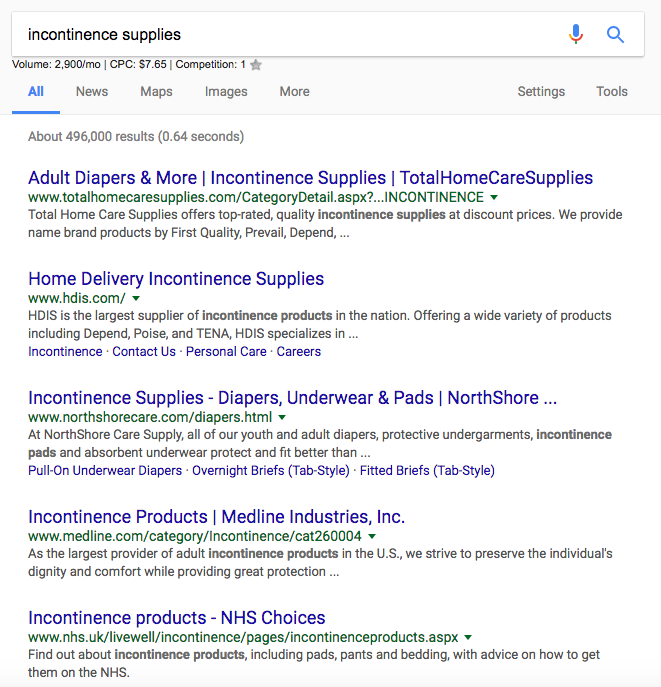
Category competitors include sub-pages of big content assets, such as www.domain.com/guides or www.domain.com/glosary, with linking chapters or definitions beneath.
Use the Prefix level feature of Ahrefs site explorer to see all links pointing to a certain section/category of a competitor’s site (for example, www.domain.com/productcategory).
Maximize the aforementioned link building tool by identifying generic and category competitors with their “Competing Domains” or “Competing pages’ features. It shows sites or pages ranking for similar keywords to your domain.
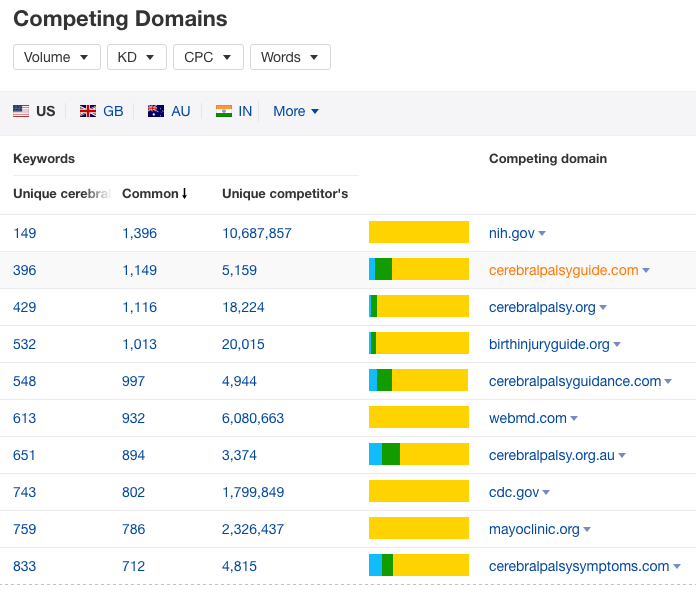
Tip: Remove large domains and exact-match domains from your lists. These sites may add noise to your analysis. For the example above, remove sites like nih.gov and cdc.gov.
3. Content asset-specific competitors
These information-driven pages include web pages competing for “content asset” keywords (non-commercial industry terms).
For example, this “substance abuse guide for parents" competes with the following content pieces:
How to Find Competitors Backlinks
1. Use Co-Citation Analysis
One strategy I’ve been using quite often is prioritizing link opportunities based on the number of competitors they’ve linked to.
Coined by Garrett French, co-citation is when a single web page links to two or more related domains.
Co-citation analysis is a process of organizing domains or URLs by the number of outbound links to sites relevant to your content/site (for this discussion to your competitors).
The logic behind this is that if a page has linked to three or even five relevant sites, they’re much more likely to add a link to your content than a page linked to just one related page.
Here are the different options to execute co-citation analysis on your competitors’ backlinks:
Citation Labs Co-Citation Tool
This web product is freely available for Windows users. Here’s a tutorial video that walks you through how to use it.
Unfortunately, the tool only works for Windows users. For those who are using Mac, proceed to the second option.
Manual Co-Citation Analysis
If you haven’t grabbed a list of all your competitors’ backlinks, you can do so with Ahrefs or MajesticSEO.
It will leave you with several CSV files you want to combine into a big Excel spreadsheet.
For Mac users, the “Terminal” tool can merge all CSVs into one database.
Go to Applications - Terminal.

Pull up your Desktop by typing the following command and then pressing your “enter” key button: cd ~/Desktop (make sure all your CSV files are located in the same folder on Desktop).
Type the command to open the folder on your desktop containing all of your CSV files and press the “enter” button again:
For example, my folder is called “NetAddictionCompetitors” so I type this command: cd NetAddictionCompetitors
Finally, type in the following command to automatically merge all of the CSV files in that folder.
cat *.csv >merged.csv


You can read this quick tutorial by Trent of Watchman Advisors.
Remove unnecessary columns from the list and only remain the column for “Linking Pages”.
Next is to transfer it to a Google Spreadsheet.
Then create new columns for “Domains” and “Occurrences”.
Include this formula below to strip off the page URL to its root domain.
=IF(ISERROR(FIND("//www.",A2)), MID(A2,FIND(":",A2,4)+3,FIND("/",A2,9)-FIND(":",A2,4)-3), MID(A2,FIND(":",A2,4)+7,FIND("/",A2,9)-FIND(":",A2,4)-7))
Assuming the Linking page is on A2, this would be the formula (to be put into the B2 cell).
For the “Occurrences” column, insert this formula to check how many times a certain page URL has occurred in the spreadsheet.
=COUNTIF(B:B,B2)
Now you can sort the “Occurrences” column by descending order to display the highest to lowest number of occurrences.
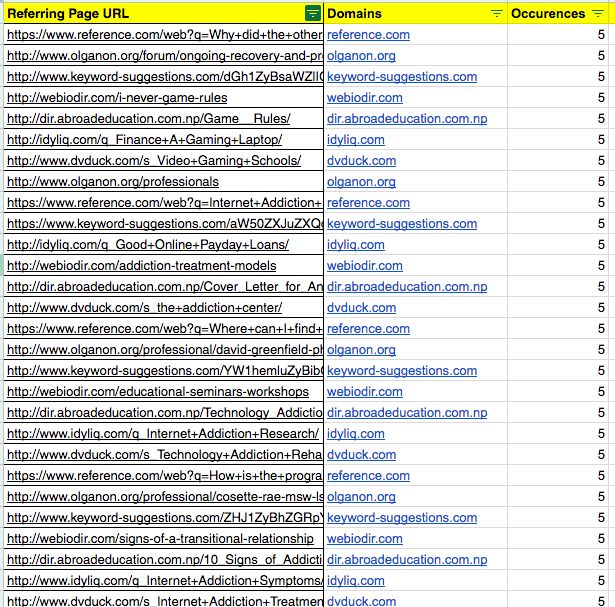
Resource pages, for example, linking to three or more of your competitors, have a higher probability of linking to your content when you pitched for link requests.
You are authorized to use their link intersect tool for link builders with a higher subscription plan than the Lite plan of Ahrefs.
Simply follow the process shared by Tim Soulo in this tutorial video:
2. Determine Link Approaches of Competitors
After getting backlinks from co-cited pages, the next thing you can do is analyze how your competitors were able to get links in your industry.
Check link types of their inbound links to assess their previous and current link building strategies.
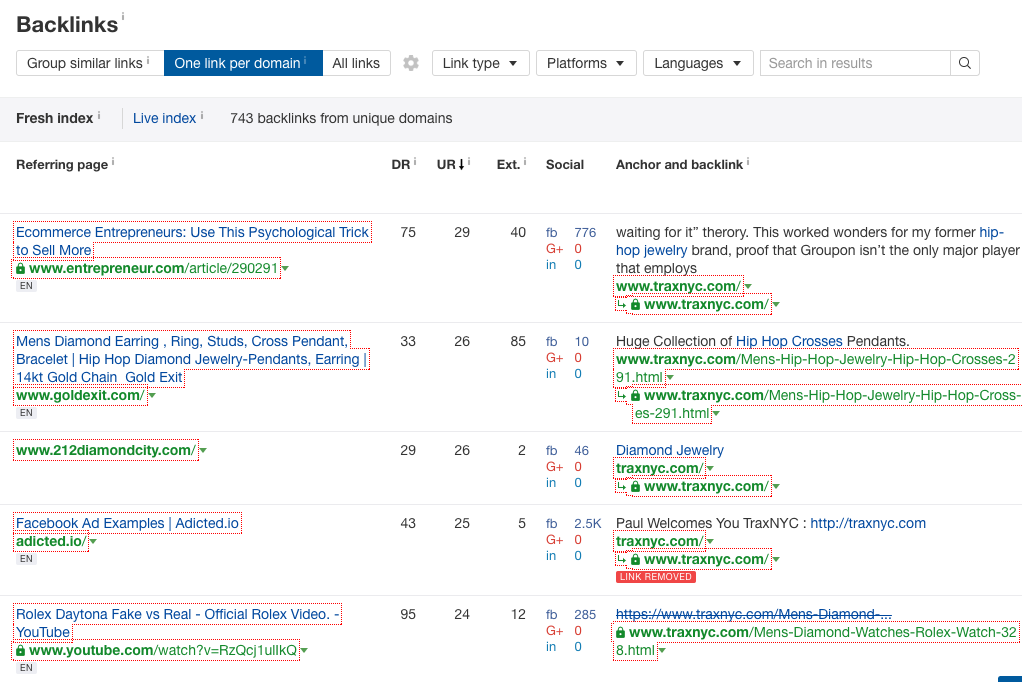
Filter links based on the following link acquisition approach:
- Submission-based (niche-specific and generic directories)
- Link requests (resource pages on .edu/.gov and other non-commercial pages)
- Content contribution (guest posts, sponsored posts)
- Earned media (interviews, references/citations)
You can quickly determine the linker’s approach by identifying “clues” on the page/site.
Submission-based
Submission-based websites like directories normally have “submit your page” or “submit your site” pages on their navigation menus.
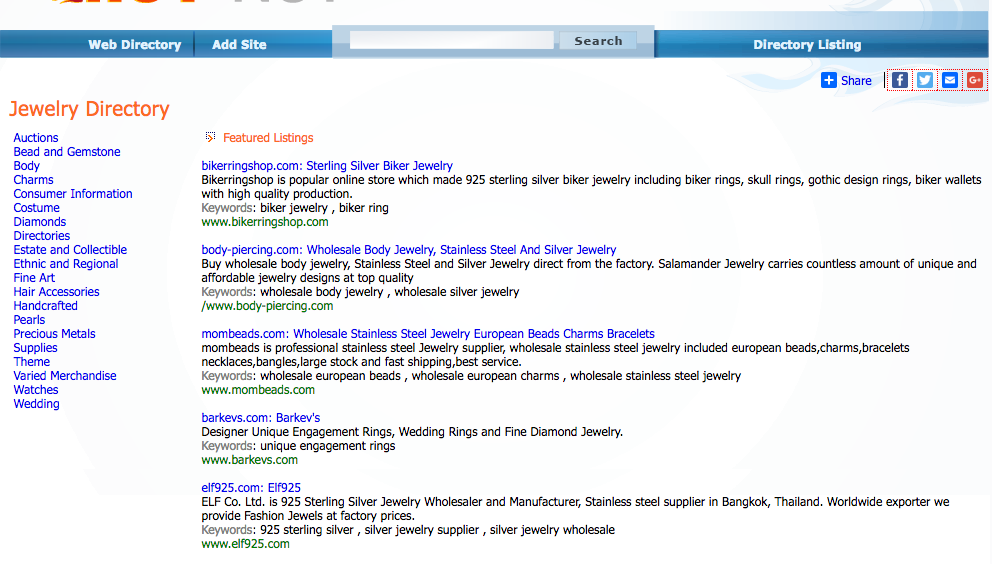
Supplying the webmaster with details about your website/blog is a requirement to get listed on their pages.
Link-request
Several factors that may indicate if a linking page (mostly in the form of a resource page) has been approached by a link request pitch are:
- Non-commerciality of external links - information-driven pages normally can be requested to be linked from a resource page.
- Affiliations - a professional organization may include a website in its resource page if it has been associated with/has been part of a certain group.
- Fresh prospects - resource pages with recently updated sections on the page are more receptive to link requests (and have higher chances of linking).
Here are a few examples of link-request resource pages.
Non-commerciality of external links
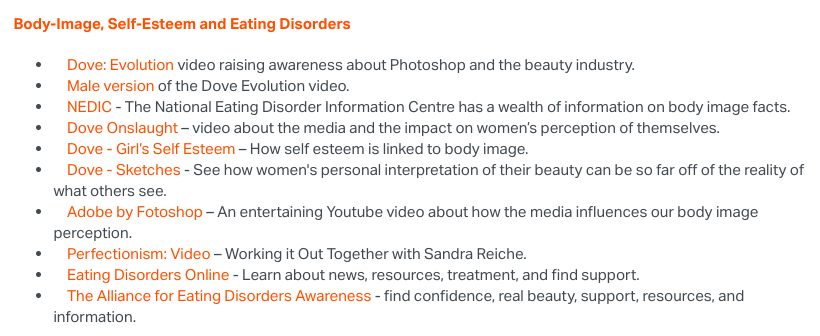
Affiliations
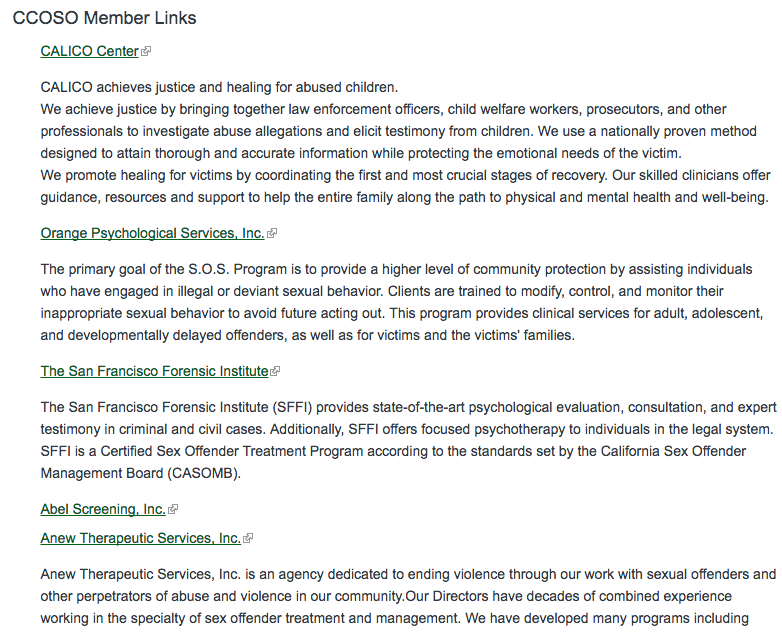
Fresh prospects

Tip: Use QuixApp lastmod command to check the page’s last modified date.

The fastest way to determine if you can obtain a link from a resource page is by checking the closest relevant section on the page and the types of links included in that section.
For example, a video gaming addiction for parents guide can be the best fit (highly relevant) in Mental Health and Addiction section.
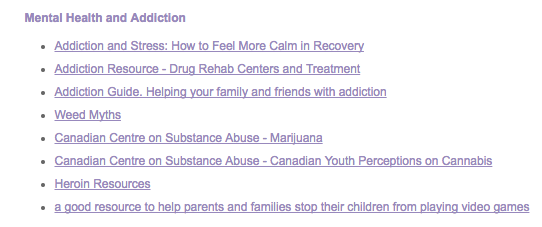
Tip: Use inbound/outbound and followed/no-followed overlay features of Mozbar to quickly check links’ attributes and point sources.
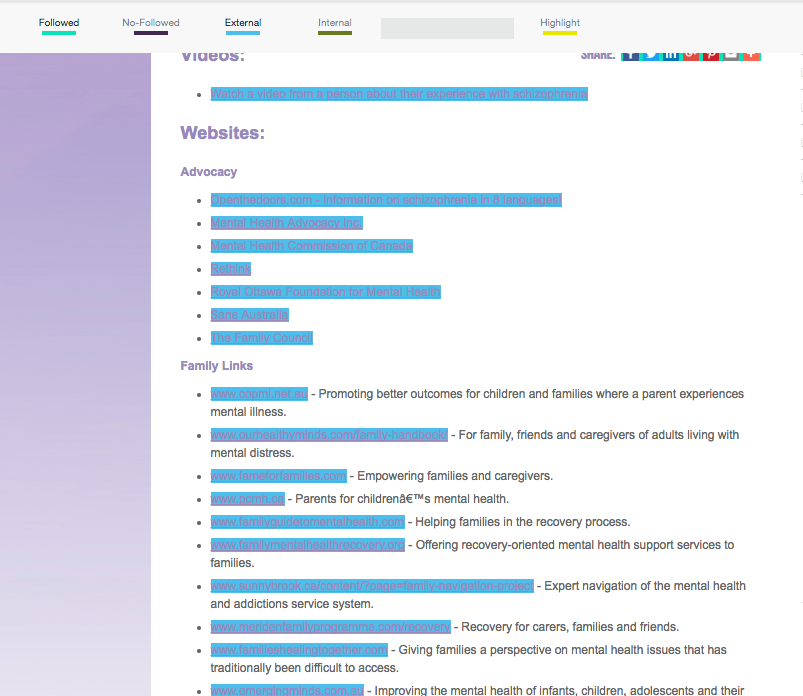
Content contribution
This is probably the easiest approach to spotting on, given that you only have to check if there is an author’s description with a link to another website (not the guest blog site itself) contextually placed within the blog post or author box.
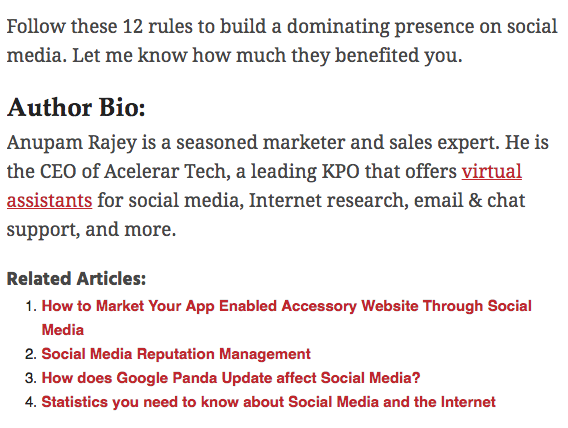
This could be in the form of a sponsored article or a non-paid guest post.
Earned media
Several things that may indicate if a link of a competitor has been earned organically:
- Exclusive interviews (e.g. podcast and individual interviews).
- Recommend lists of industry personalities, groups, brands, or tools
- Serves as a reference for further reading (voluntarily given)
- Link Roundups (group interview)
- Mentioning the brand to check as additional sources
Exclusive interviews (e.g. podcast and individual interviews).
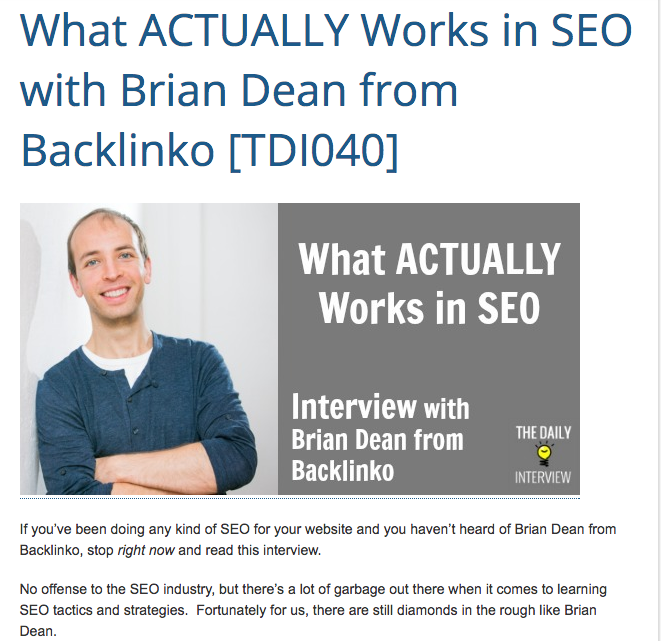
Recommend lists of industry personalities, groups, brands, or tools
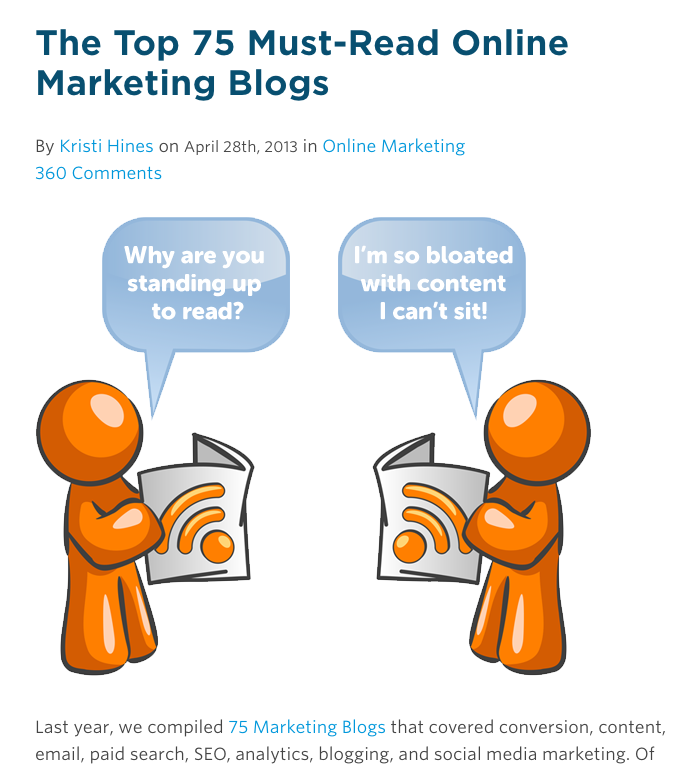
Serves as a reference for further reading

Roundups (group interview)
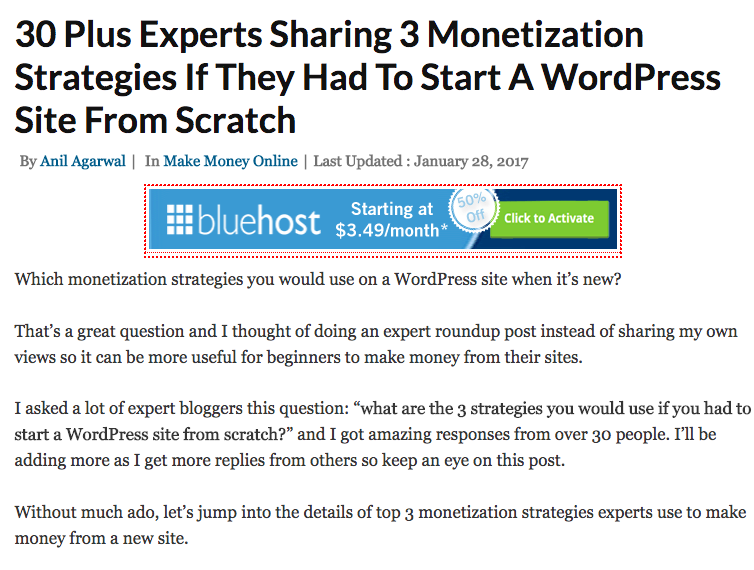
Mentioning the brand to check as additional sources
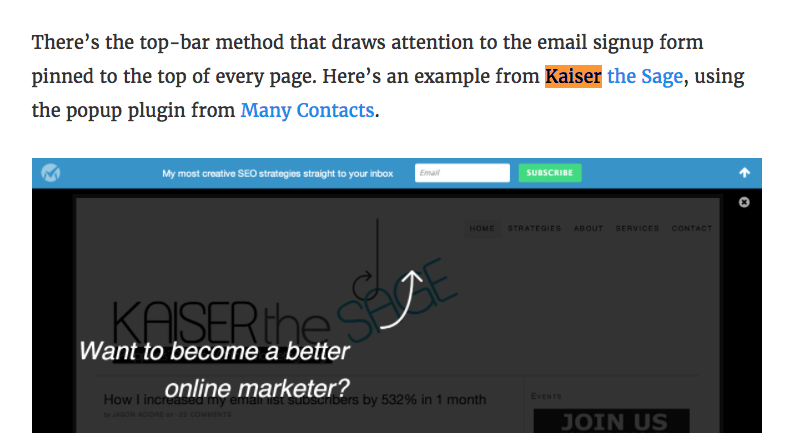
While not all links with the aforementioned indicators are perfectly naturally earned (i.e. interviews being pitched to a future guest), most of them couldn’t be replicated easily by requesting links.
3. Expand Link Lists with a Deeper Analysis of Link Opportunities
Creating a huge list of existing links of your competitors is the first surface level of link opportunities.
Expand your database of link targets by taking a deeper look at their other important link data, such as:
High-performing linkable pages
It is best to determine what content formats have proven effective for your competitors in garnering relevant links.
Sort the top pages of your competitor’s site by link growth (best by links feature of Ahrefs) to see what pages have received the highest number of inbound links.
This approach can help you get insights on linkable content formats your competitor has been focusing on - which you can replicate if you’re initiating a new content-based link acquisition strategy for your clients.
For example, WineFolly has consistently found success in obtaining links using infographics in the wine industry.
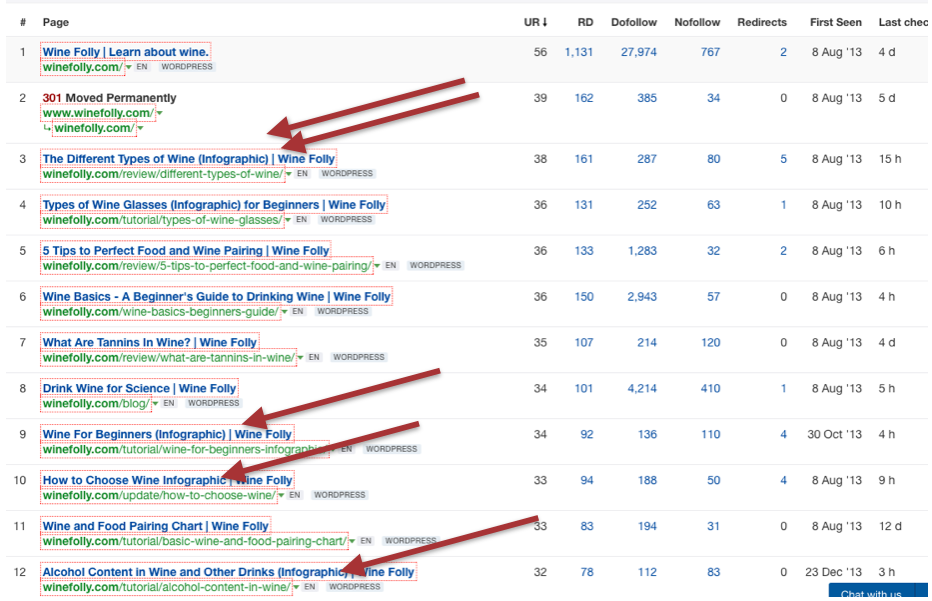
You don’t necessarily have to reinvent the wheel always, particularly for new websites you’re trying to build links to.
Pro tip: Always be on the lookout for your competitors' broken pages with lots of inbound links. Check if you can create a version of the page and do proper outreach to linkers of dead content.
Further reading: How to Build Backlinks Using Your Competitors’ Broken Pages
Recurring backlink sources
Websites that constantly send targeted traffic to a website through recurring backlinks (placed within different linking pages) are strong signals that search engines can use to reward them with better rankings.
Export link data of competitors and sort it by highest to lowest recurring backlinks (Total Backlinks column).
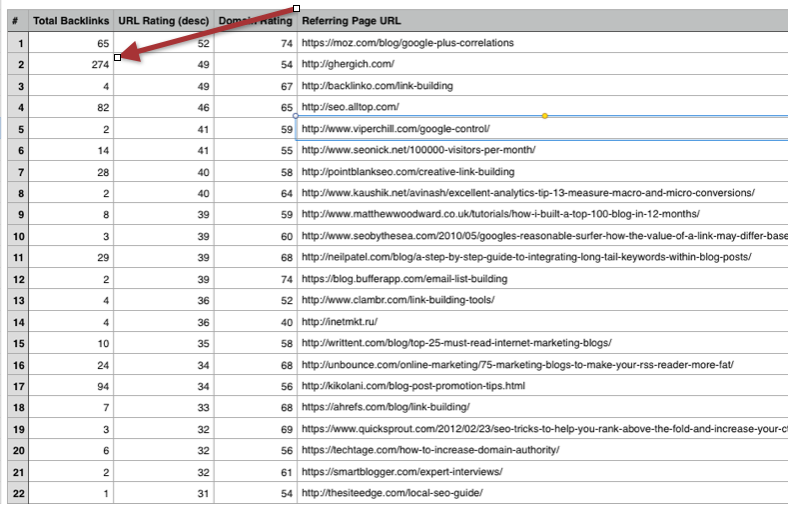
Repeat this process for all your competitors to surface regular linkers in your industry that you should start building relationships with.
Competitor Backlinks Frequently Asked Questions
How do you see competitor backlinks?
To see competitor backlinks, analyze their website URL using a backlink checker tool. This will reveal their site's authority and inbound links. Focus on the external backlinks for the best link opportunities. Additionally, check their popular pages to gain insights into their link-building strategies.
Should you search your competitors backlinks?
Yes, searching your competitors' backlinks is a reliable way to boost your website's SEO. By analyzing their best backlinks, you can uncover valuable insights into their SEO strategies and replicate their success for your own site. Competitor backlink research is an effective tactic to improve your search engine rankings and drive more organic traffic.
What is the benefit of competitor backlinks?
Gaining benefits from competitor backlinks is advantageous for your business. It helps you tap into untapped markets and gain insights into your competitor's customer base and product strategy. Identifying untapped prospects allows you to capitalize on new growth opportunities.
How do you steal backlinks from competitors?
Focus on creating high-quality content, building relationships with other websites, and earning backlinks naturally through guest posting and outreach campaigns. These legitimate methods will help to improve your website's authority and visibility in the search results.
SEO For Plumbers: Advanced Guide
Doing SEO for plumbers isn't an easy feat.
Like any industry, customers' behavior in plumbing has changed significantly over the years. They've had what they call the "Google/Amazon mentality" of quickly researching for who pops up online when they research for potential companies to hire for. Prices, convenience, and other qualities of plumbing services are visible, and these can largely affect how customers book plumbing services today.
The idea is to get ahead of the competition, which is impossible online without search engine optimization. With proper activities in link building strategy and solid creative content marketing campaigns, one can drive potential customers, gain trust, and ultimately increase sales.
In this post, we will discuss link building for plumbing websites. This is a billion-dollar industry, so having conversations about creating content and getting links in the process is worthwhile.
How to Do SEO For Plumbers
Educate Your Audience With Your Content
This is very simple, yet many plumbing sites are stuck with producing landing pages, hoping to rank highly for plumbing keyphrases.
In last year's Jobber Academy's article on the state of the plumbing industry, Standley Genadek from Dirt Monkey University asserted,
“In 2018, don’t be an estimator or order taker. Be an educator. Be a partner. Take the time to answer questions, explain what it all means, what needs to happen, and exactly what the outcomes are that can be expected. Building that simple trust that—yes—you are someone who can be relied upon, takes price out of the equation.”
To educate your customers is to sell. You start your selling process by educating them the right way. They may not quickly book your plumbing services right after you teach them, but you gain their trust, which is strong enough to build your branding in the space.
I'm constantly on the lookout for potential content ideas in the plumbing industry, and here are the ones you should be creating:
- how to become a plumbing engineer
- how to become a plumbing inspector
- who invented indoor plumbing
- what is repiping?
Take a look at this example, "what is repiping?". It's a valuable topic for customers wanting to know what repiping means. A good rundown of the information that covers it is a good deal for your content writing strategy.
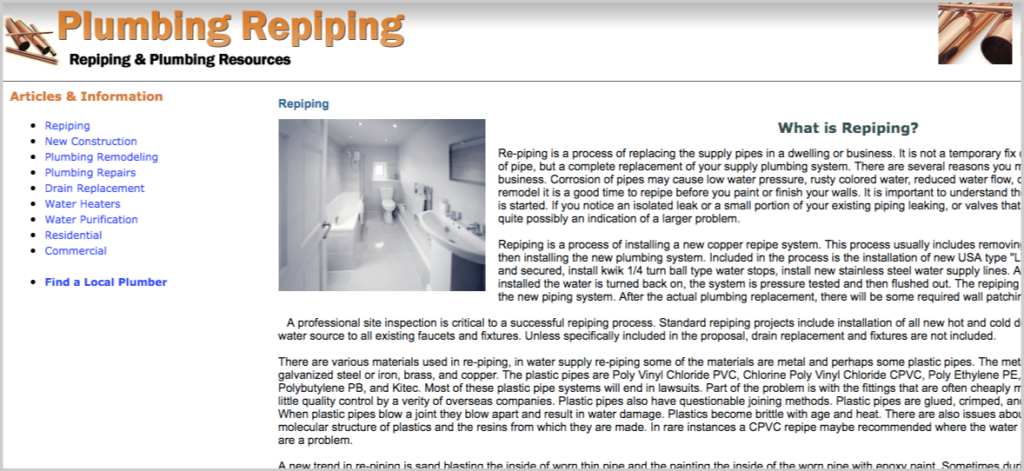
Start by identifying technical plumbing terms that people in your industry want to know about.
Create mini-guides for each phrase. Add other content formats like videos and visual graphics to support readers with other learning styles.
Spend time on keyword research. Keep finding content ideas that are getting traction in terms of search volume. One phrase, for example, is "plumbing camera". This isn't staggering at first glance, but this phrase has 1,400+ in search volume and has very low competition.
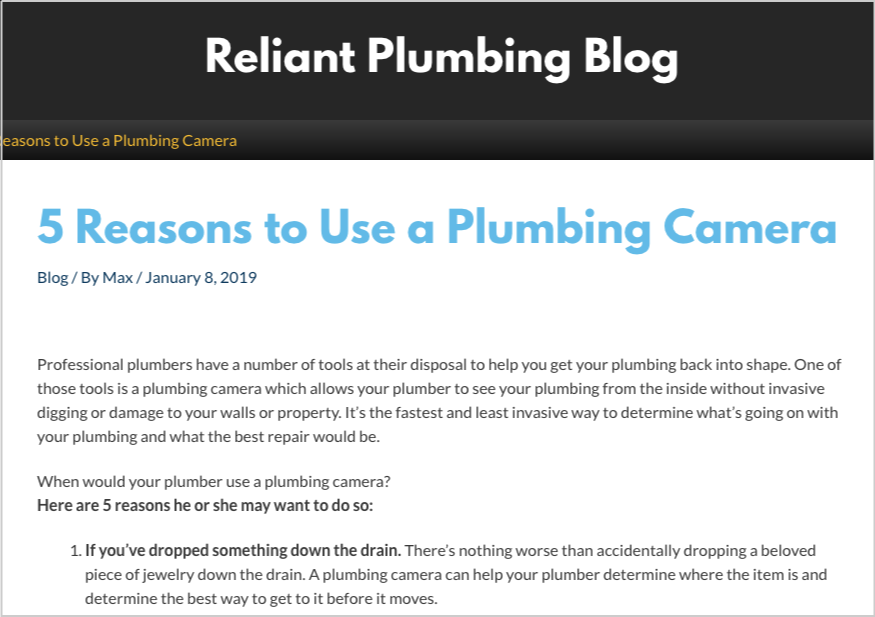
Find "Installation and Usage" Content Topics
Two content themes are aligned with your plumbing sites' content strategy: installation and usage.
In the plumbing content sphere, this pops up on every related site you can visit. The reason is simple: people want to do DIY activities at home. This may sound contrary to giving them information on the matter when they don't intend to book plumbing services in the first place.
This is often the counterargument by marketers working with plumbing clients. The idea may be contrary, but it only speaks of the earlier stages of content marketing without considering the effect this information on installation and usage has on people who've known and seen the content.
Overall, you can create content on any related subject to installation and usage. A few examples are:
- how to install shower plumbing
- pump installation
- how to fix leaks
You can create a funnel and capture emails from people reading your content on the above subjects. Educate them using an email series sequence and increase leads on your plumbing website.
Tap "Going Green" Linkable Market
There is a linkable market that fits rightly into the plumbing industry. That is, going green market. These are environment enthusiasts who go after a green world. Their interests include energy savings, recycling, and environmental restoration.
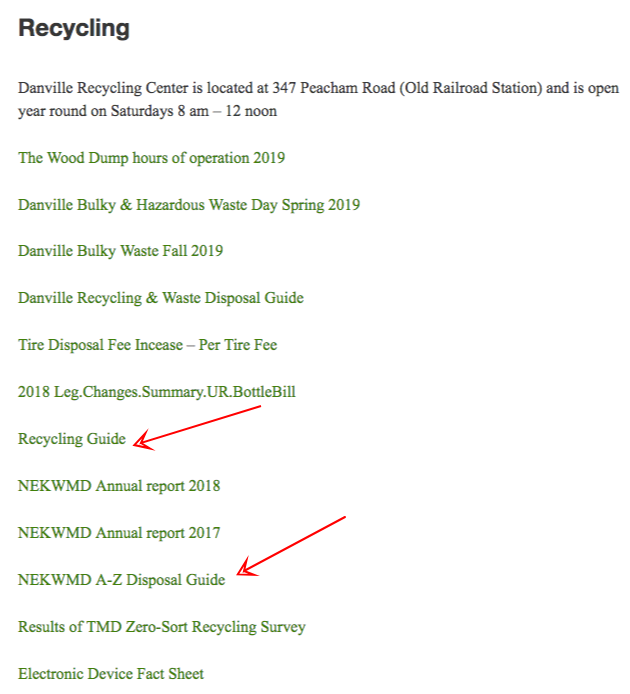
Creating content assets that speak to this linkable audience can increase your monthly organic links through resource link building.
Check Other Local Plumbing Websites For Link Building Ideas
Lastly, if you're running out of link building ideas, you can check plumbing websites in other local cities. There you'll find what sorts of pages they are getting links from.
For example, here's a linking page I've found on a backlink profile of a plumbing company in Texas.
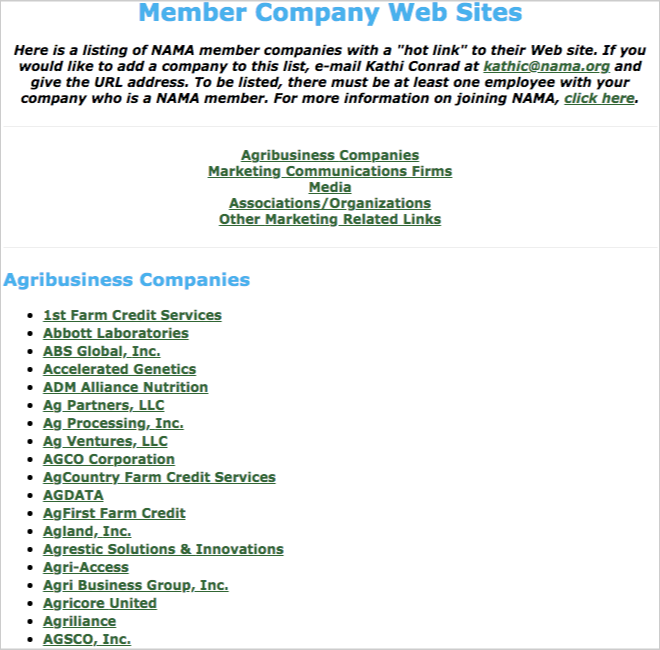
Now, there are pretty many links or resource pages that list external links. But if you look at the description, it says about a membership called NAMA. NAMA is a leading voice of the Ayurvedic profession (medical field).
What does it tell you? It gives you a link building idea of profiling your employees if they are part of any organization. Check these organizations if they have dedicated profiles for active members. Reach out to them and get authority links.
Fill Content Gaps
There are gaps in the plumbing industry that content marketers and link building can take advantage of. Make due diligence to uncover them in your content creation strategy through competition analysis using tools like Ahrefs. Serve the market, and it will serve you well in lead generation.
SEO For Plumbers Frequently Asked Questions
Why do plumbers need SEO?
Plumbers need SEO because it helps them reach potential customers actively searching for their services online. By optimizing their website and local listings, plumbers can increase their visibility in search results, attract more leads, and ultimately grow their business. Without SEO, plumbers may miss out on valuable opportunities to connect with customers in their area.
How do I advertise my plumbing work?
To advertise your plumbing work effectively, download a free plumbing marketing plan that includes strategies for online advertising, social media marketing, local SEO, and more. This comprehensive plan will help you reach a wider audience and attract more customers to your plumbing business.
What are 3 skills you need to be a plumber?
To become a successful plumber, you must possess three essential skills: problem-solving abilities, analytical reasoning, and attention to detail. These skills enable you to efficiently diagnose plumbing and piping issues, identify problems, and troubleshoot system failures. By utilizing these skills, you can plan projects, calculate basic math, inspect systems, and produce accurate estimates for project costs.
What makes a successful plumber?
A successful plumber isn't born overnight. To excel, prioritize customer service, and cultivate a reputation for reliability, honesty, and versatility. Delivering high-quality workmanship is key to differentiating yourself from competitors in the plumbing industry. Emphasize these traits to establish success in your plumbing career.

